The Poly
24 Church St, Falmouth : 01326 319461
The Royal Cornwall Polytechnic Society
What's On Calendar
Have a look at the calendar text here to see what's coming up.
Search results //
Your returned search results are below.
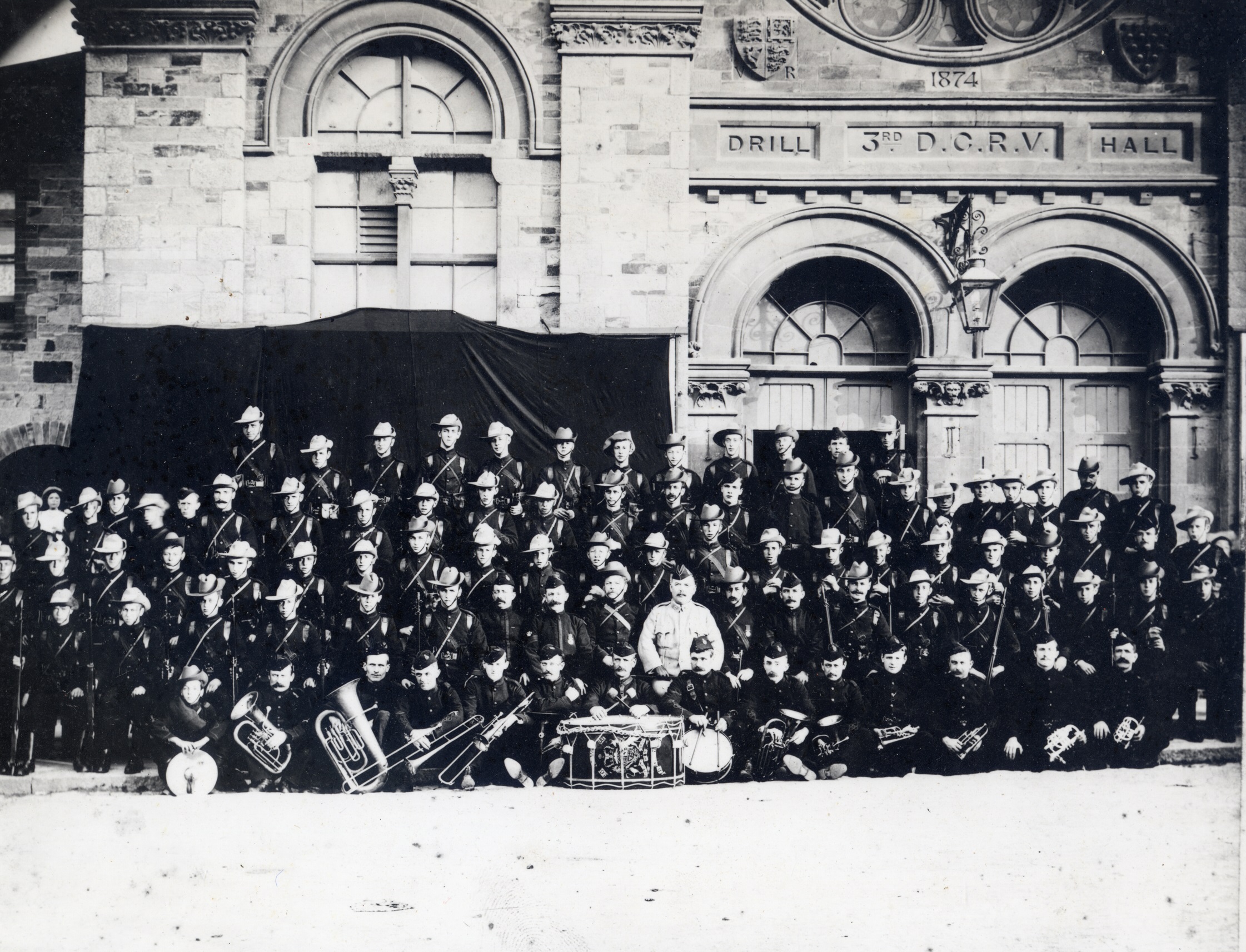
15 - Band outside the Drill Hall
This Drill Hall (now the Phoenix Cinema) was built in 1873 as the training centre for the 3rd Battalion of the Duke of Cornwall’s Rifle Volunteers. It continued to be a training base for the local Territorial Force both before and during WW1.
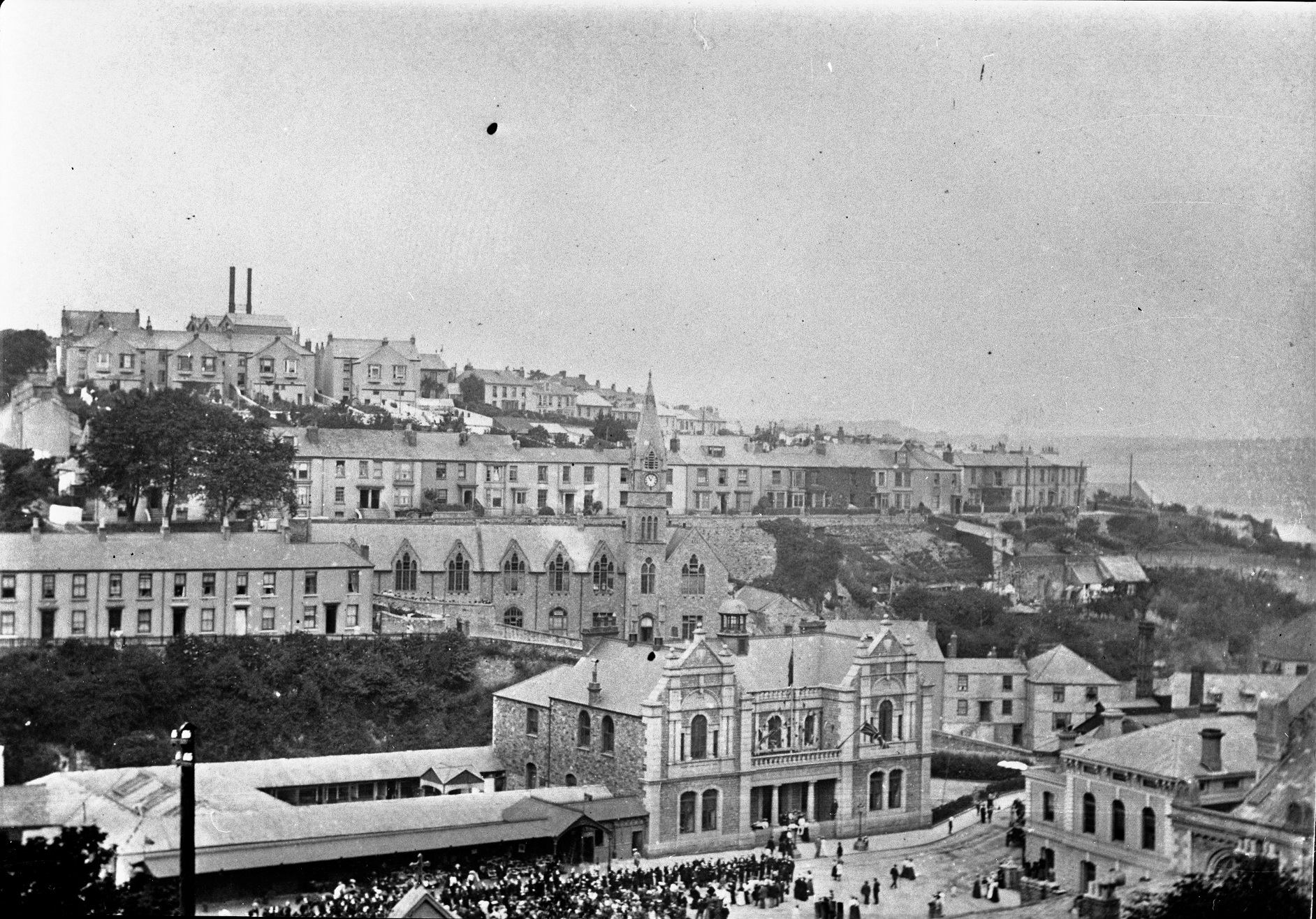
16 - The Moor from Wellington Terrace
Trevethan School (under the clock tower) was requisitioned in August 1914 for hospital use. A Market was situated next to the Passmore Edwards building. Every Saturday there was a stall collecting donations of produce and cakes for the patients at the Military Hospitals in the town.
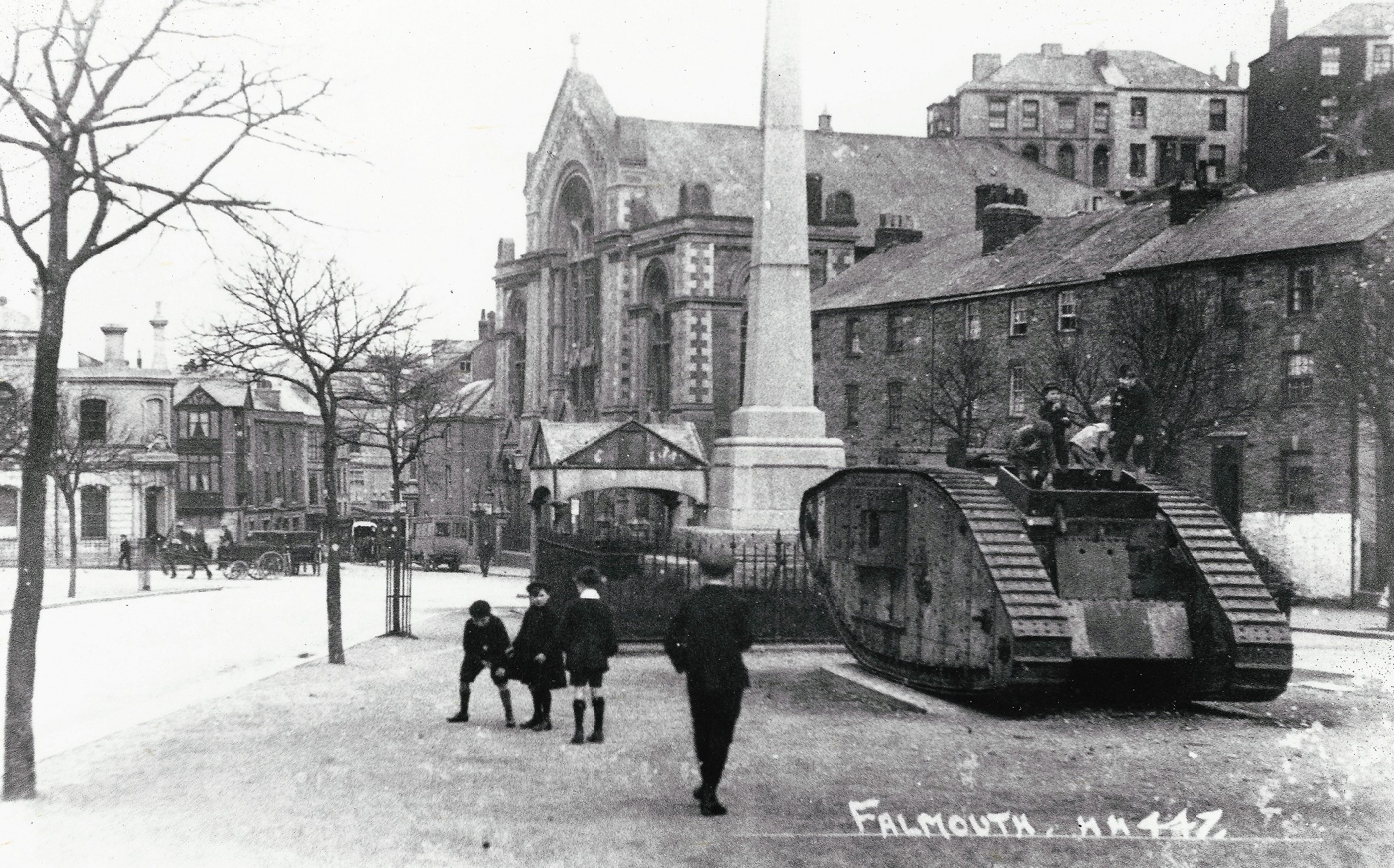
17 - WW1 tank on display
After the war, the town's efforts in buying Government War Bonds and Savings Certificates were rewarded by the presentation of a WW1 tank. It arrived by train in 1919, drove down to the Moor under its own power and stayed until 1927 when it was removed for scrap.
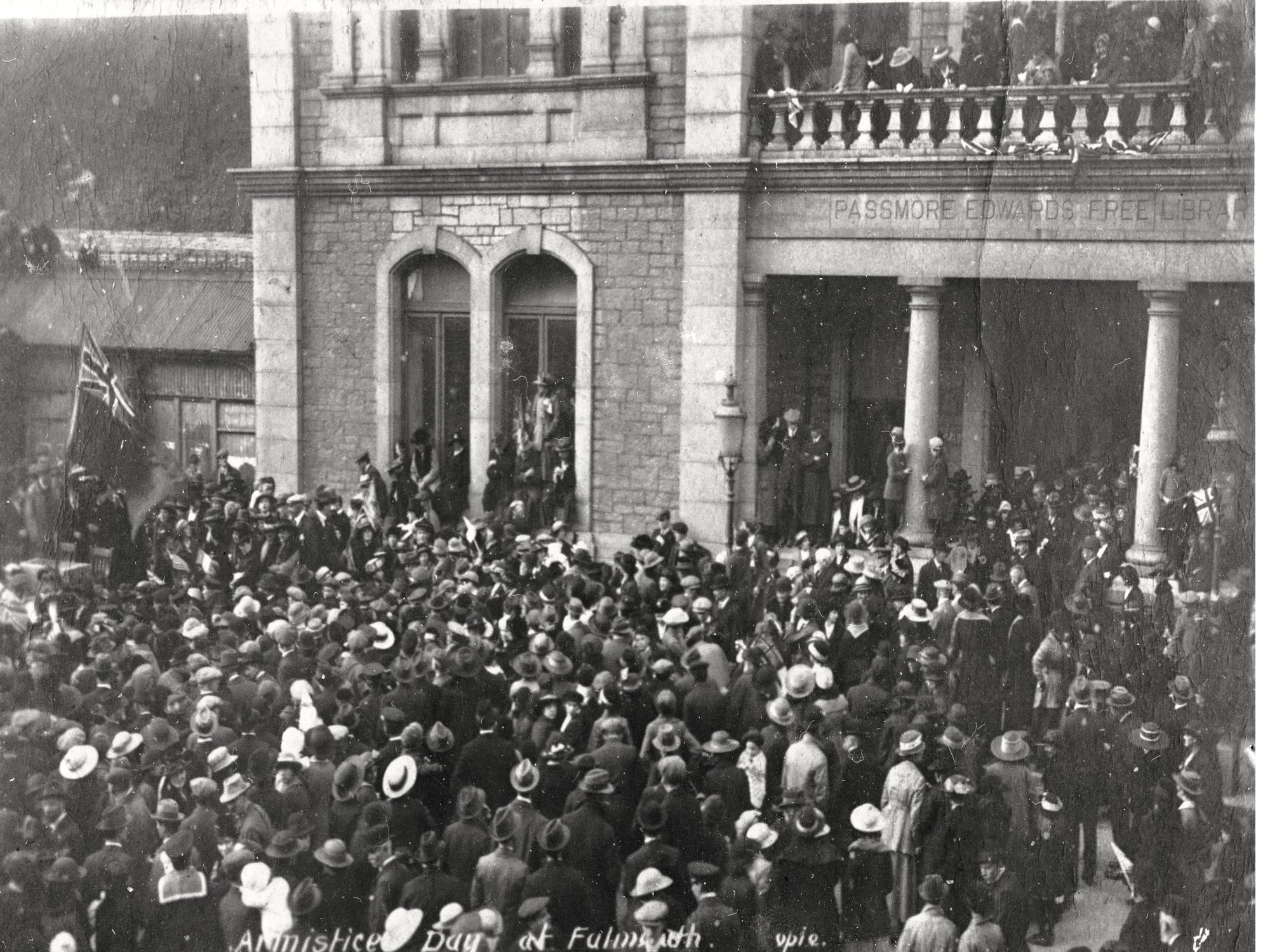
18 - Falmouth Moor on Armistice Day
The reading of the Armistice at 12 noon on 11th November 1918 saw a huge crowd gather as the news spread.
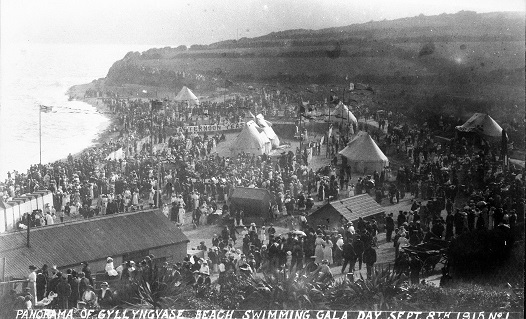
2 - Gyllyngvase Beach Swimming Gala - 8 September 1915
The gala raised money for the ‘War Hospitals Supply Department’. A grandstand and tents were erected on the beach, and races were held from a raft moored off shore.
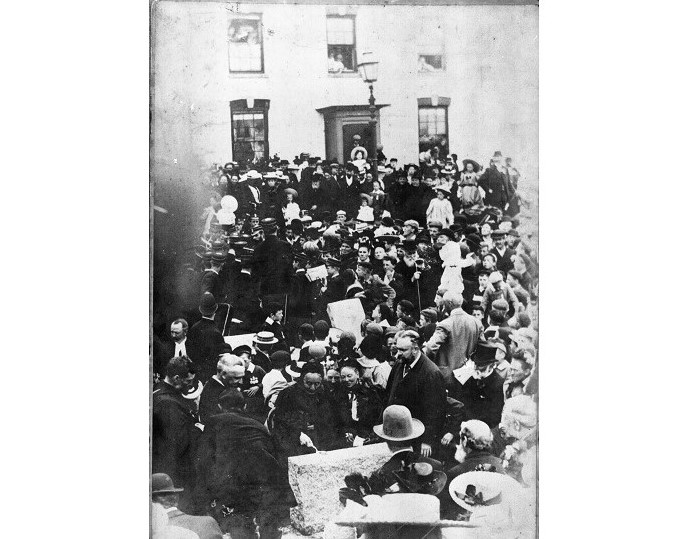
27 - Wellington Terrace School
Former school buildings, such as Wellington Terrace School, were requisitioned as military hospitals. Children continued to be taught in other places, including the Friend’s Meeting House in New Street. The foundation stone for the school was laid by Miss Anna Maria Fox of Penjerrick on 22nd June 1897.
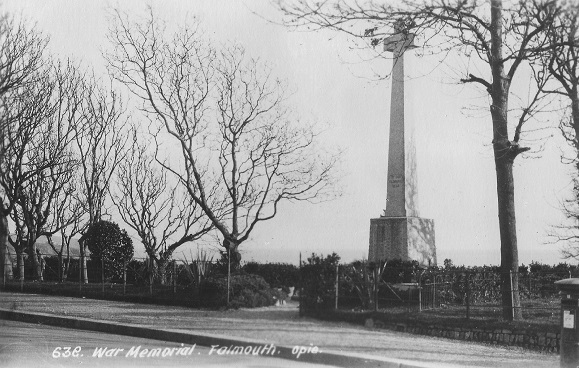
6 - War Memorial (former site)
Erected in 1920, the War Memorial was removed to its present location in Kimberley Park in 1975, as veterans
found it too exposed to attend seafront services.
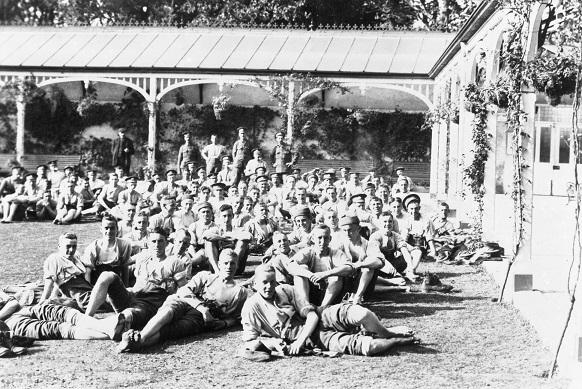
7 - Soldiers relaxing in Gyllyngdune Gardens, 1914 - 1918
The Gardens
were opened in 1907 and the Pavilion built in 1910, for the enjoyment of both
visitors and residents of Falmouth.
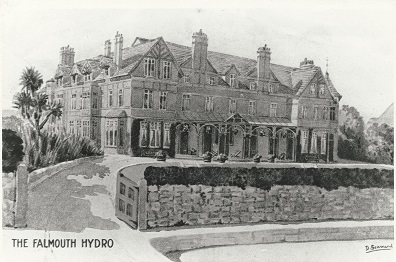
8 - Royal Duchy Hotel, formerly the Pendennis Hotel
Originally named the Pendennis Hotel when built in 1893. In 1915 it was taken over by the
War Department for use as a military hospital. Many of the staff were from Red Cross Voluntary Aid Detachments. After the War it became the Falmouth Hydro.
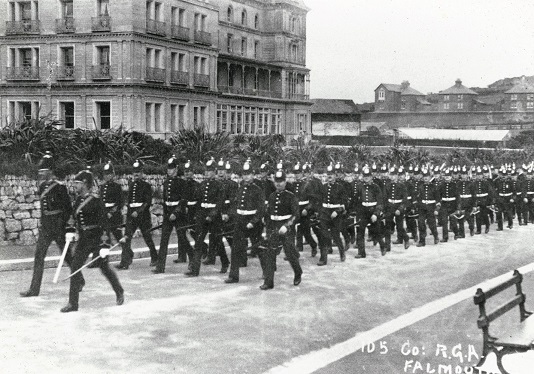
9 - 105 Company Royal Garrison Artillery marching by the Falmouth Hotel
105 Company
Royal Garrison Artillery marching along the seafront. Rear Admiral Sir John S.
Luard who headed the Naval Base at Falmouth stayed at the hotel until the end
of the War.
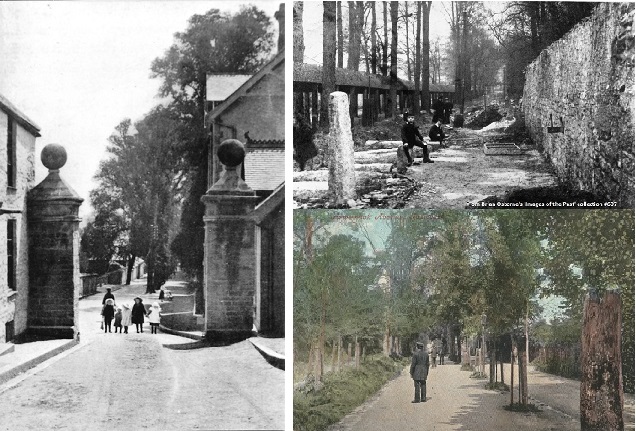
Arwenack Avenue
The original carriage drive to the manor house, still today distinguished by its solid granite gateposts. Used for many years as a covered ropewalk for the spinning and manufacture of rope.
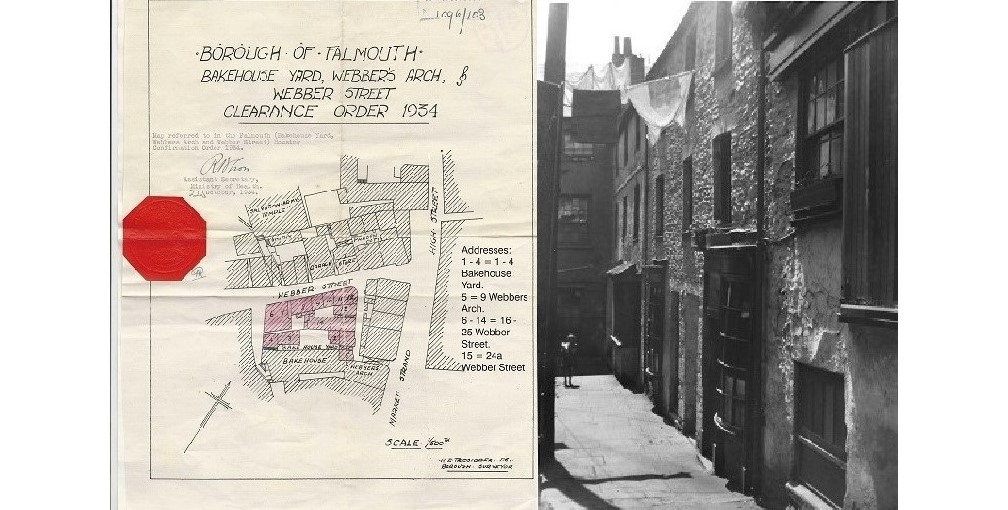
Bakehouse Yard, off the south side of Webber Street
Bakehouse Yard, part of the 1934 programme of Clearance Orders
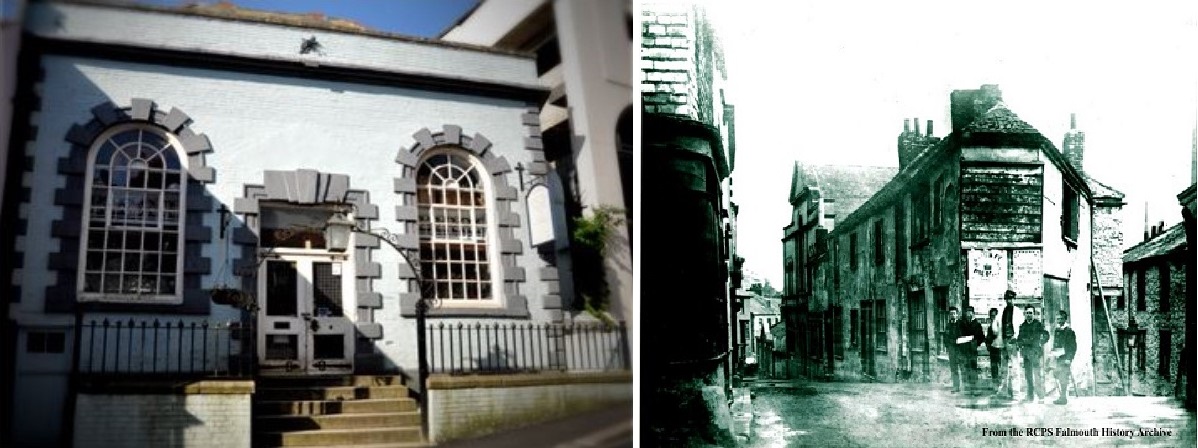
Early Congregational Churches
The first Congregational Church in Falmouth was built on the High Street in 1662. This became a town hall when a new building was constructed on Prince Street.
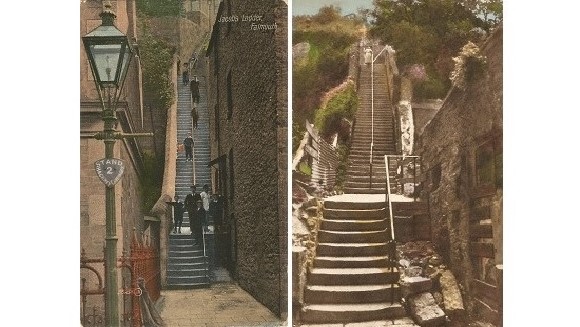

Later Congregational Church
In 1853, a new church was built on High Street, next door to the site of the first church.
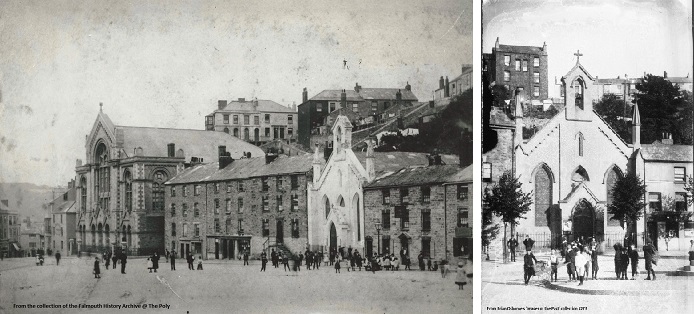
Mission Church, Killigrew Street
The Moor, Wesleyan Church and Mission Church, ca 1900; and Mission Church ca 1910

Parish Church of King Charles the Martyr
Before and during 1898/1899 restoration
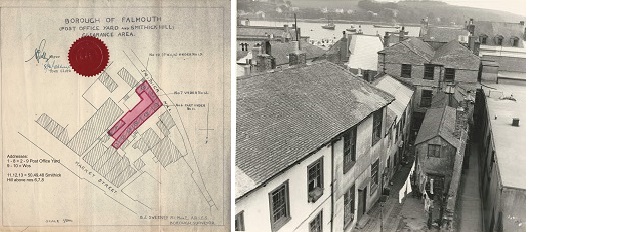
Post Office Yard, off Market Street
Behind WH Smith, separated from what was then Woolworth's flat roofed building (now Wilko) by Fountain Ope. Included in the Clearance programme of 1957.
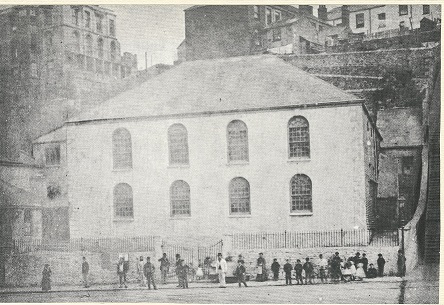
Wesleyan Church
Wesleyan Church, The Moor, built ca 1791

Wesleyan Church, The Moor
Left: ca 1914; Right: ca 1950s after reconstruction following World War 2 bomb damage
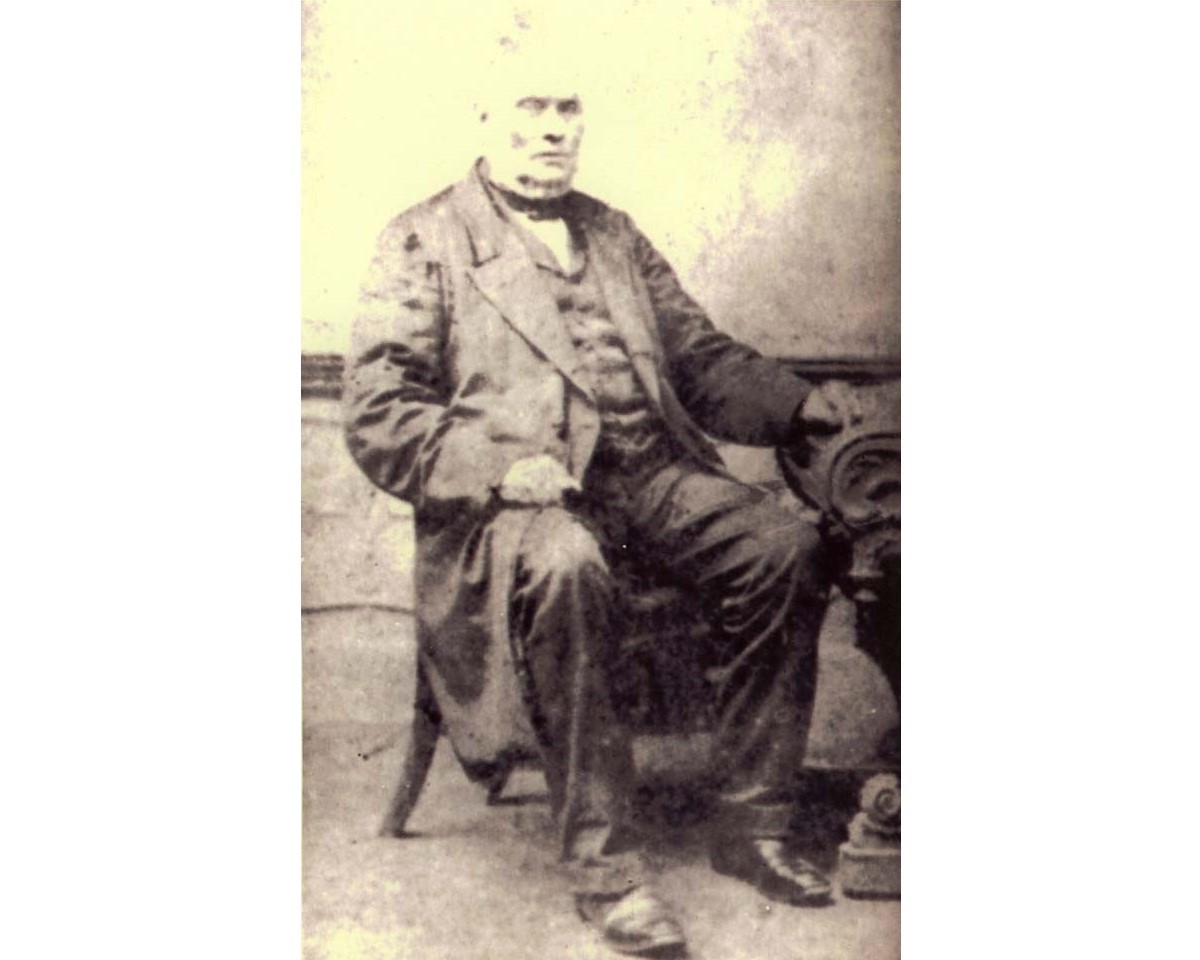
Michael Loam Inventor of the Man Engine
Michael Loam, ca 1860s, Tresavean Mine Engineer and inventor or developer of the Man Engine, was born on the 1st November 1797 at Ludgvan, Cornwall. He died on the 14th July 1871 and was buried in Gwennap churchyard.
He built the first Cornish Man Engine at the Tresavean mine in Gwennap Parish in 1842, adapted from a German design, to win a competition sponsored by the Royal Cornwall Polytechnic Society. After a successful trial period, the Tresavean Mine's Directors gave the go ahead to extend down to the 248 fathom level, the first of 16 such engines to be built in Cornwall.
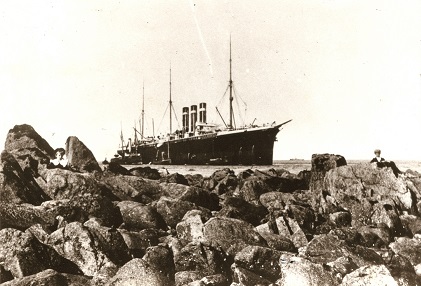
EA Osborne photo of the wreck of the S.S. Paris on Lowland Point, Coverack - ran aground 21 May 1899
EA Osborne's two young sons are seen among the rocks in the foreground perfectly framing the ship, Les on the left and ET on the right.
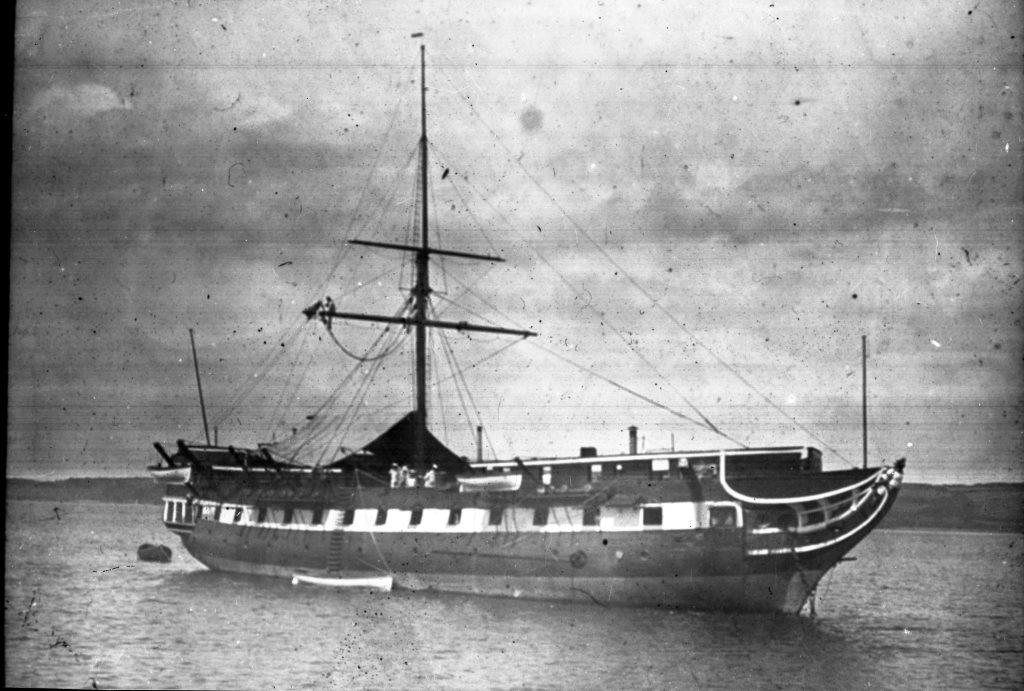
Foudroyant Falmouth 1900
Foudroyant, built of teak in Bombay, was launched as HMS Trincomalee, a Leda class frigate of the Royal Navy, on 12 October 1817.
She was sold for scrap in 1897 and bought by Geoffrey Wheatley-Cobb.
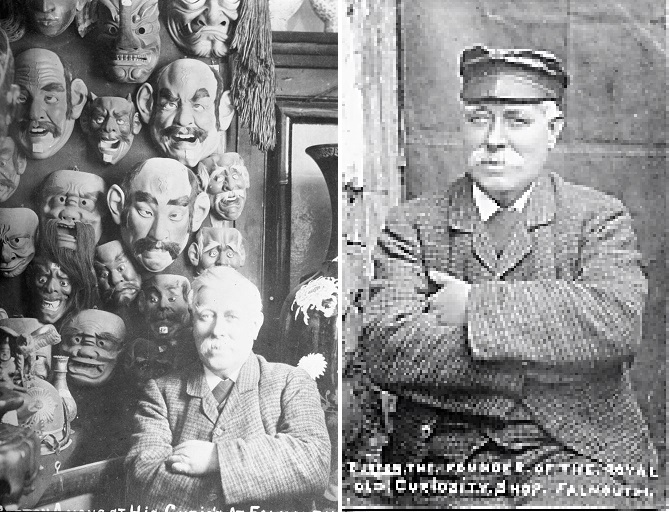
John Burton
John Burton (1839-1907) was born on 10 November at Lostwithiel. At the age of 22 he left home and came to Falmouth where he founded the world-famous Old Curiosity Shop at 27 Market Street (now Boots opticians and hearingcare). H.R.H. the Prince of Wales (later King Edward VII) made some purchases by commission, being unable to ‘call upon him’, during his visit to Falmouth in 1887. Always the entrepreneur, he offered £500 for Smeaton’s Lighthouse when it was replaced by the new Eddystone Lighthouse. His bid was unsuccessful, and the lighthouse was given to Plymouth on the condition that the town paid the cost of removing it and re-erecting it on the Hoe, where it stands to this day.
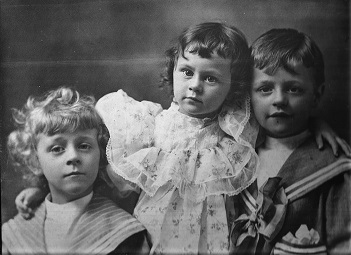
Studio portrait of EA Osborne's children
From l to r: Les (Frederick Leslie), Ali (Alice May), ET (Ernest Thomas). This photo was taken not long after they returned from the USA in 1899. Les became a bespoke tailor before joining, and then succeeding, his father in the photographic business. Ali was a teacher, becoming deputy headmistress of Clare Terrace School in Falmouth. ET was also a teacher, becoming headmaster of All Saints School in Albany Place, Falmouth.
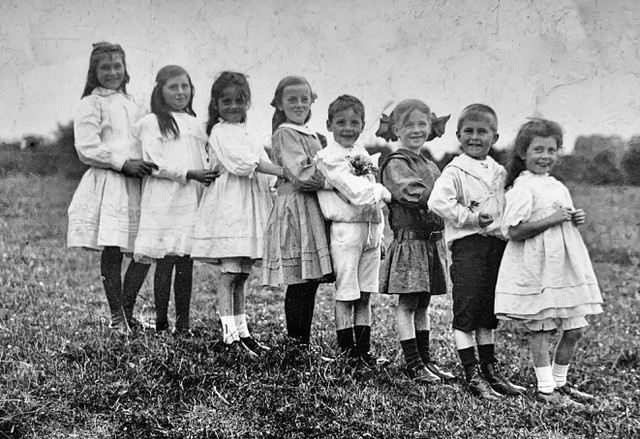
Birthday party group
Doris May Moss (centre), the youngest daughter of EH Moss, with friends on her 8th birthday.
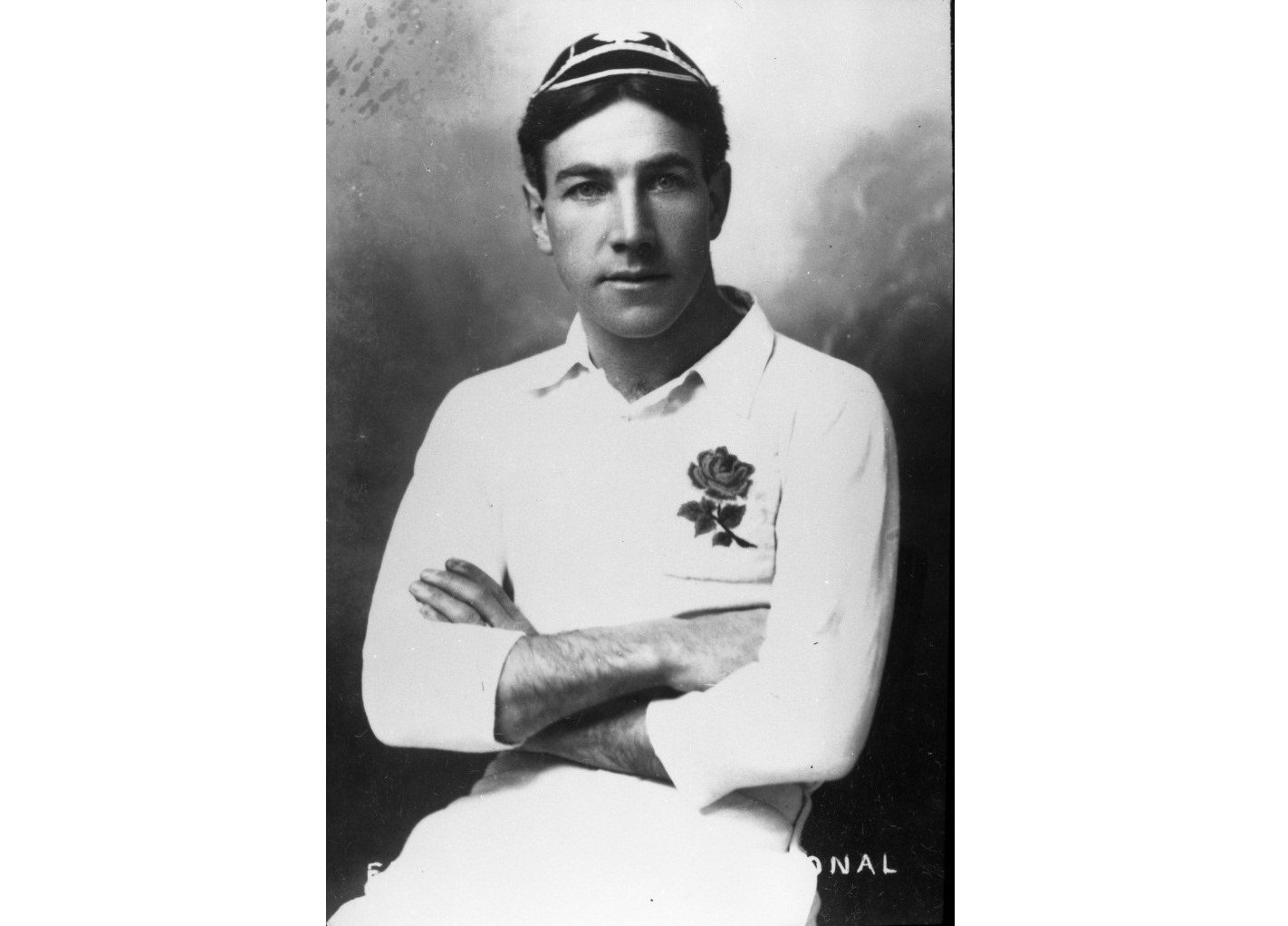
Edward John Jackett
Edward John Jackett (4 July 1878 – 11 November 1935) was born in Falmouth and played rugby for Falmouth RFC.
He represented the England national rugby union team, the British Lions, and competed in the 1908 Summer Olympics for Great Britain.
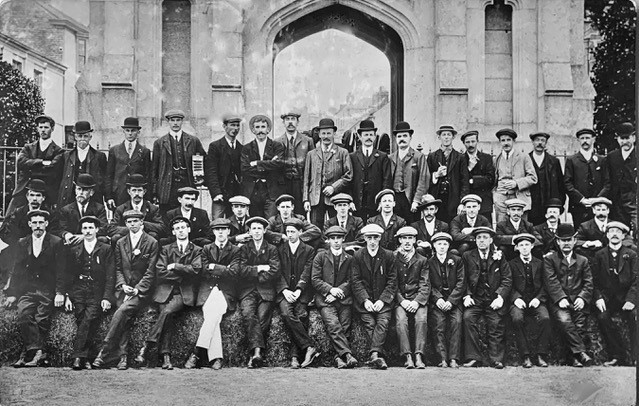
EH Moss works outing, ca 1920
Company outing to the Humphry Millet Grylls monument in Helston. EH Moss is back row, centre wearing a lighter coloured suit and bowler hat.
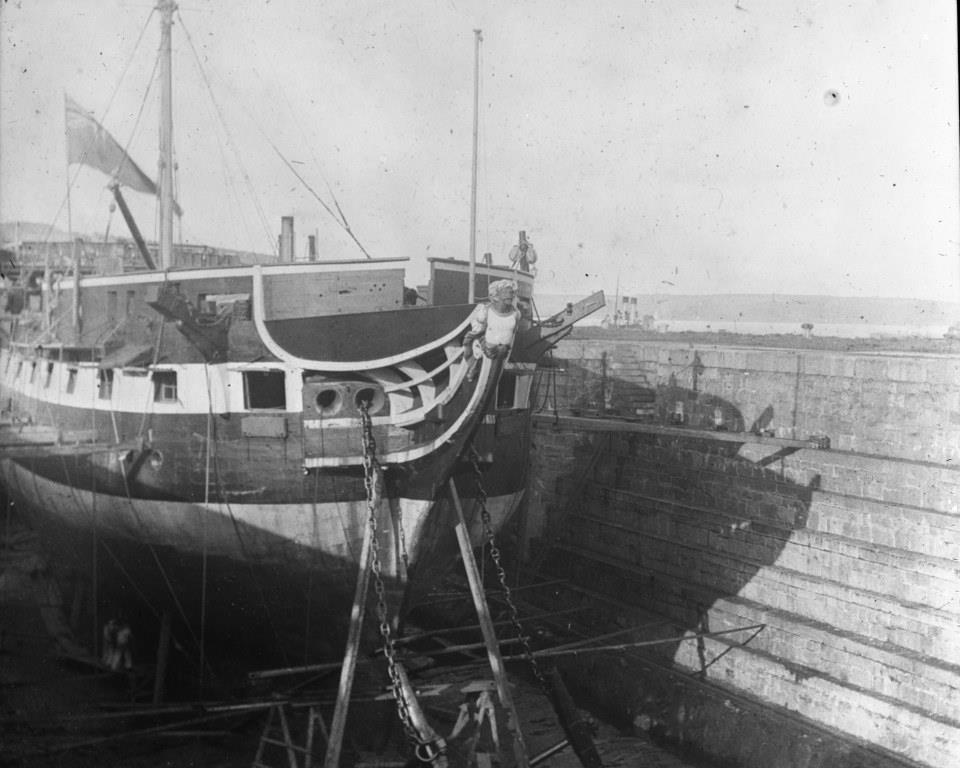
Foudroyant Dry Dock c. 1910
Geoffrey Wheatley-Cobb brought her to Falmouth in 1902 and moored her off Flushing as a training ship for boys. She was a significant feature of the inner harbour until 1927.
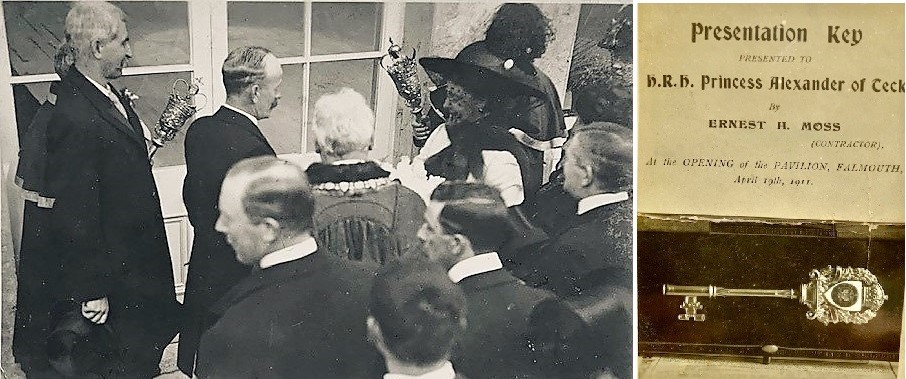
Opening of the Princess Pavilion, 19 April 1911
Ernest Henry Moss (contractor) presenting the ceremonial key to HRH Princess Alexander of Teck on the opening of the Pavilion.
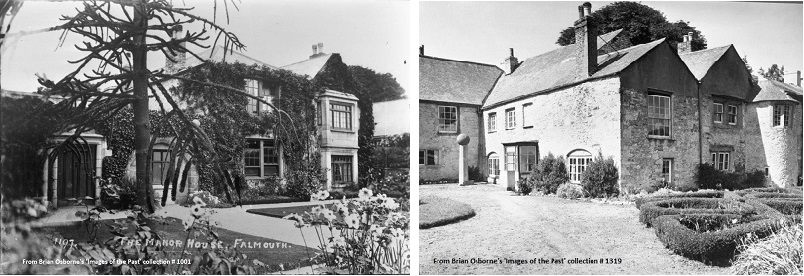
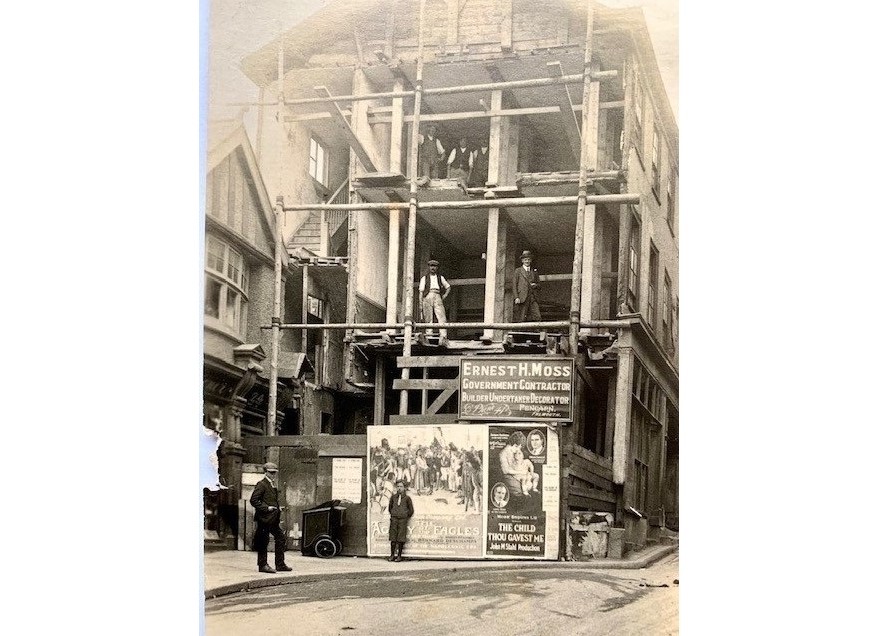
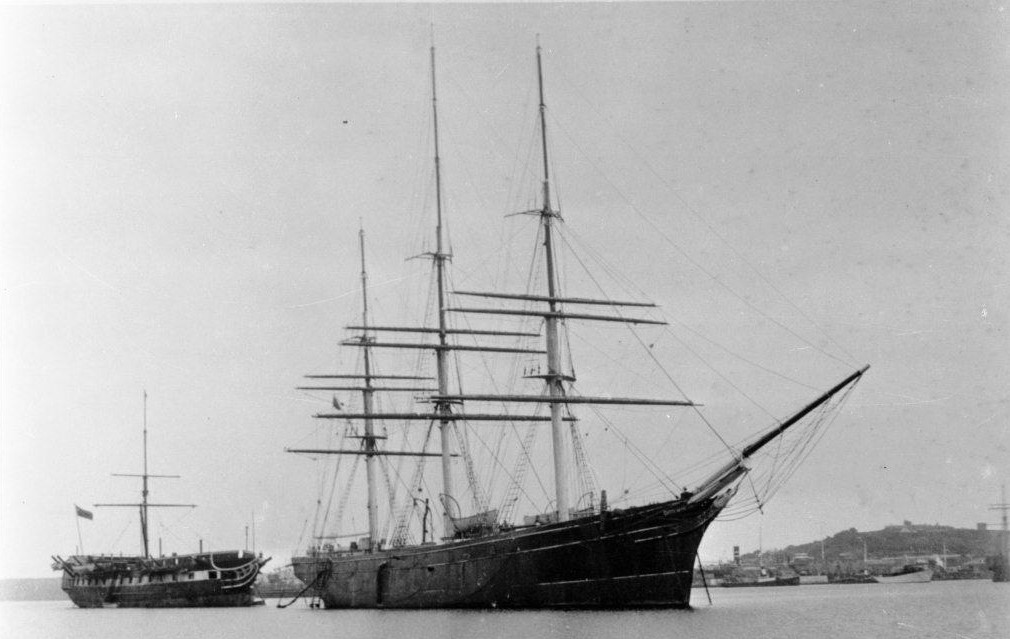
Cutty Sark and Foudroyant
Cutty Sark and Foudroyant moored in Falmouth Harbour ca 1920
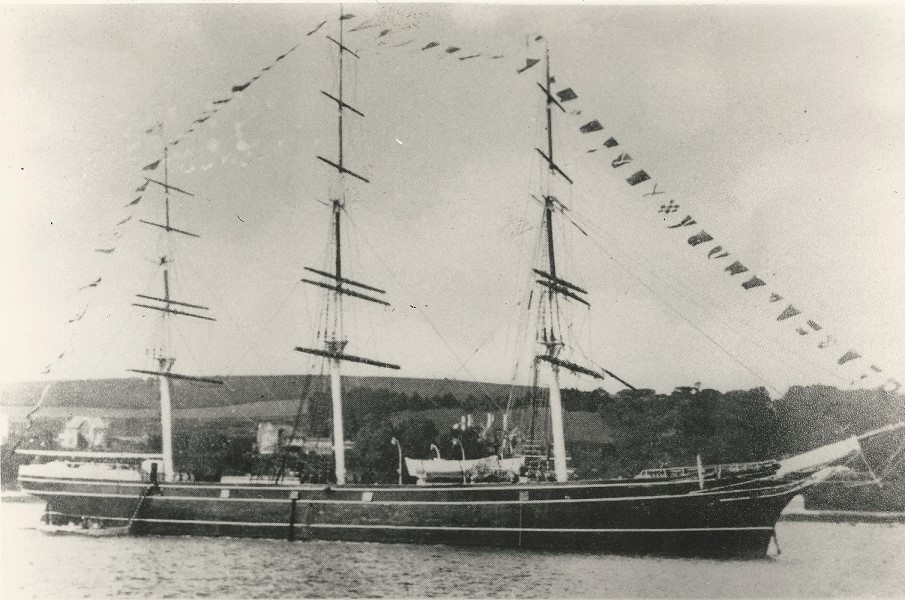
Cutty Sark off Flushing
Cutty Sark was launched in 1869 and made her last passage under the British flag in 1895, carrying her biggest cargo of wool from Brisbane to London. She was then sold and sailed under the Portuguese flag for the next 27 years.
In 1922 she was bought by Captain Wilfred Dowman, of Trevissome, Penryn, who brought her to Falmouth for restoration, where she remained until 1938.
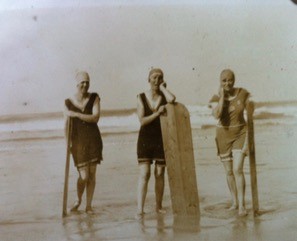
The Osborne Ladies surfing at Newquay ca 1927
From l to r: Lilian (wife of Les), Vi (wife of ET), Ali (sister-in-law to both)
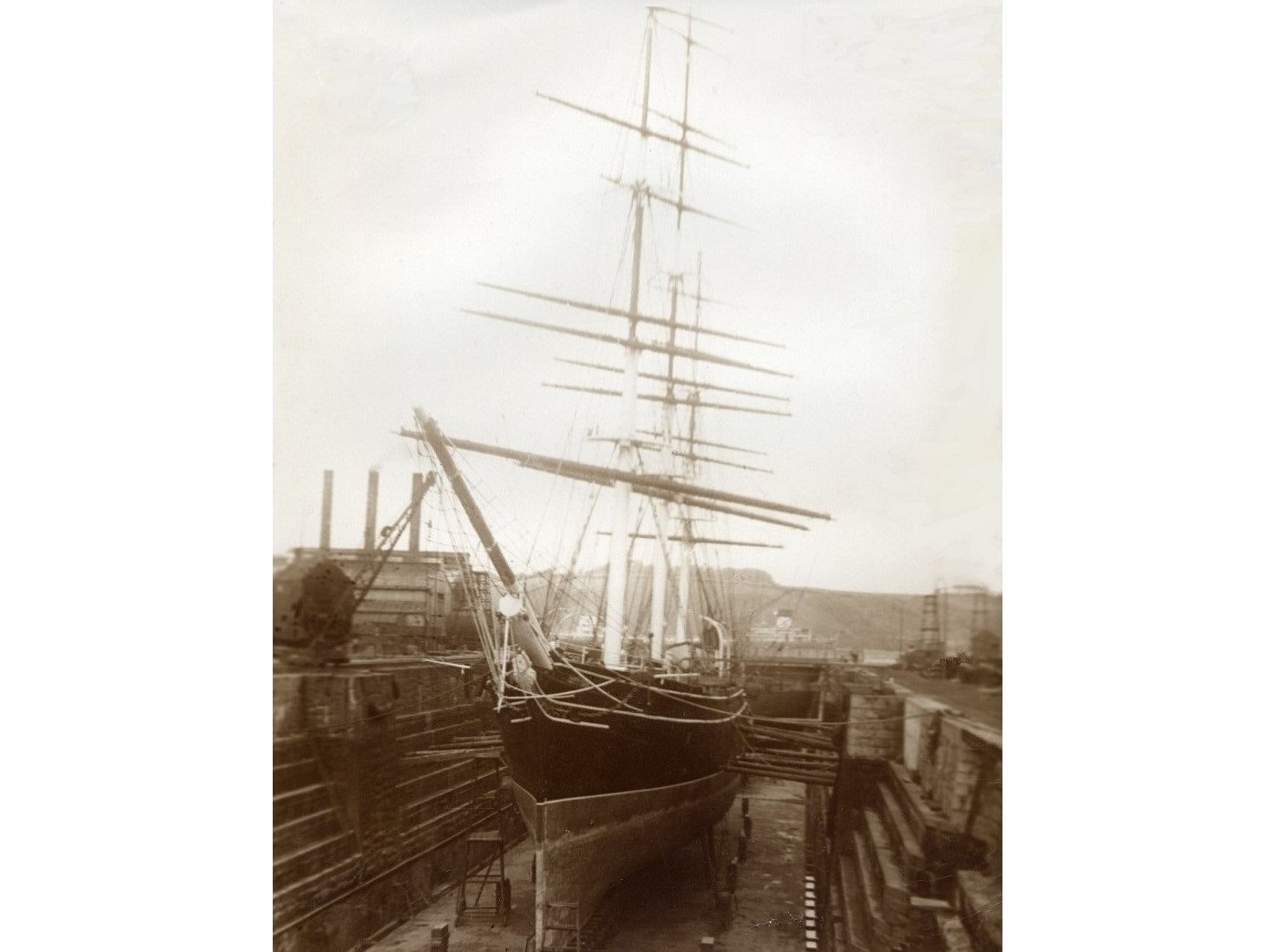
Cutty Sark in Falmouth Dry Dock (1933)
On Captain Dowman’s death, his widow presented Cutty Sark to the Thames Nautical Training College at Greenhithe. She now lies at Greenwich, beautifully restored.
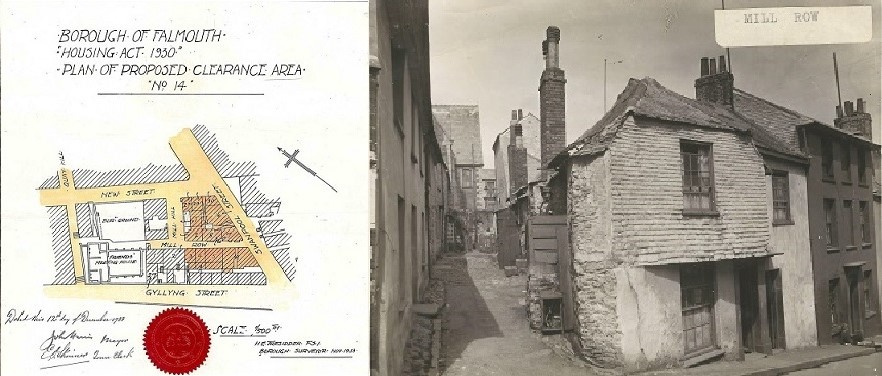
Mill Row, off Swanpool Street
Note the Friends' Meeting House at the far end of the Row. Included in the Clearance programme, November 1933.
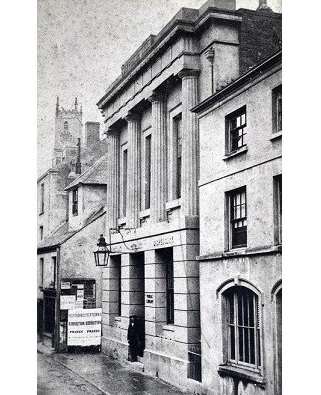
Howard Spring and the Royal Cornwall Polytechnic Society
Howard Spring joined the RCPS shortly after he moved to Cornwall in 1939. During the war, the Society continued to put on lectures, but faced difficulties including the threat of requisition of the premises (in 1939 a detachment of Royal Engineers made use of the Hall for about 8 weeks; potential use by both the British and American Navy was reported in 1943 and 1944).
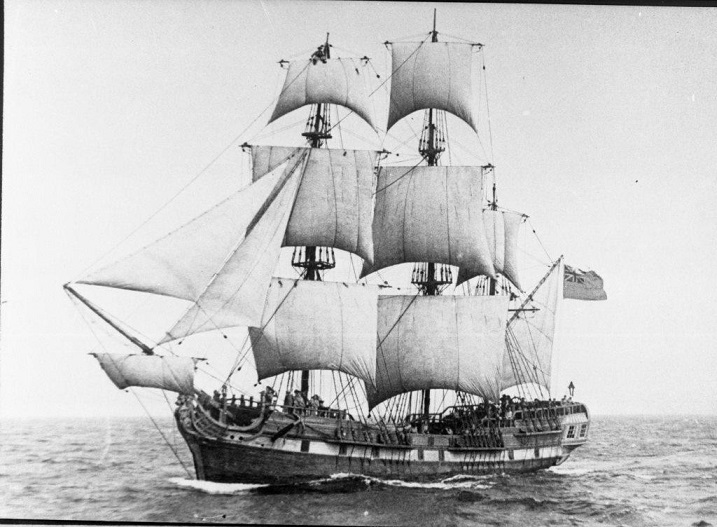
Hispaniola visited the River Fal in 1949
For filming the Walt Disney epic adventure film 'Treasure Island'.
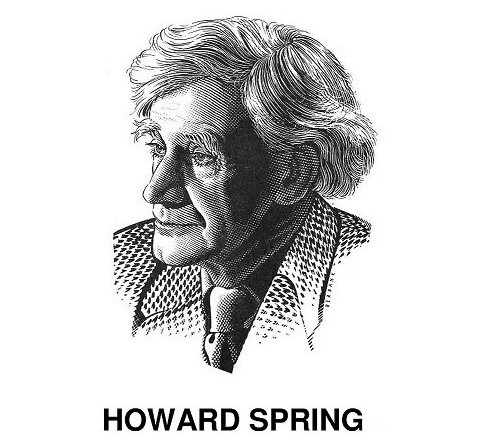
Howard Spring
Marion Howard Spring wrote in her memoir "Howard":
"When we moved to Falmouth, Howard became very much interested in the doings of the Royal Cornwall Polytechnic Society. It was housed in an old building which became a centre of the arts - drama, opera, ballet, painting, etc., and money was much needed for the upkeep of the place. .....the Polly, as it was always affectionately termed."
Read more here:Howard Spring: The Plays
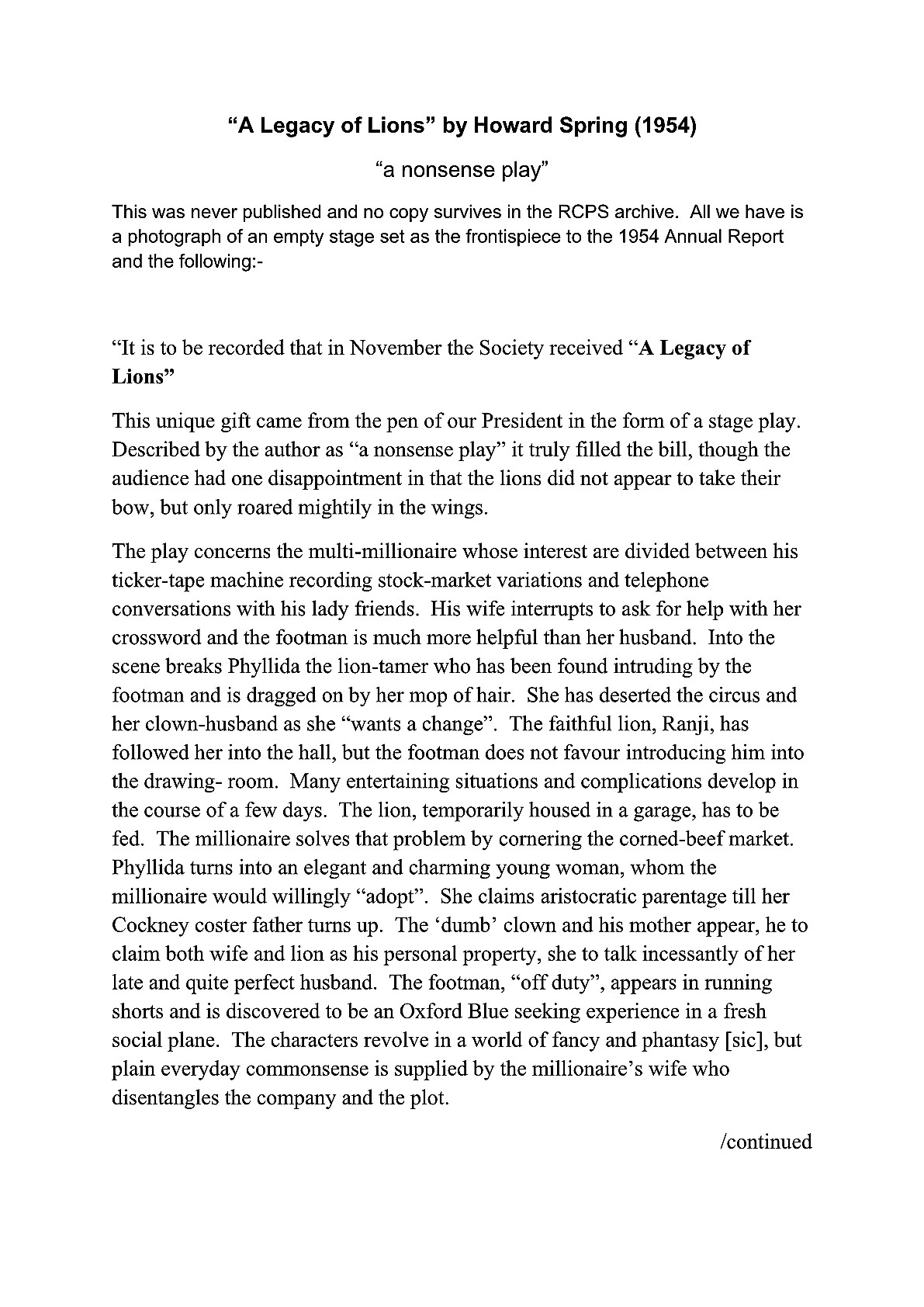
A Legacy of Lions
“It is to be recorded that in November the Society received “A Legacy of Lions”
This unique gift came from the pen of our President in the form of a stage play. Described by the author as “a nonsense play” it truly filled the bill, though the audience had one disappointment in that the lions did not appear to take their bow, but only roared mightily in the wings.
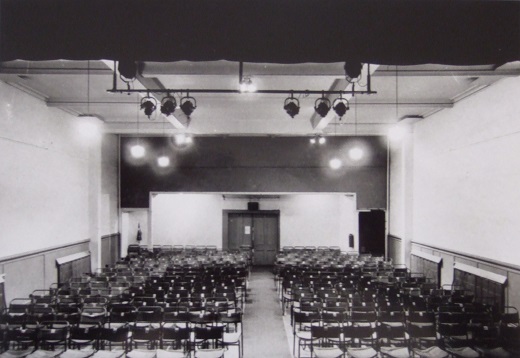
The Poly in the time of Howard Spring
When Howard Spring joined the RCPS in 1940, it was a Society of 217 members. The Church Street building was owned by the Society, but parts of it were sub-let. There was a Library and the Falmouth Museum was housed in the gallery above the Large Hall and in the Chellew Room. A caretaker was employed.
Elsewhere in Falmouth the Society ran a Meteorological Observatory. The focus of the Society as reflected in the Annual Reports of the 1940's was Cornwall wide, not only Falmouth, with lectures, visits, an essay competition, weather reporting, a library and museum.
Read about Howard Spring's involvement with The Poly here.
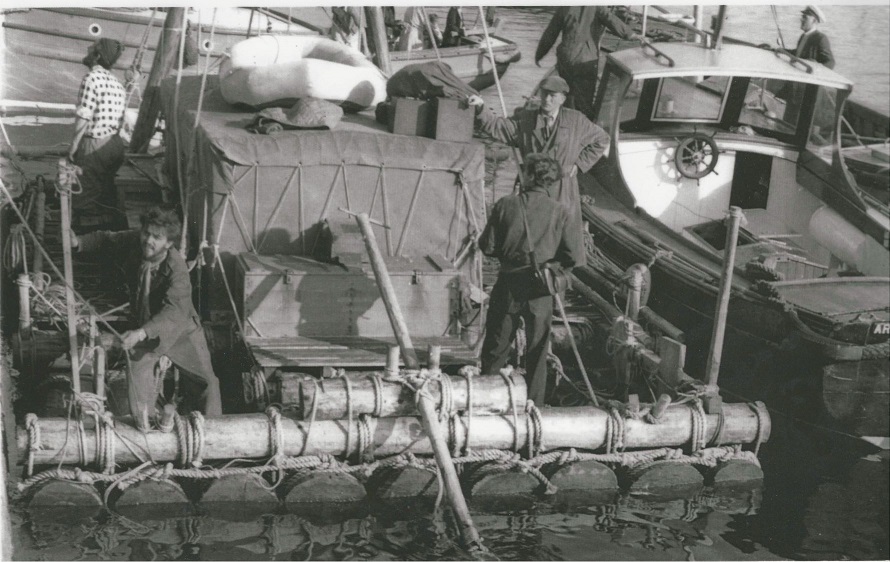
L'egare, Canadian Raft alongside after crossing Atlantic
L’Égaré II was a raft used by a French crew in 1956 to cross the Atlantic Ocean. The expedition, led by Henri Beaudout, departed from Halifax, Nova Scotia, arriving in Falmouth 88 days later”
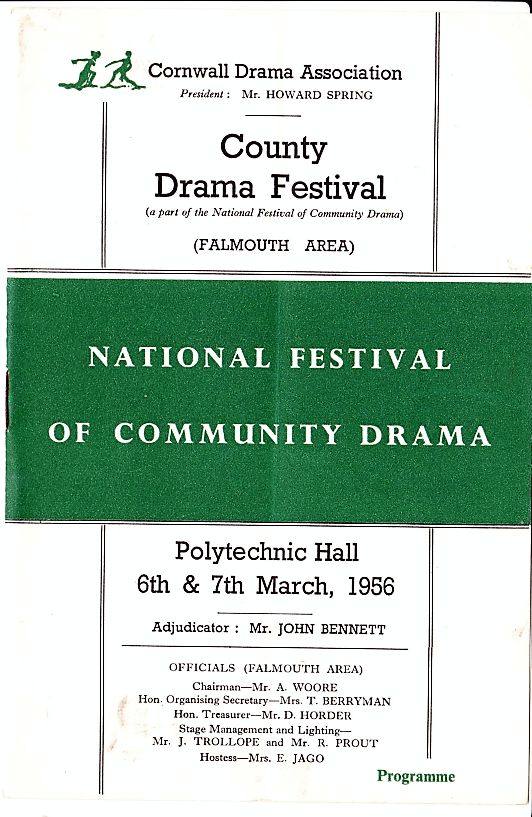
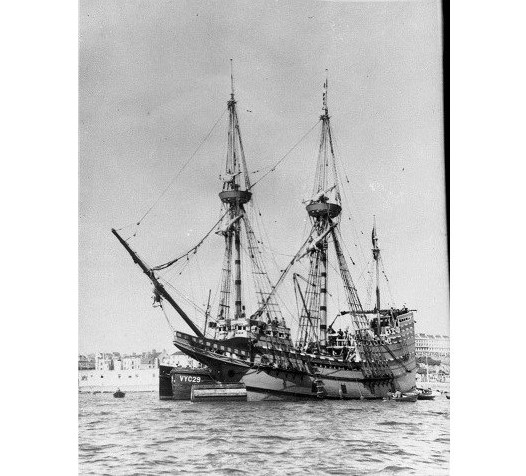
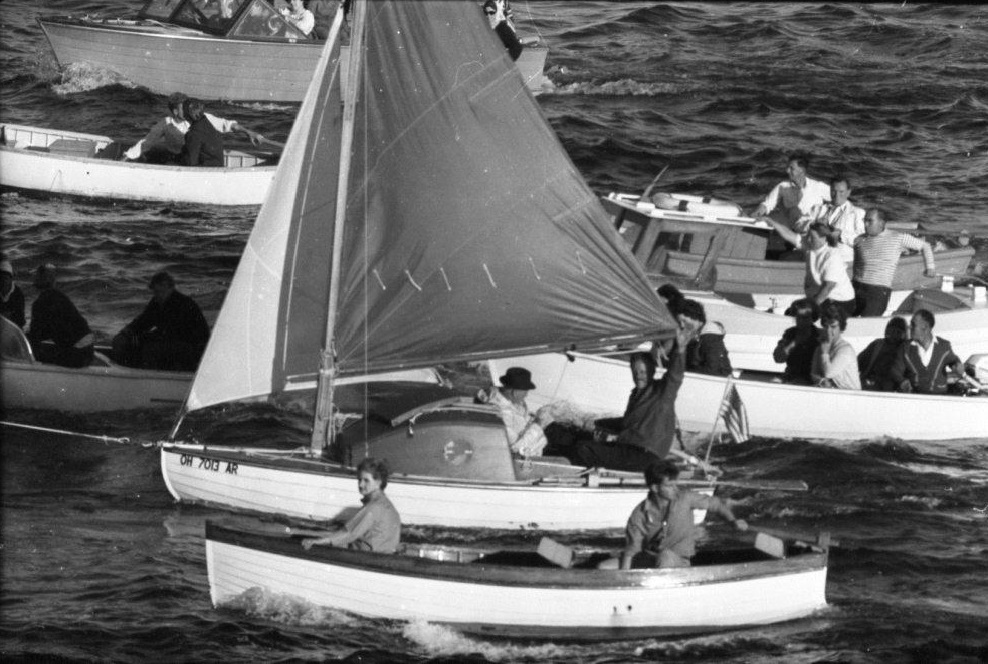
Robert Manry
Robert Manry arriving in Falmouth on 17 August 1965 in his diminutive yacht Tinkerbelle after crossing the Atlantic from Falmouth, Massachusetts in 78 days. Tinkerbelle, an extensively modified Old Town ‘Whitecap’, was a mere 13.5 feet (4.1 metres) long, and the smallest vessel ever to have made the crossing at that time.
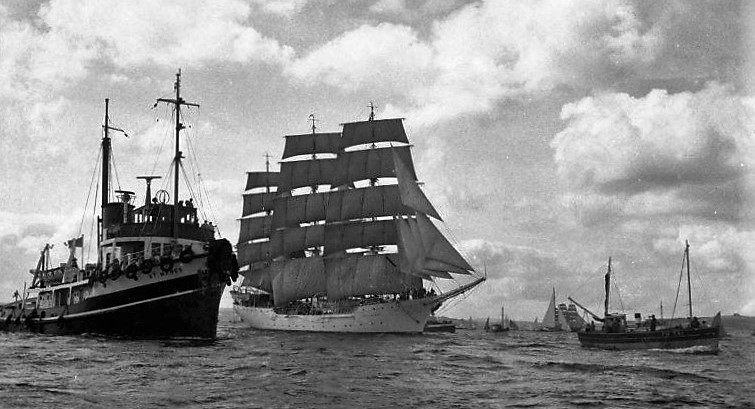
Tall Ship Christian Radich Tug St Mawes 1966
The tall ship Christian Raddich, escorted by the Falmouth tug St. Mawes, leaves Falmouth at the start of the 1966 Tall Ships Race. Christian Raddich is well known for her starring role in the BBC TV drama series 'The Onedin Line' which ran from 1971 to 1980.
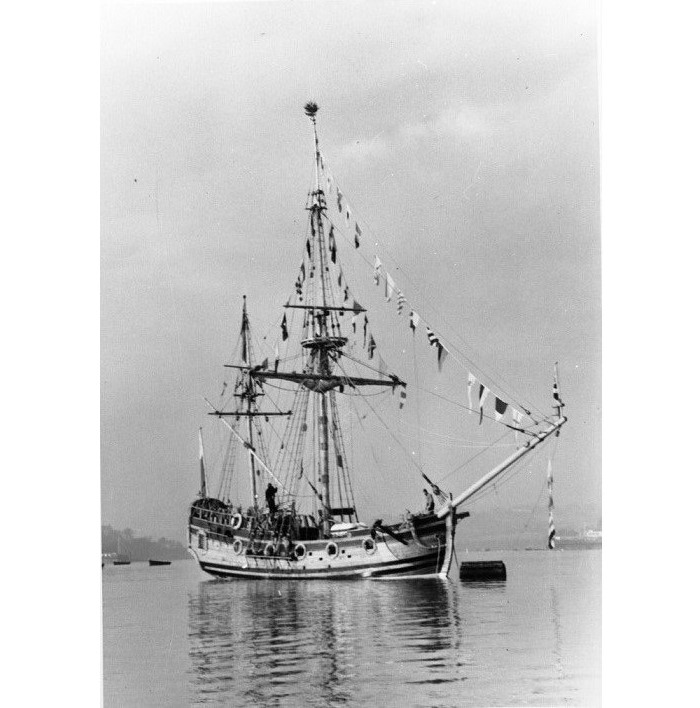
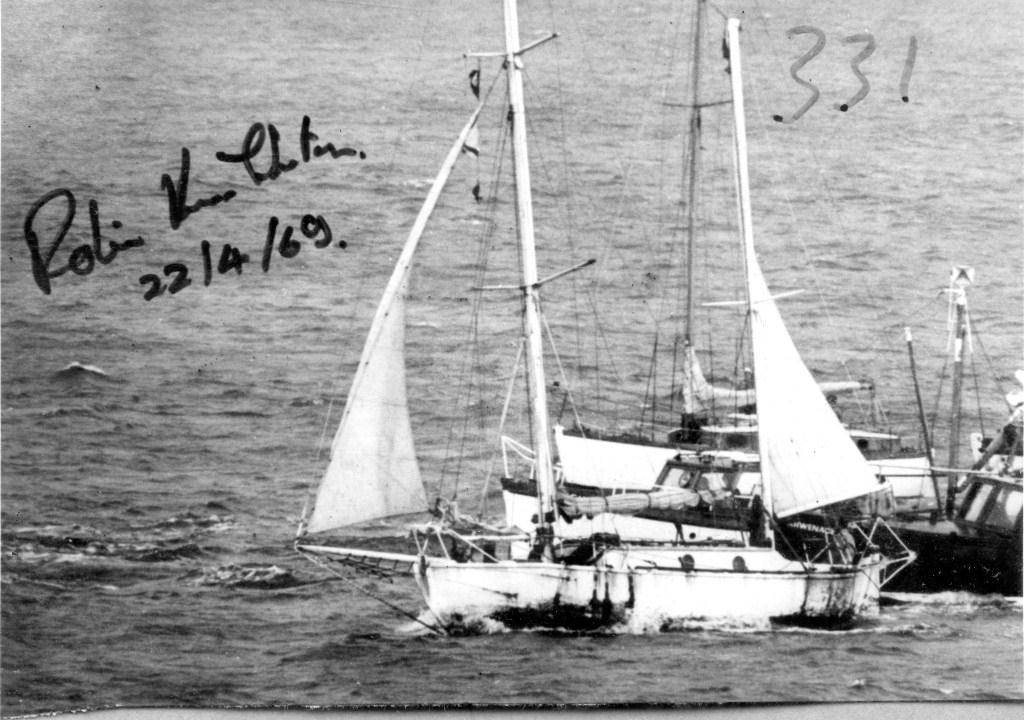
Robin Knox-Johnston
Robin Knox-Johnston and his yacht Suhaili arriving off Falmouth on 22 April 1969 after the first-ever solo, non-stop circumnavigation. His reply of "Falmouth" to the challenge made by Falmouth’s Custom Officer "where from?" is on a par with those contemporary words of Neil Armstrong when he took his first step on the surface of the moon: "one small step for man...".
Photo copyright: Alison George, née Osborne
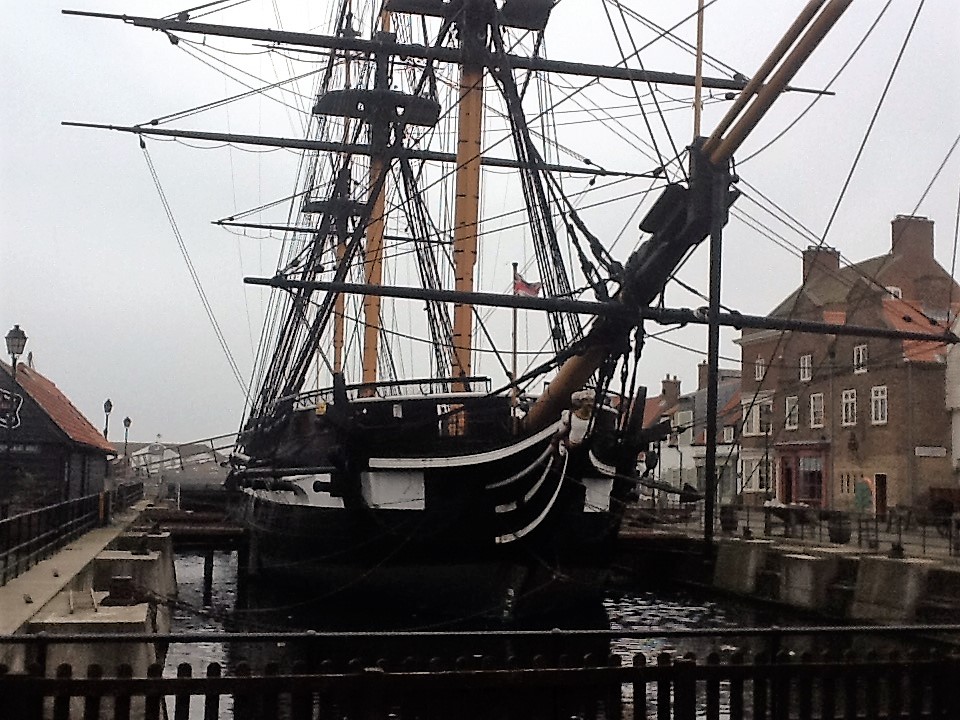
Trincomalee
Foudroyant was renamed back to Trincomalee in 1992, and now lies afloat, fully restored at the National Museum of the Royal Navy at Hartlepool.
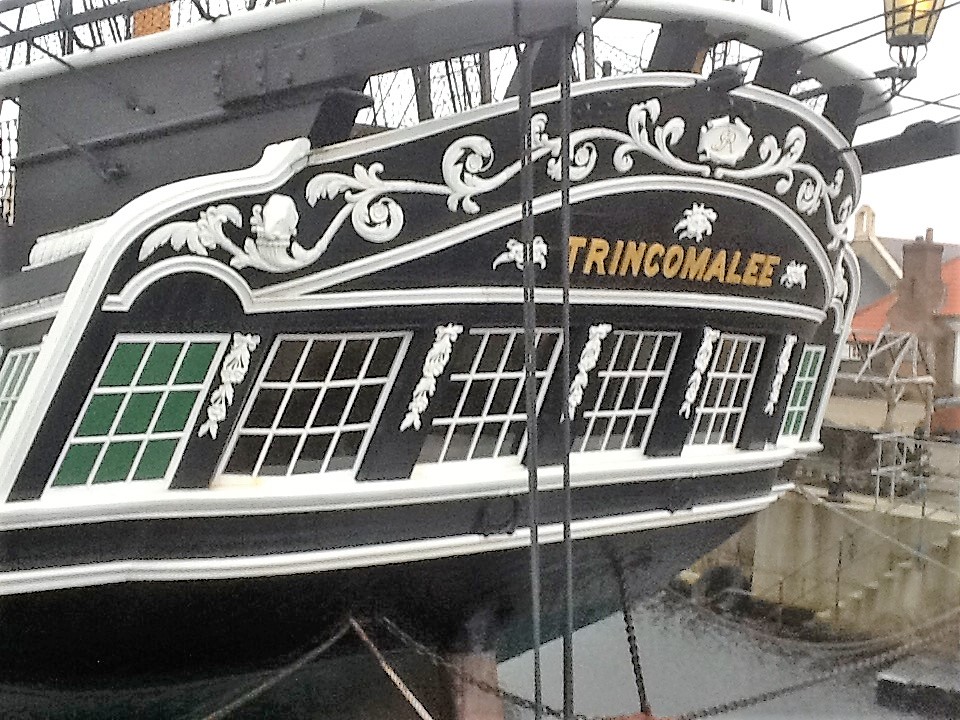
Trincomalee
Trincomalee is the oldest British warship afloat today, and the second oldest in the world after the USS Constitution in Boston, USA
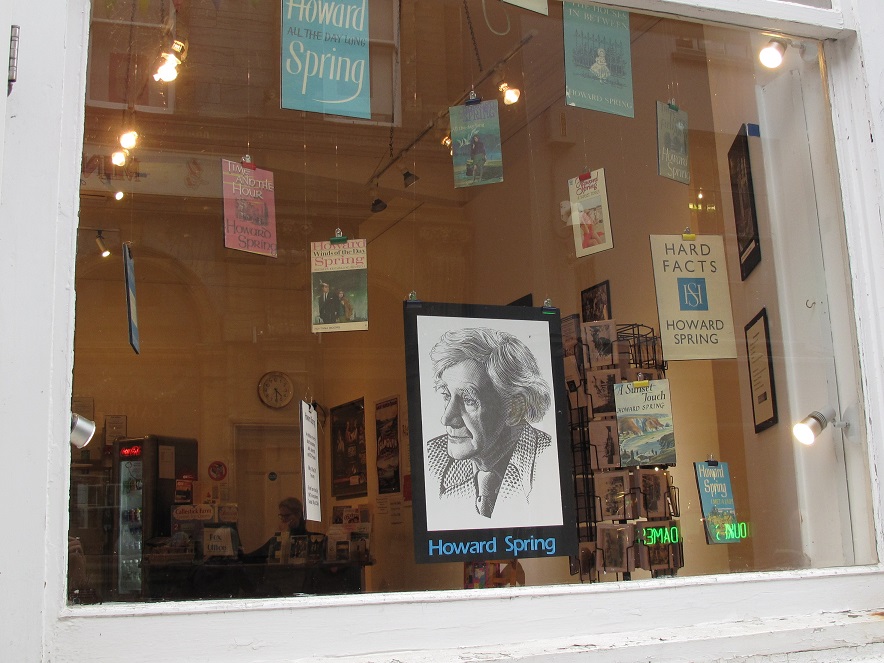
Howard Spring Exhibition 2015
Steele Gallery, The Poly
Presented by The Falmouth History Archive
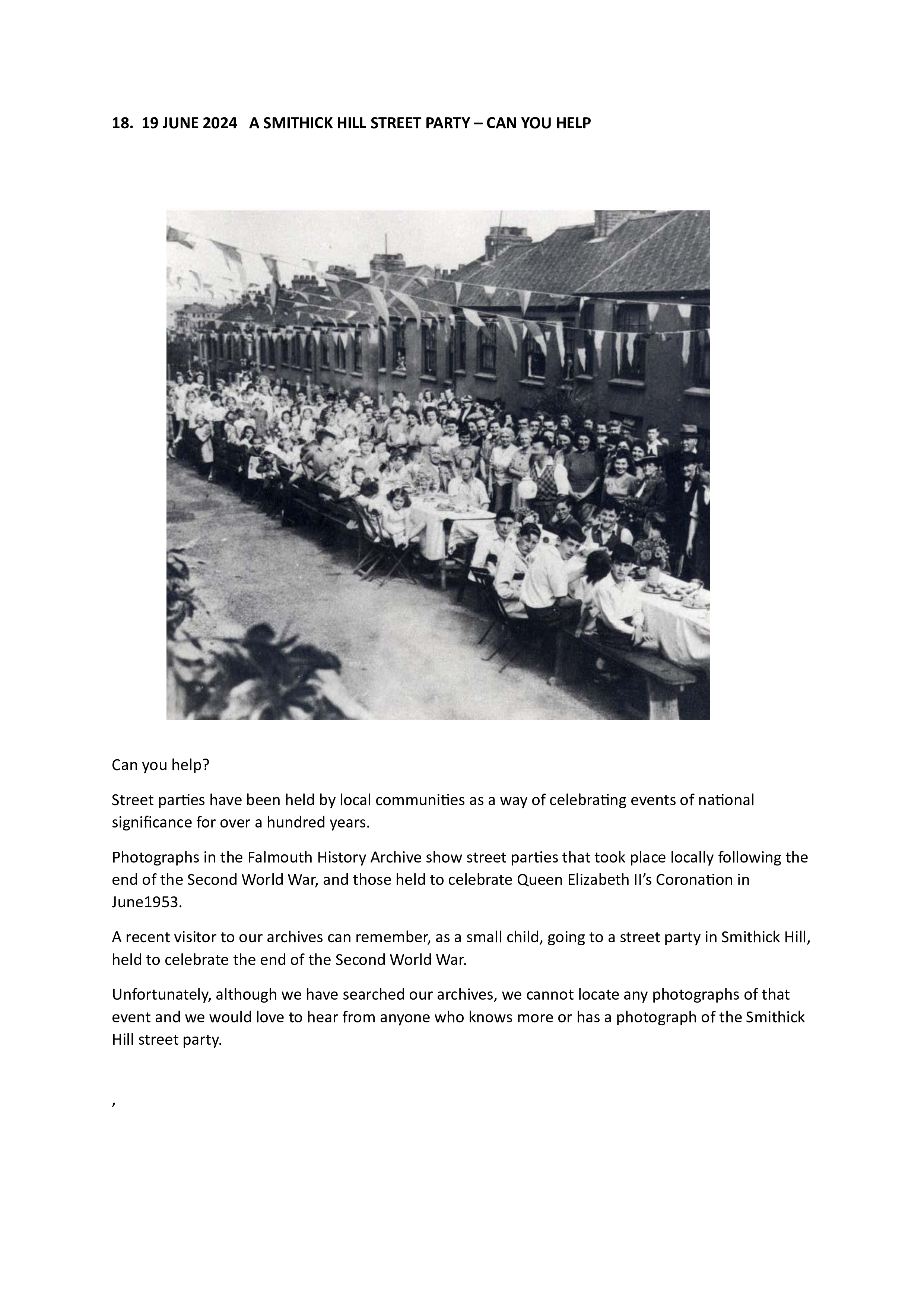
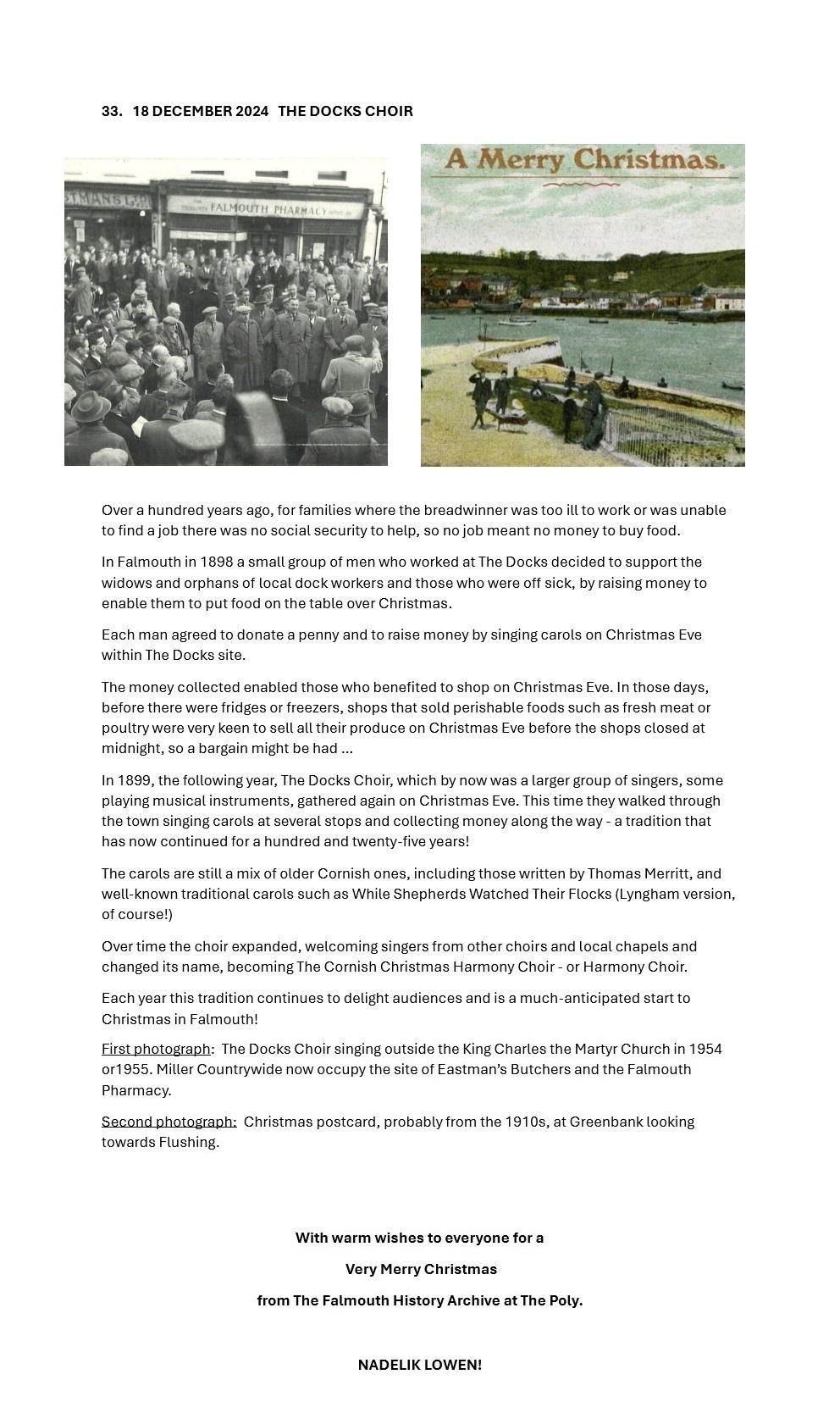
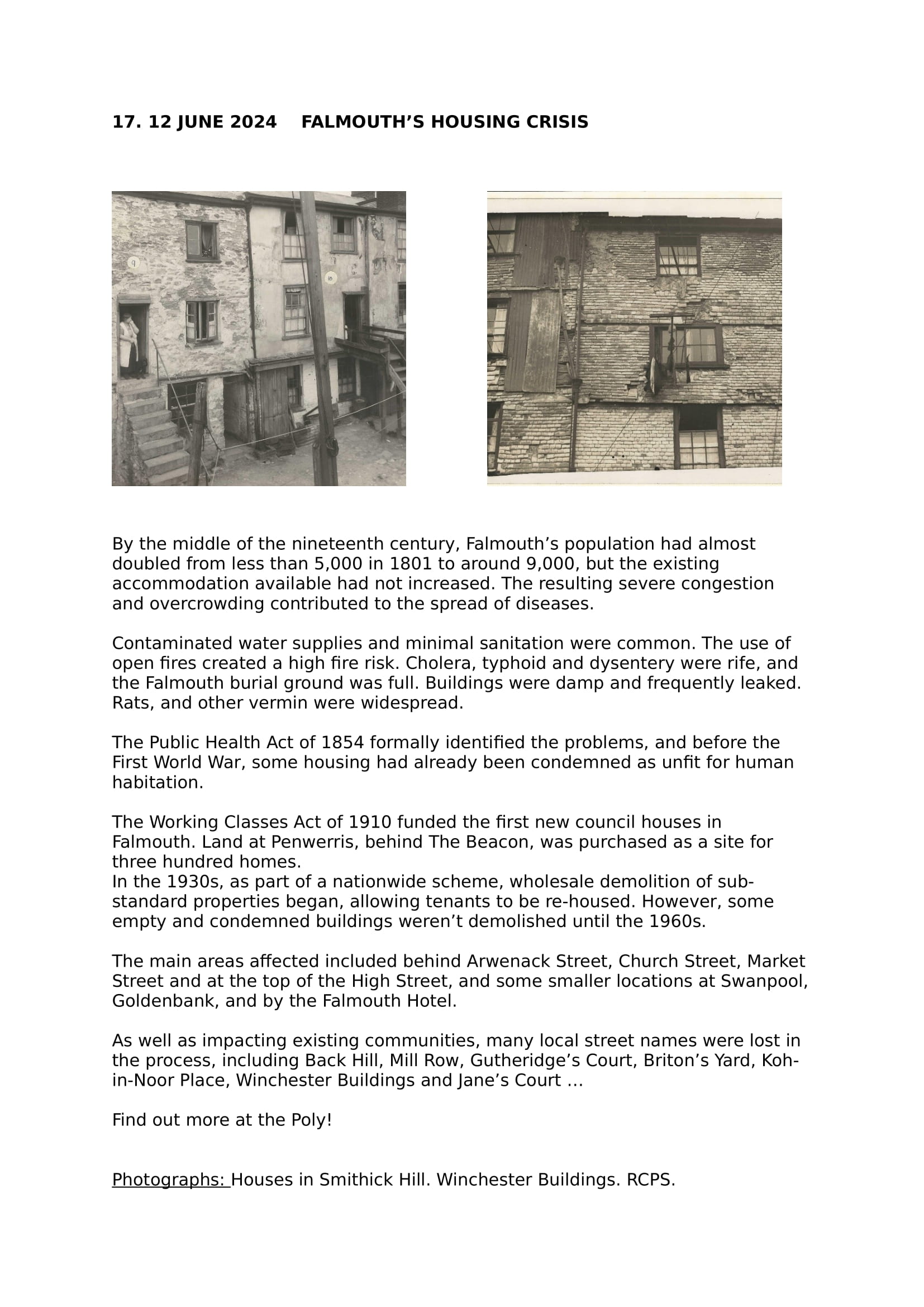
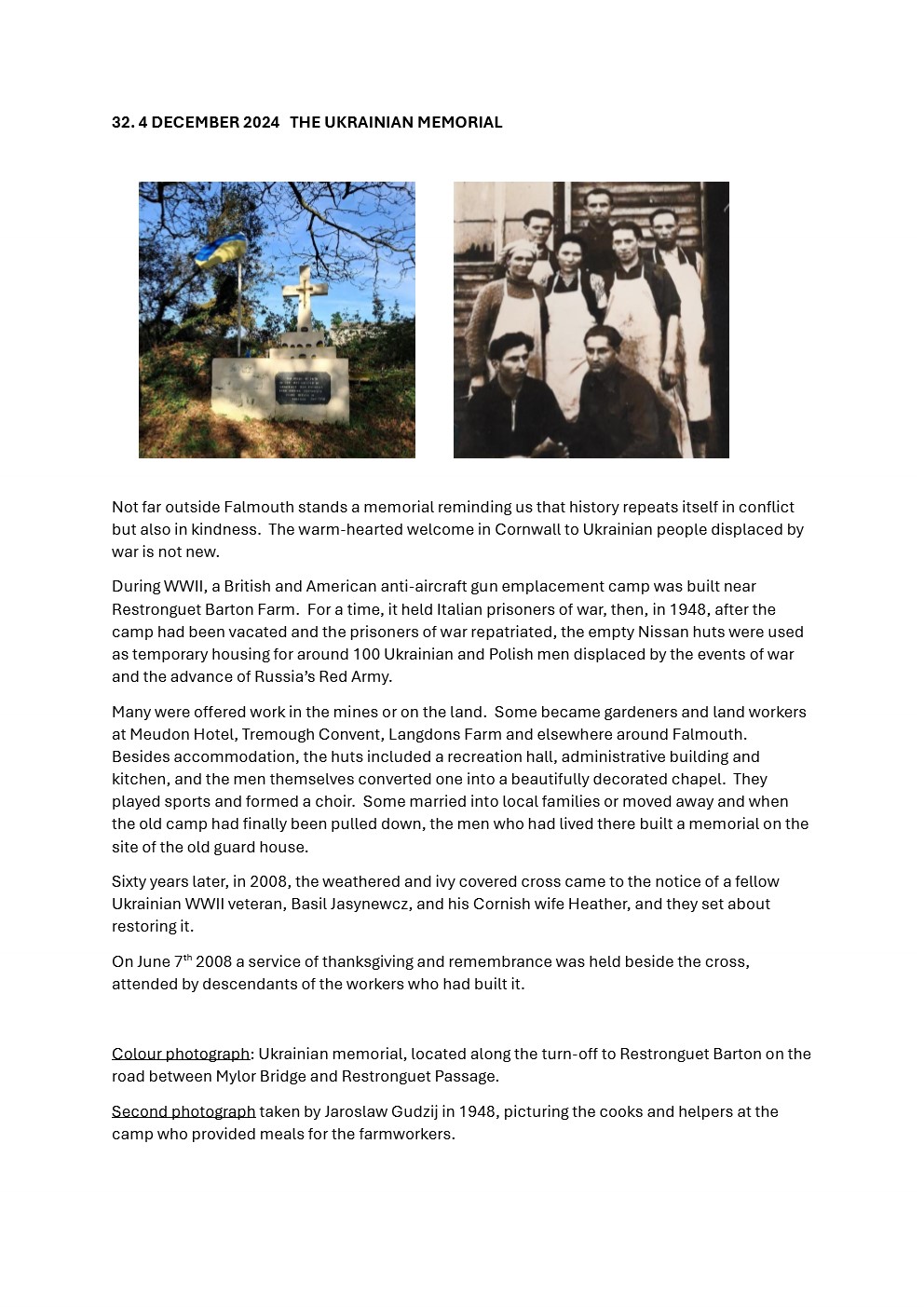
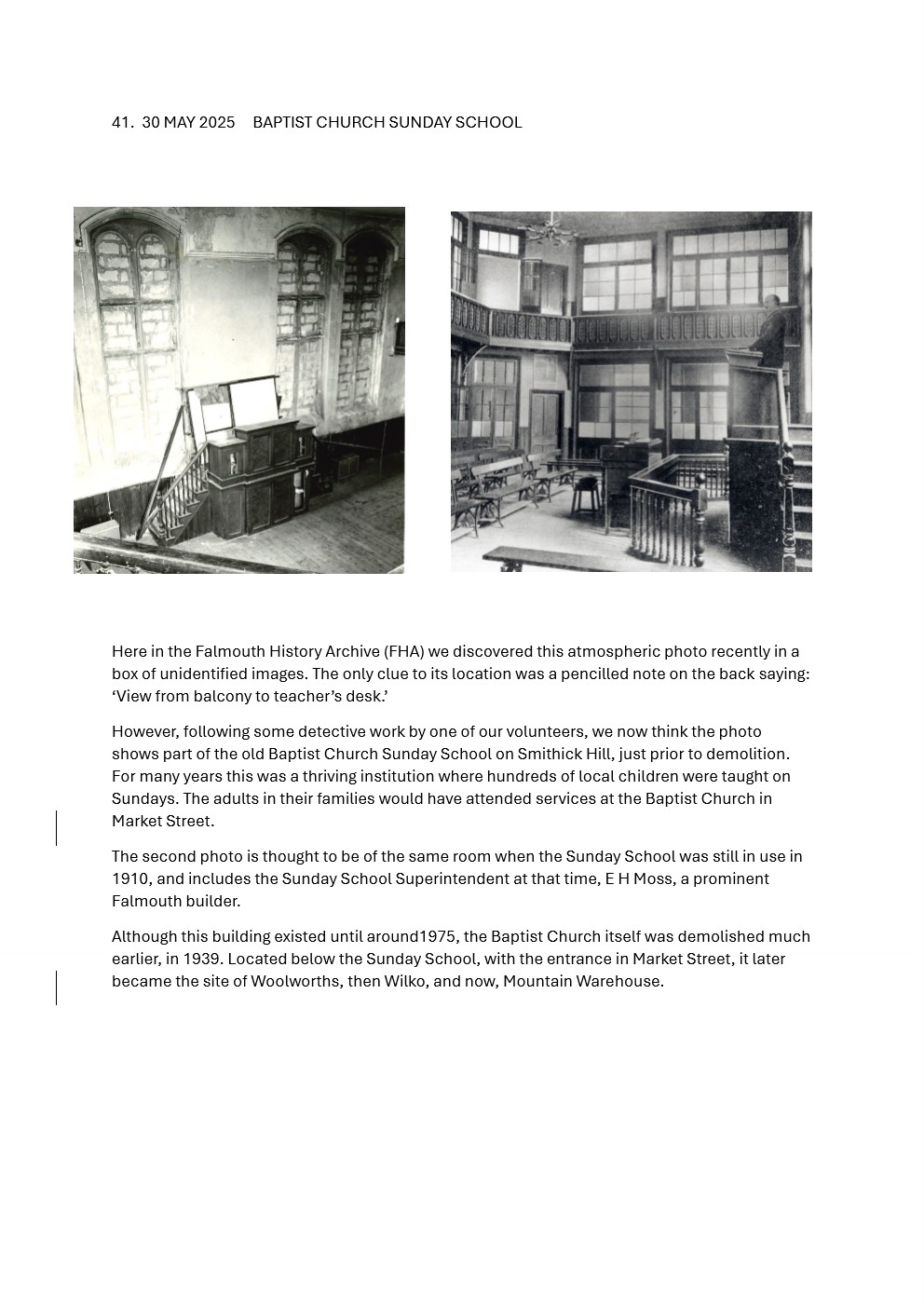
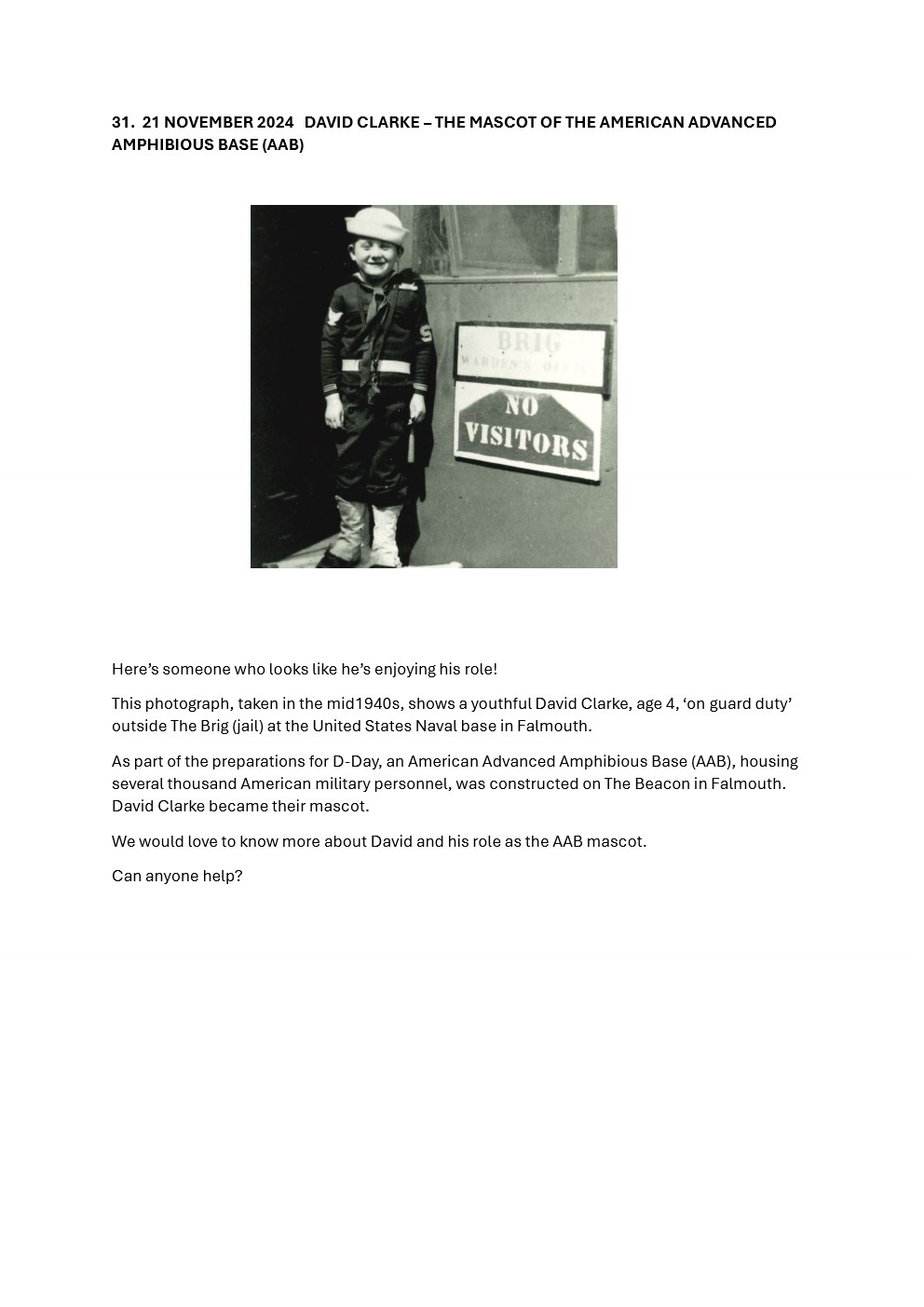
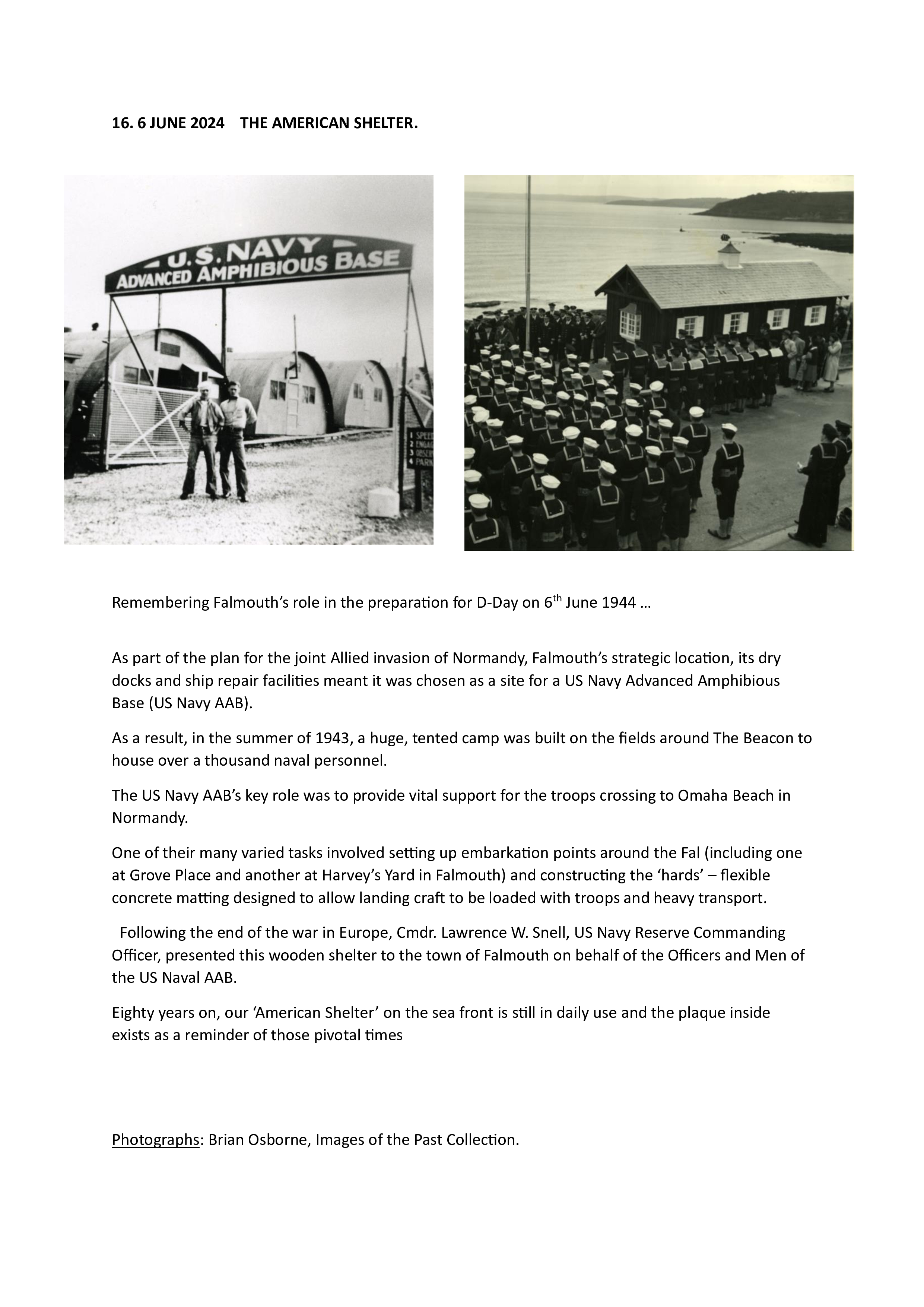

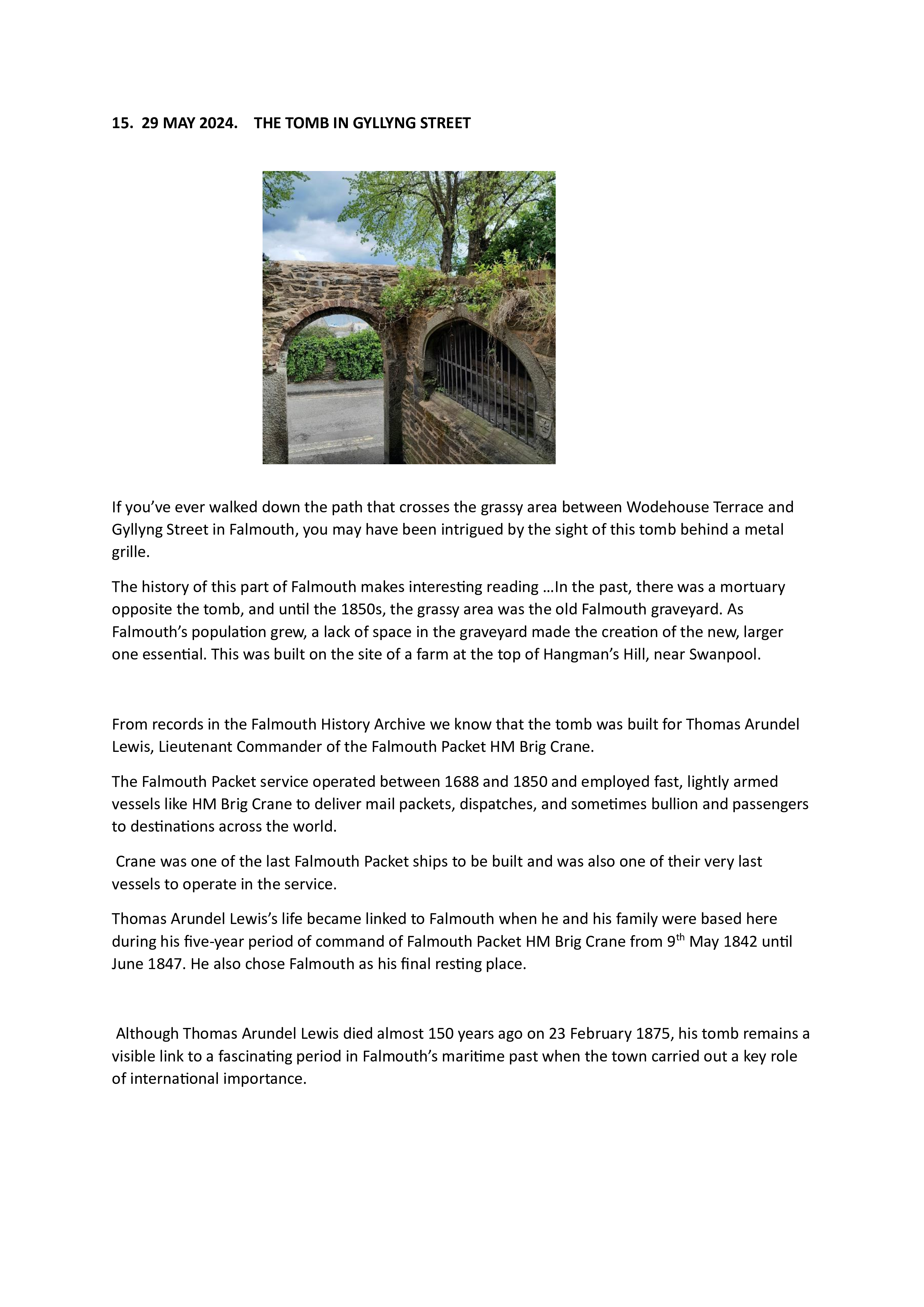
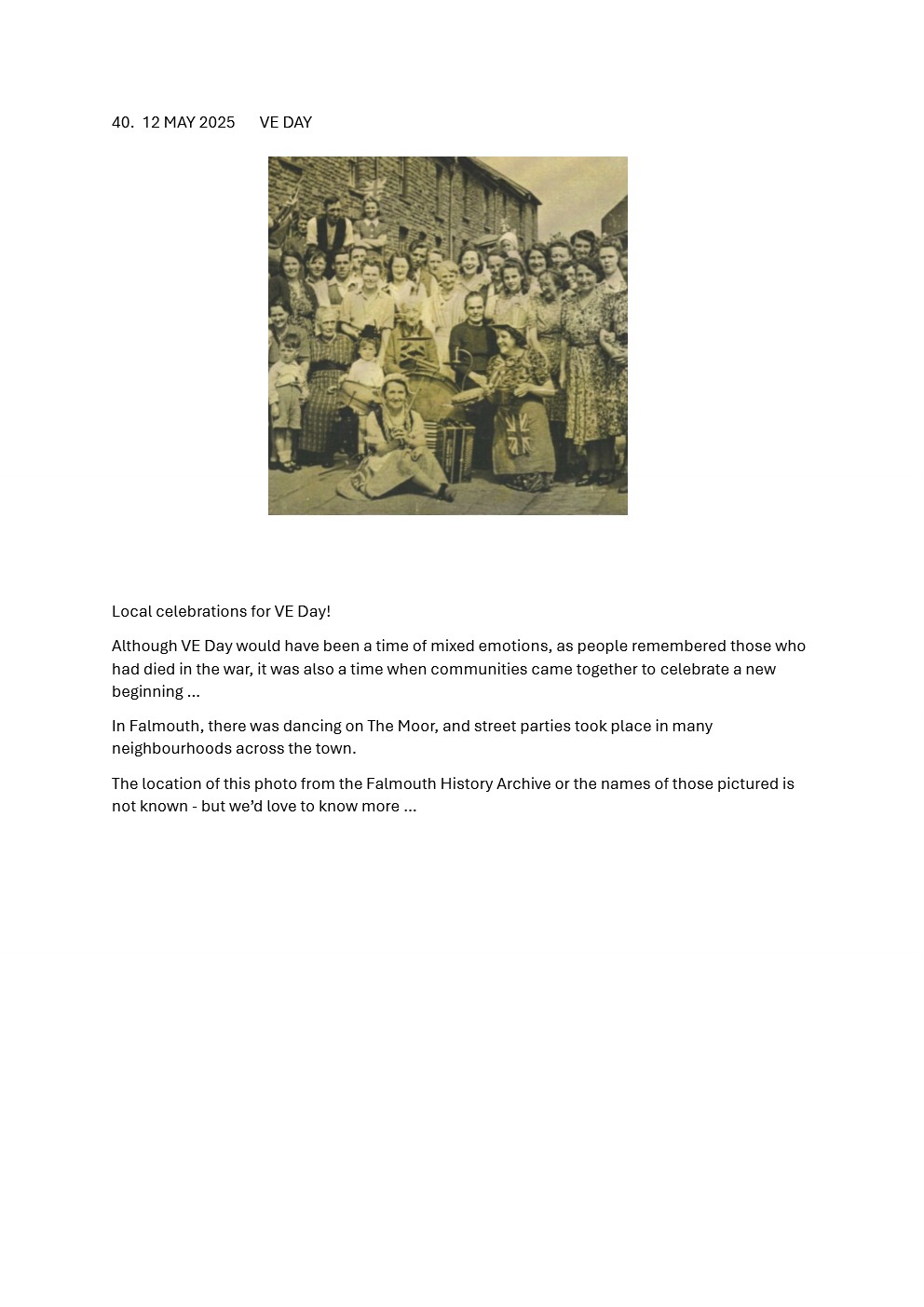
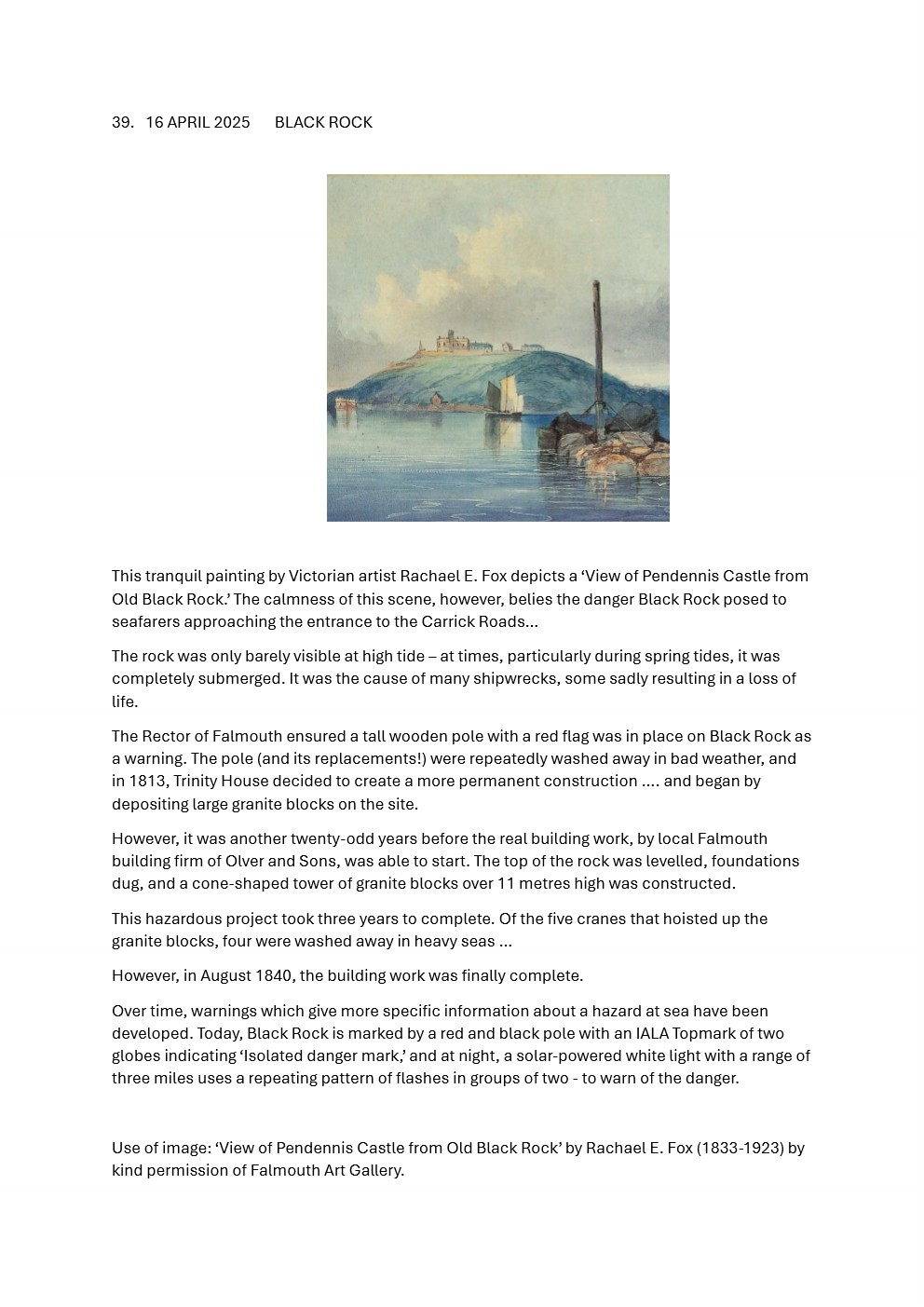
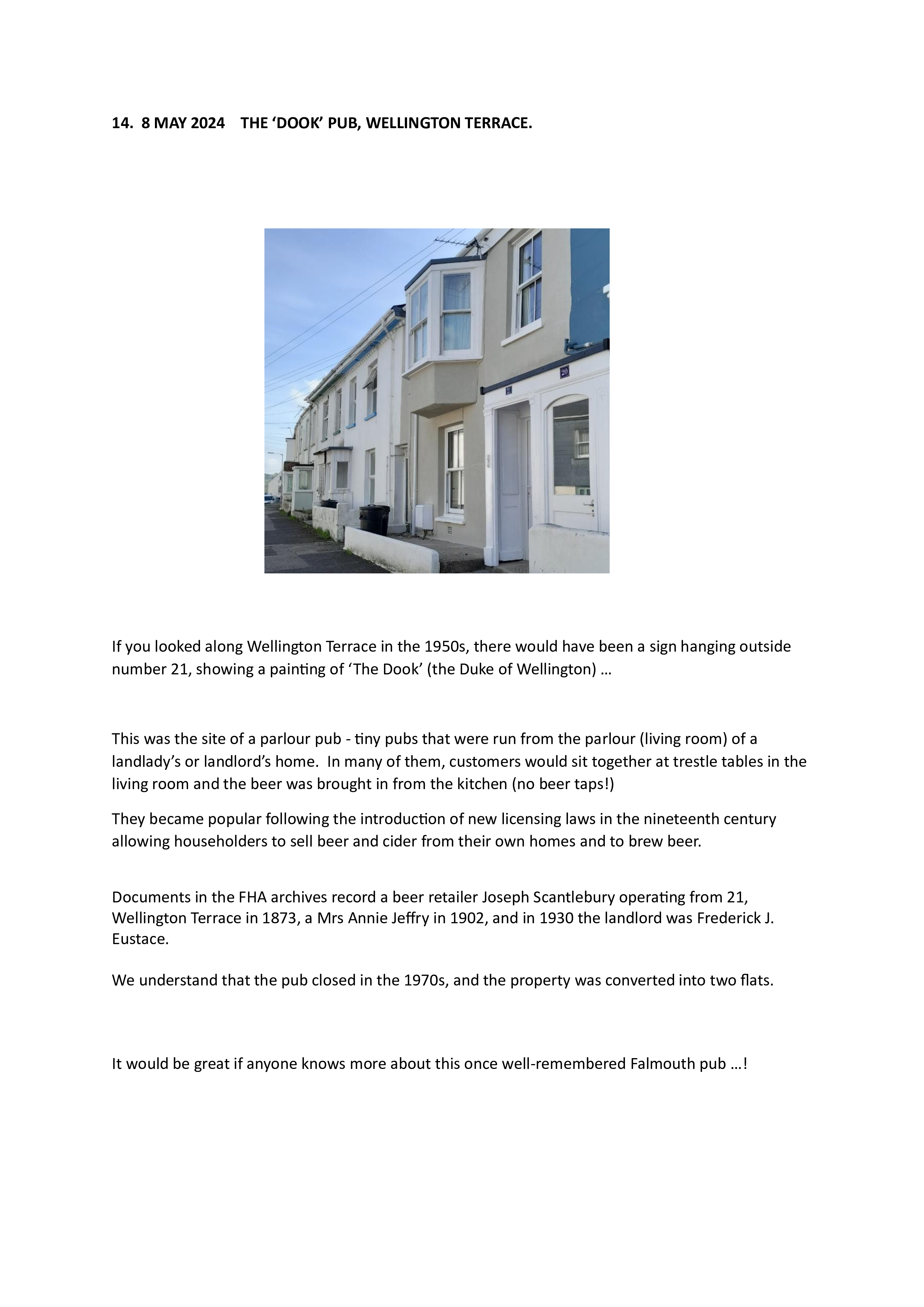
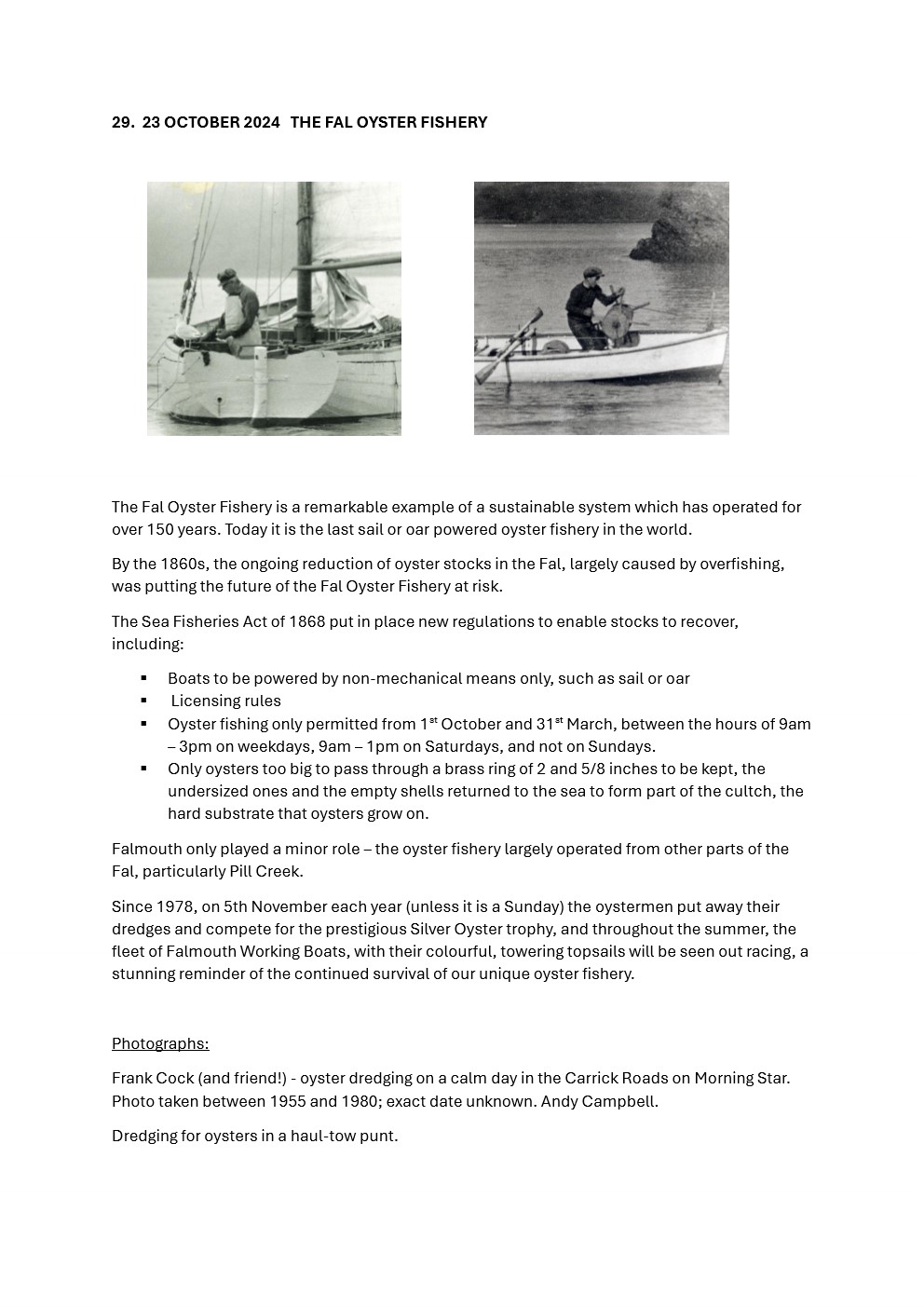
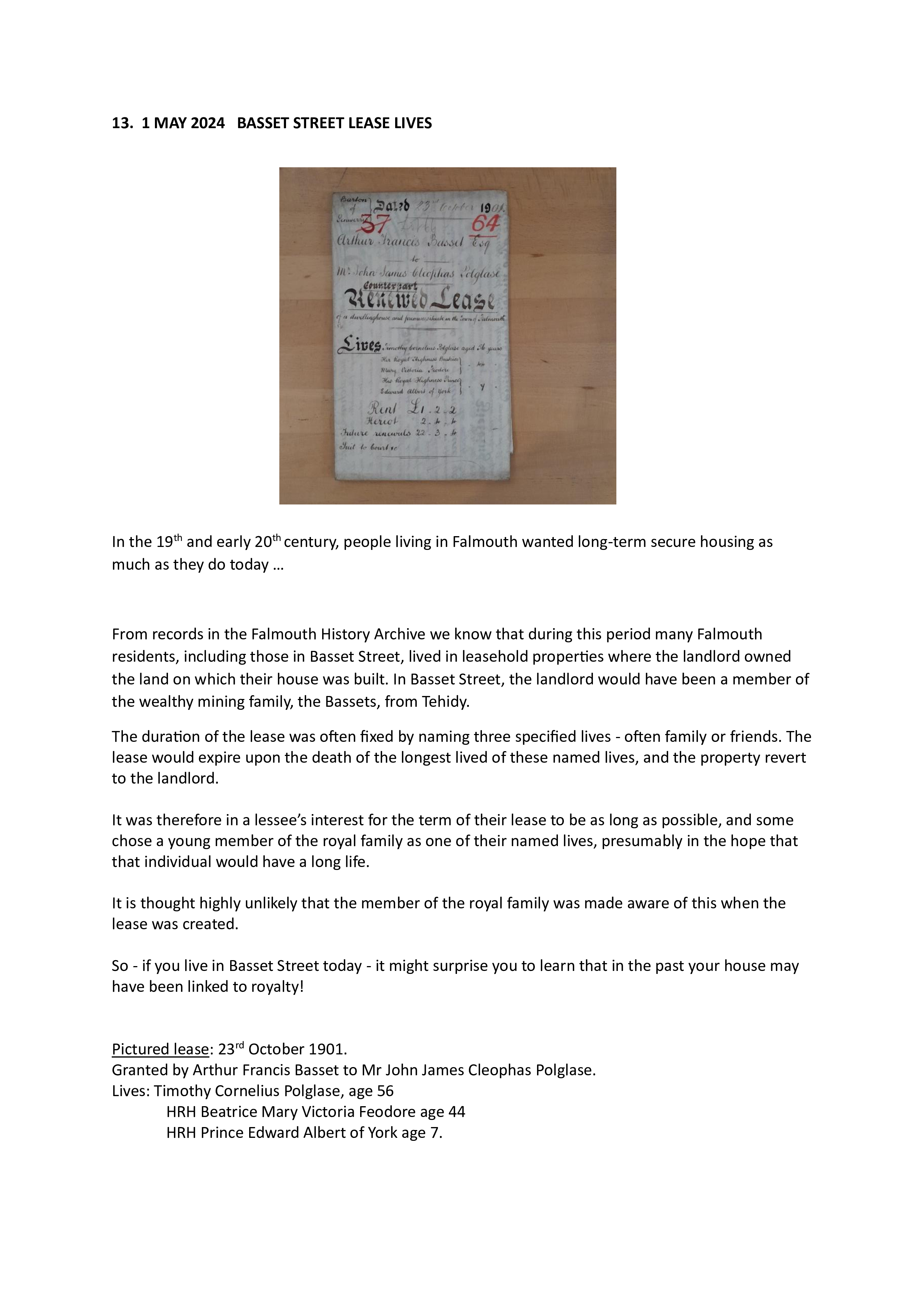
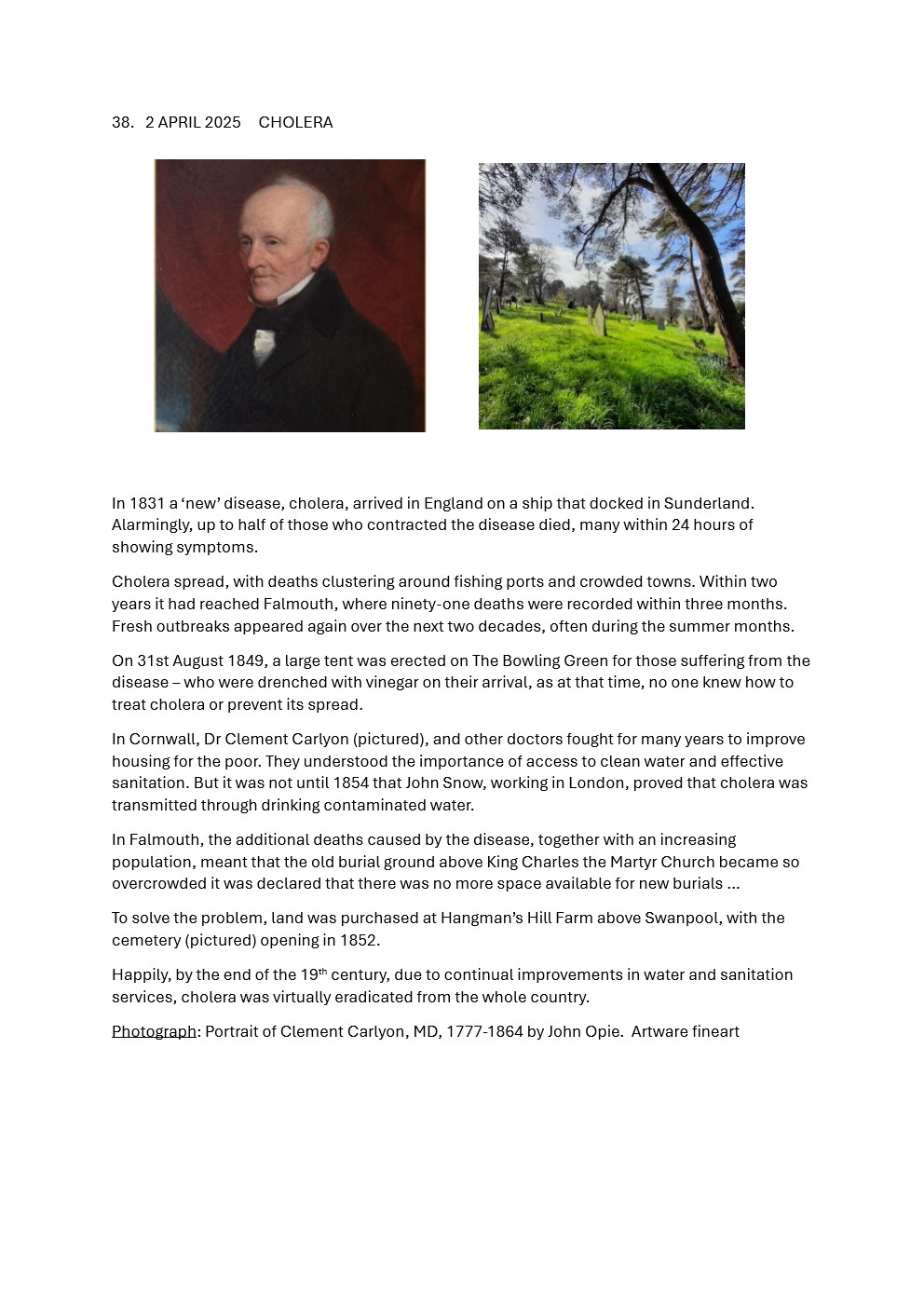
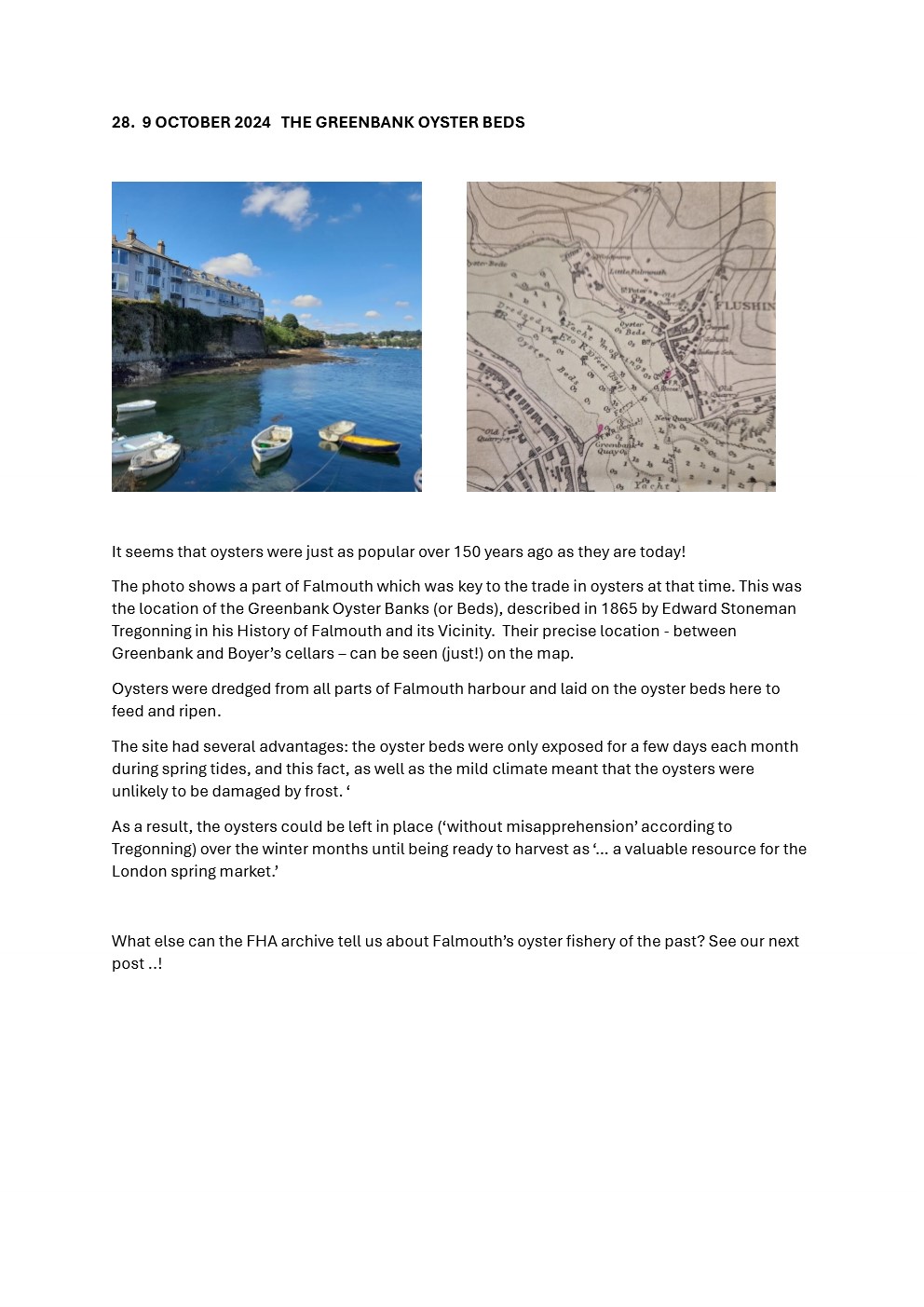
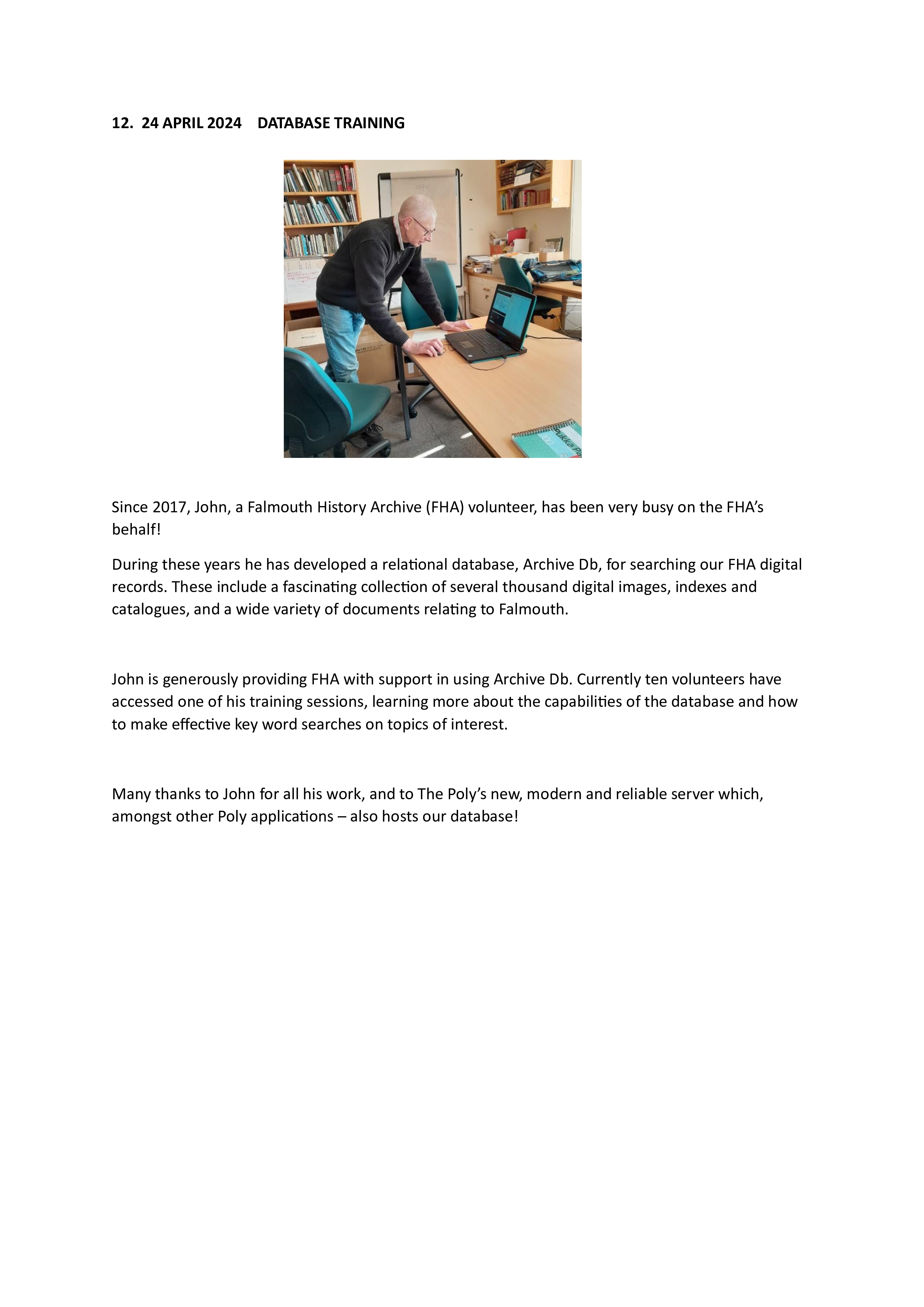
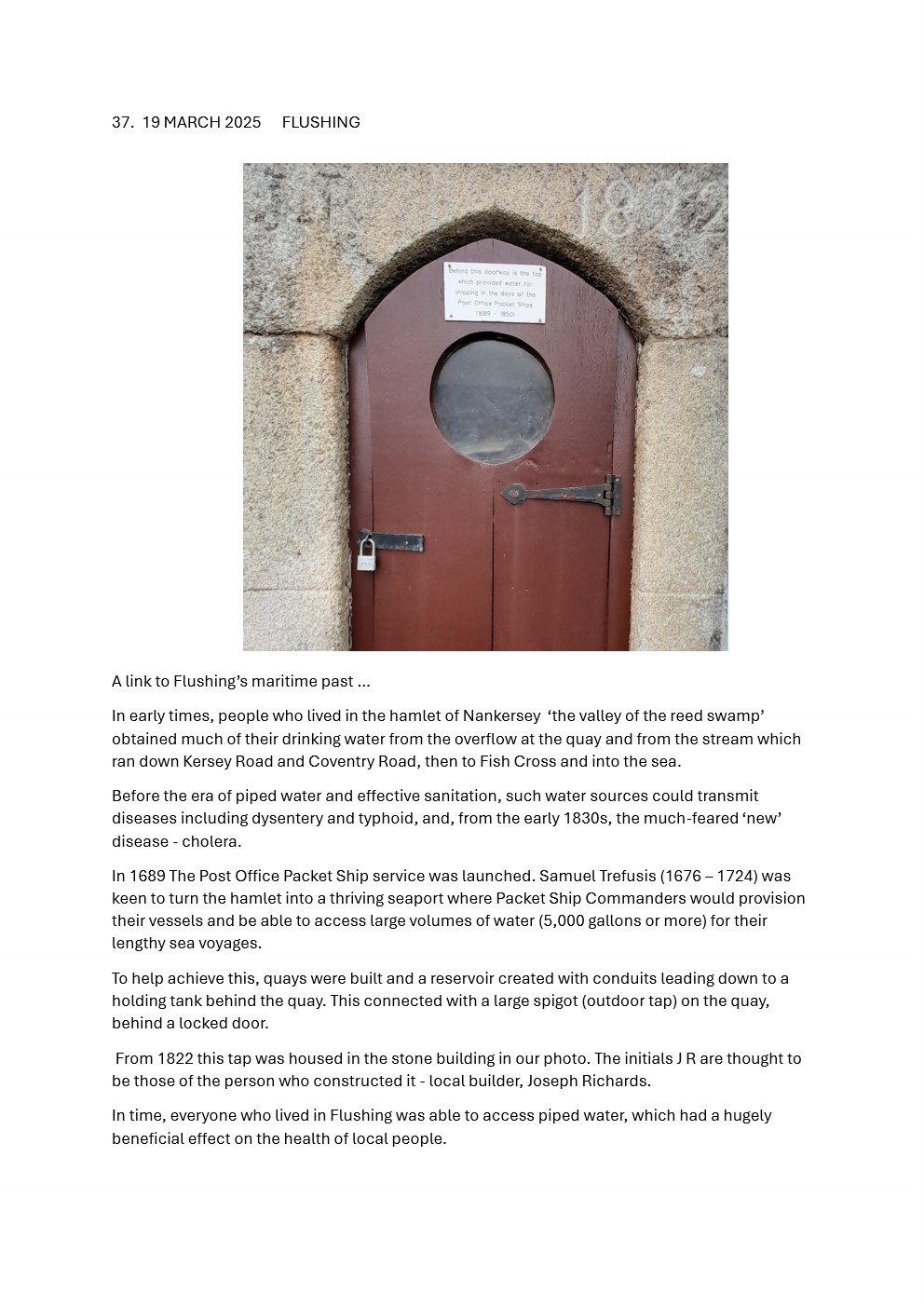
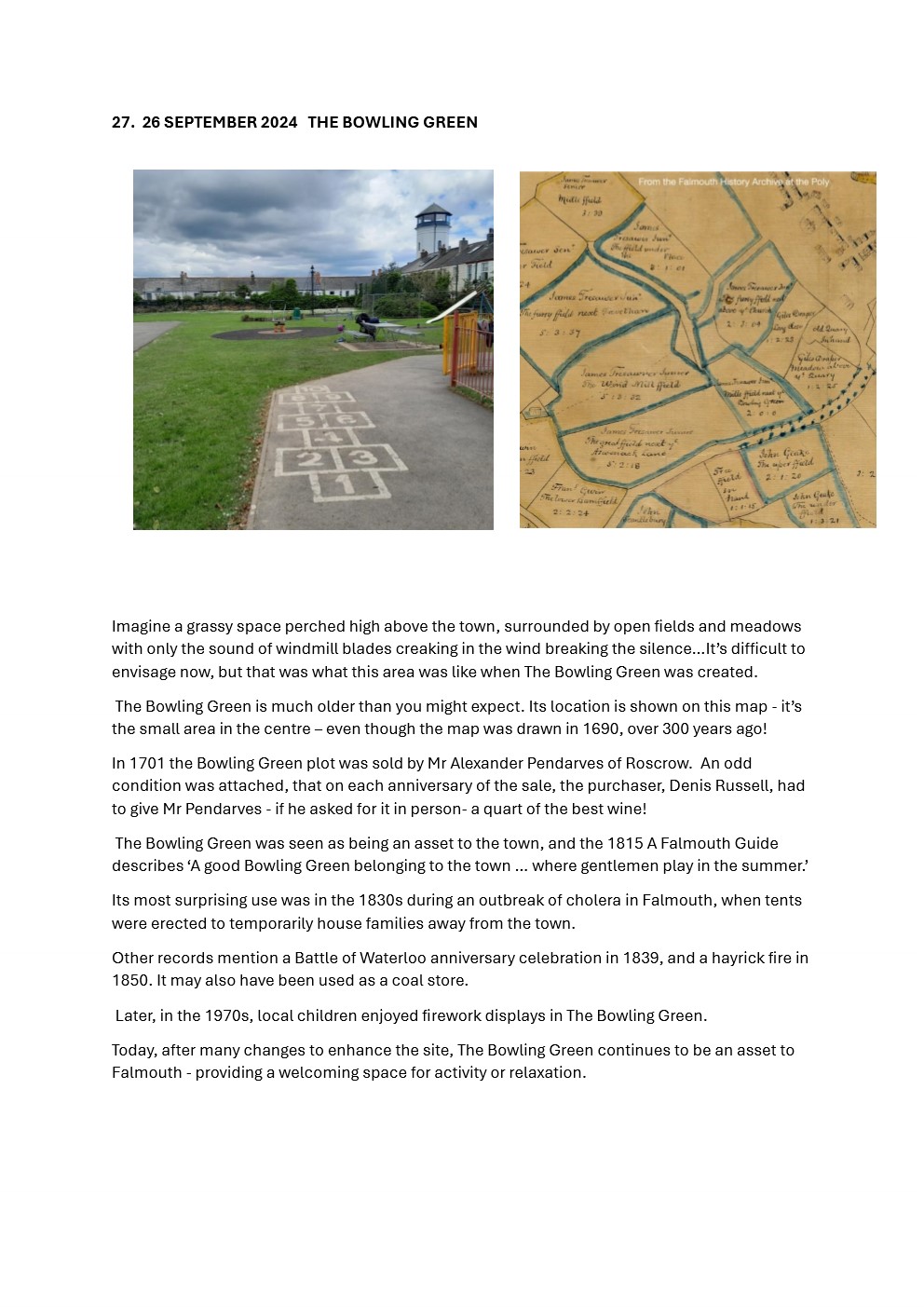
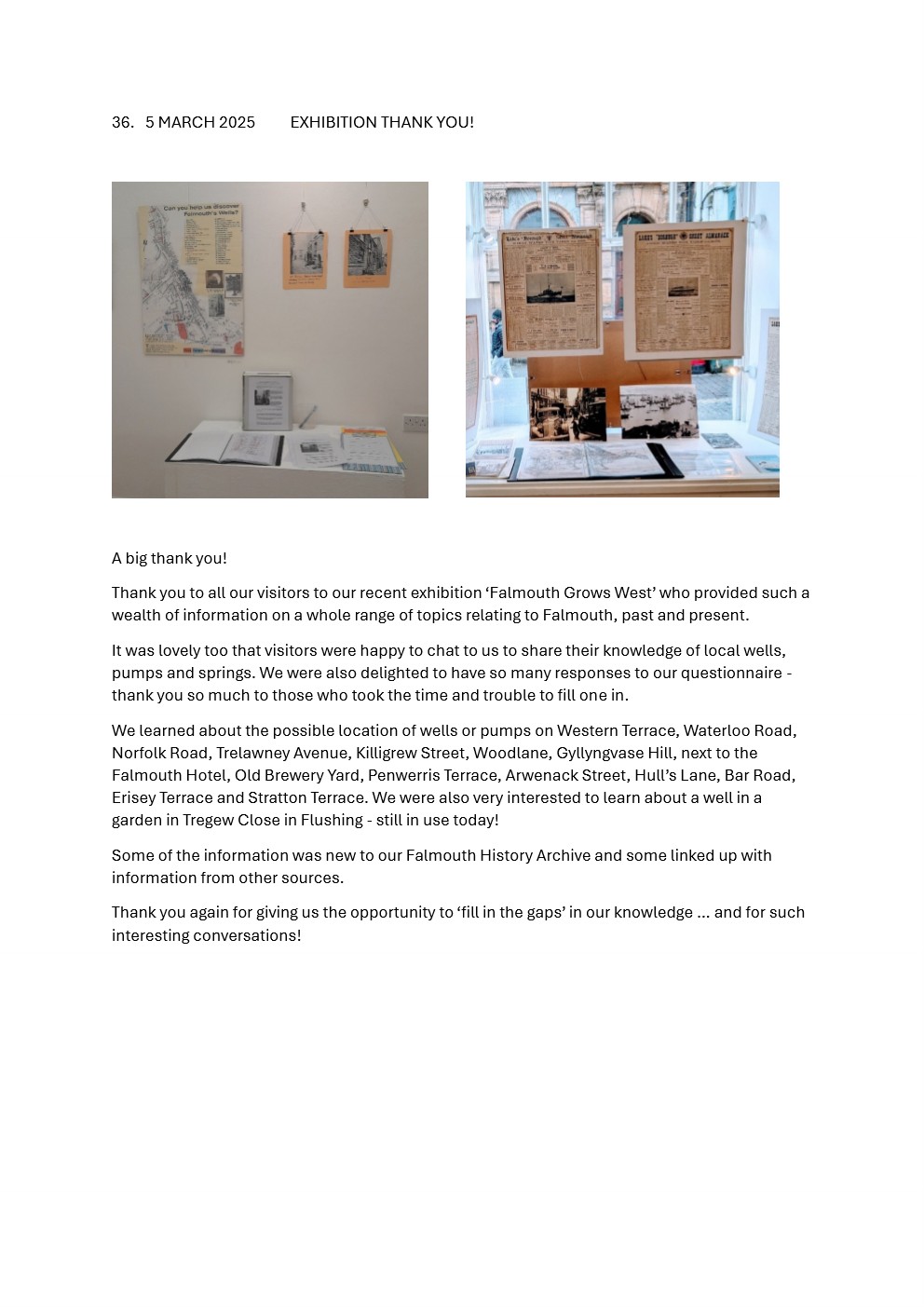
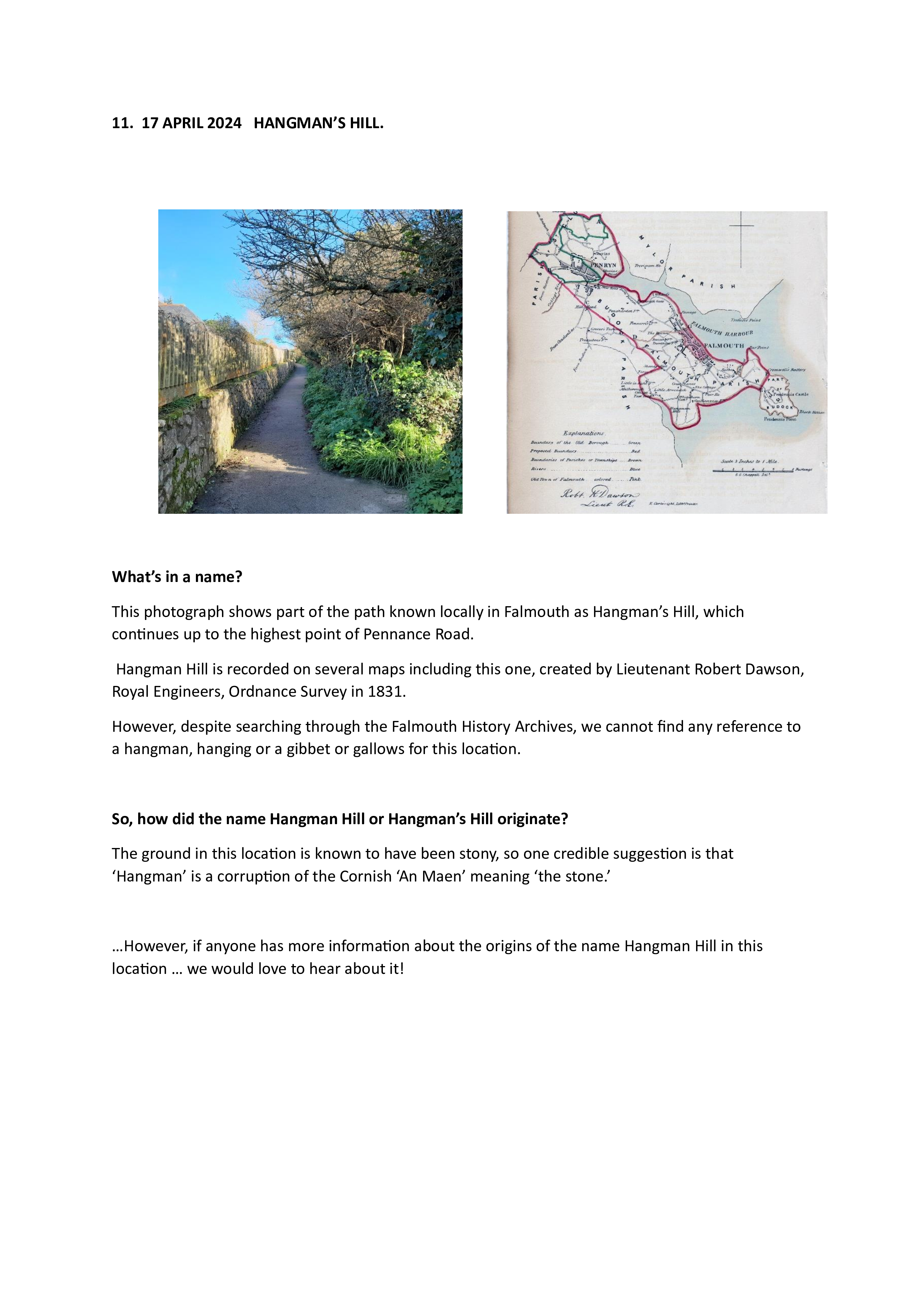
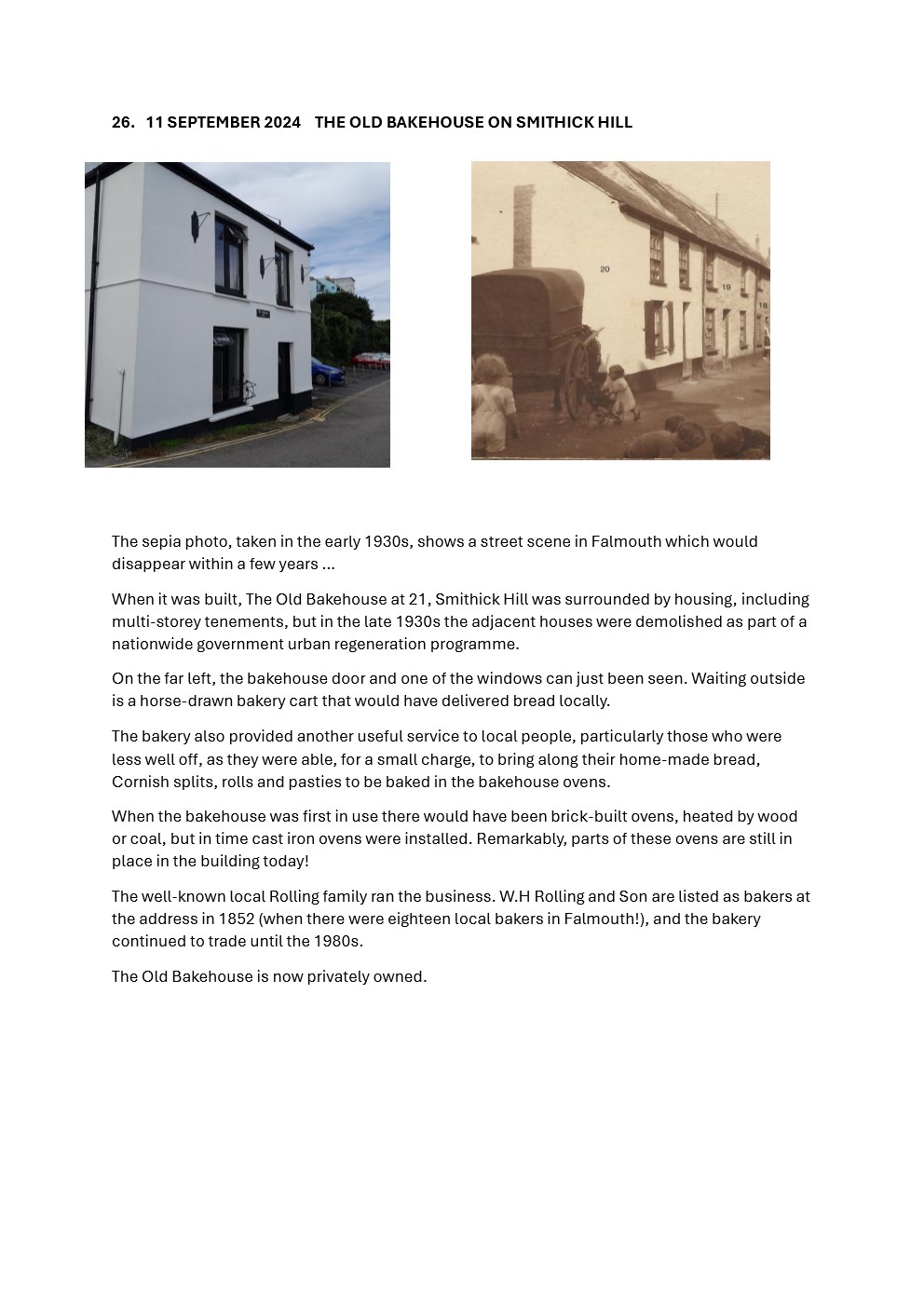
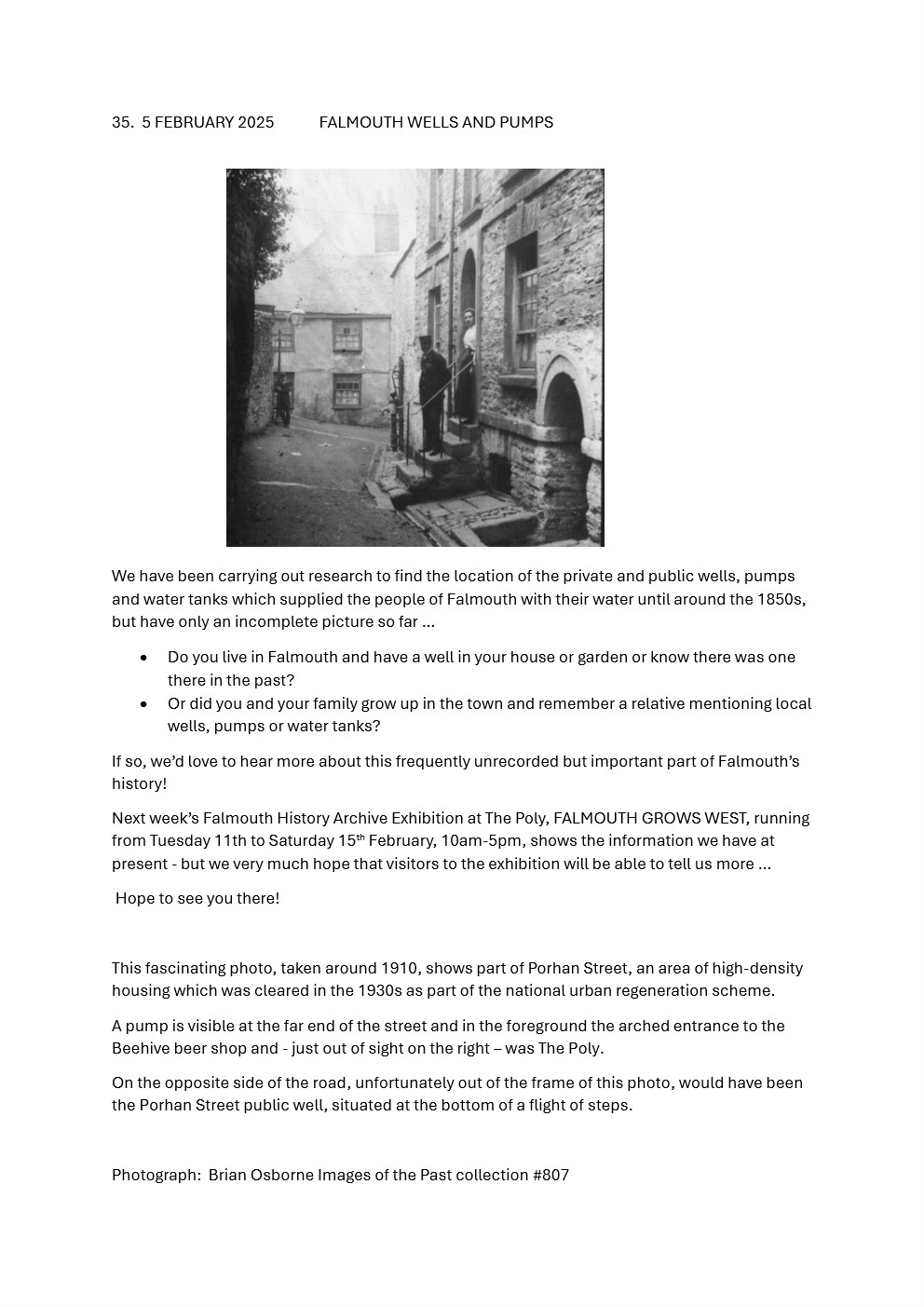
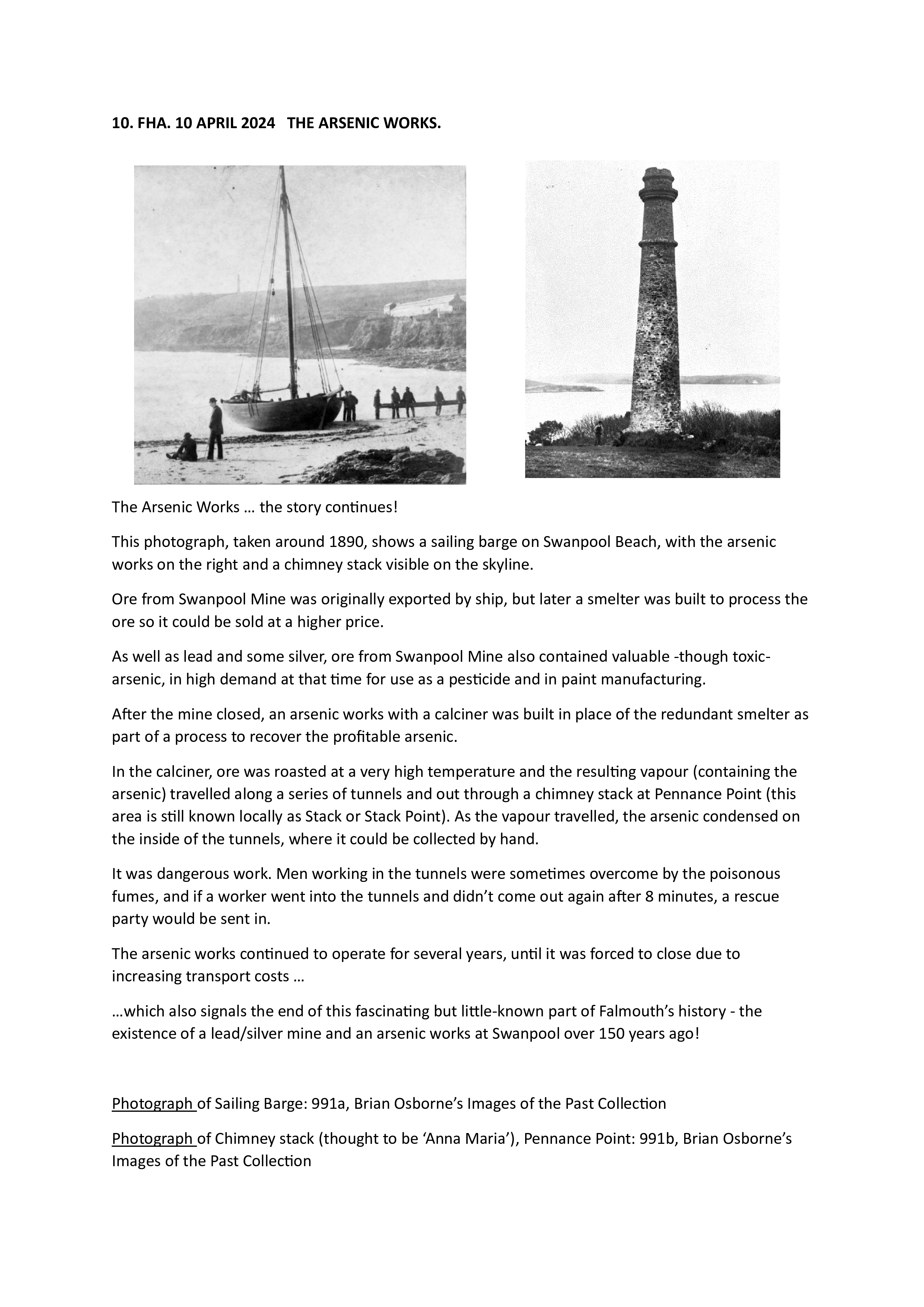
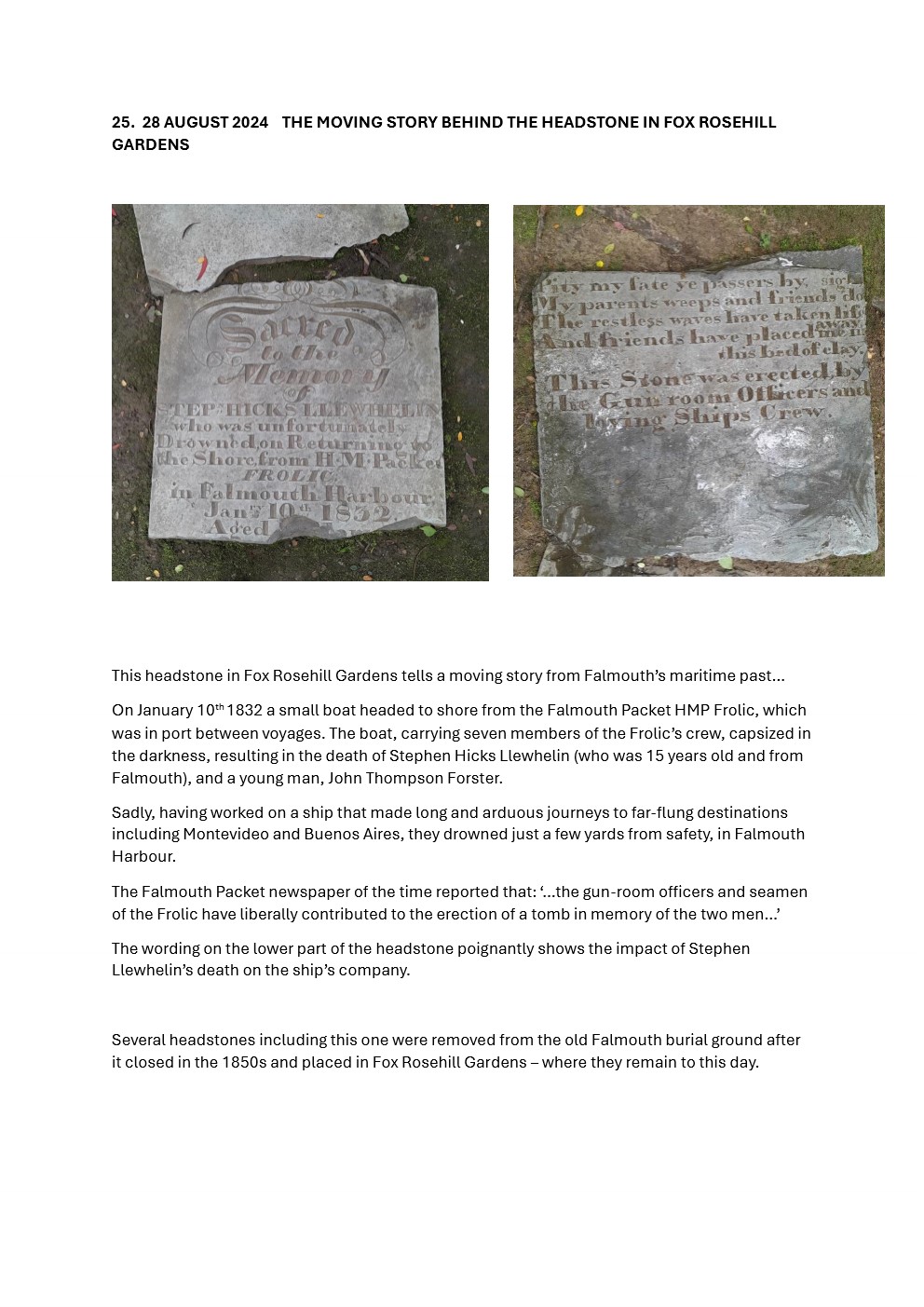
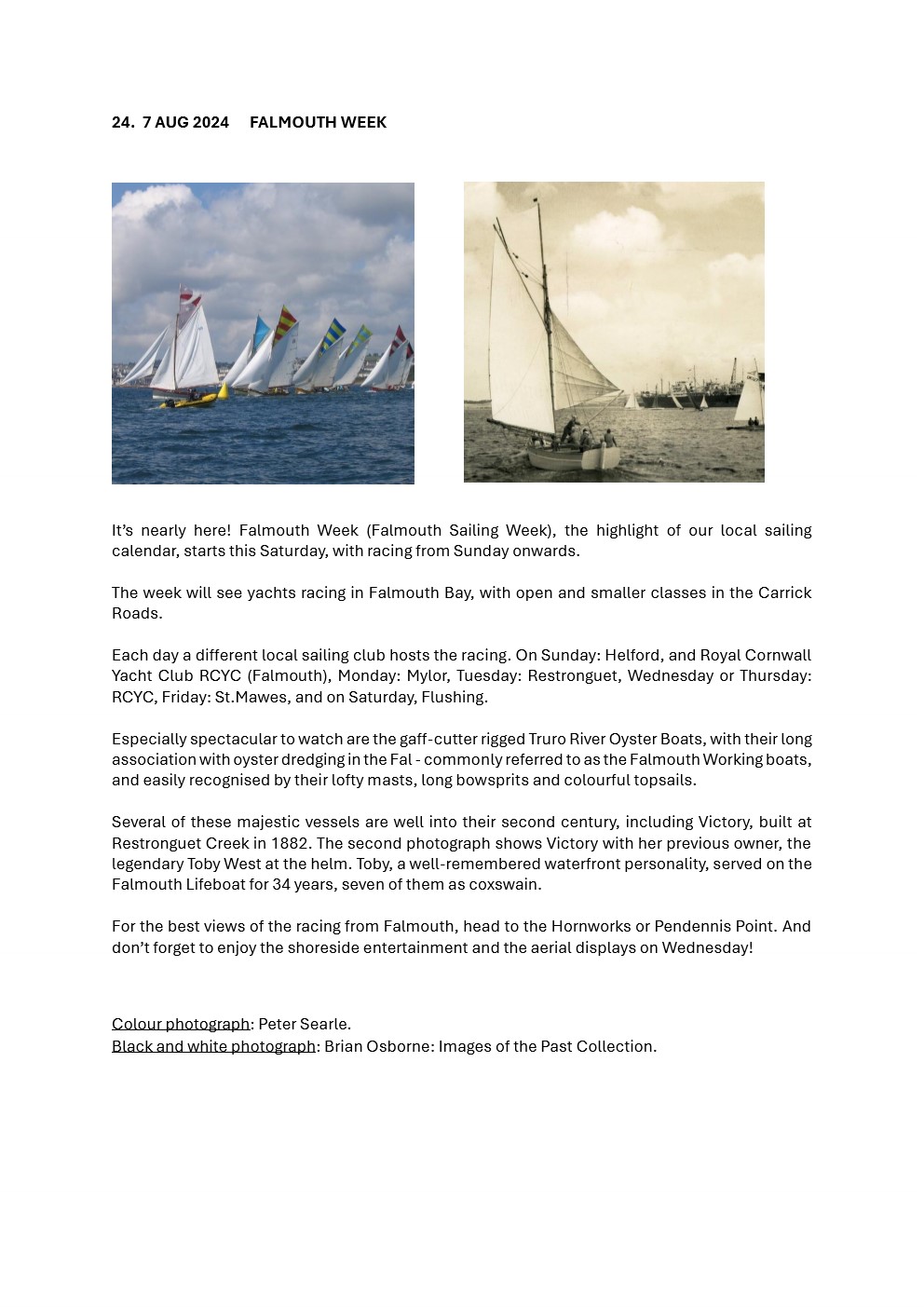
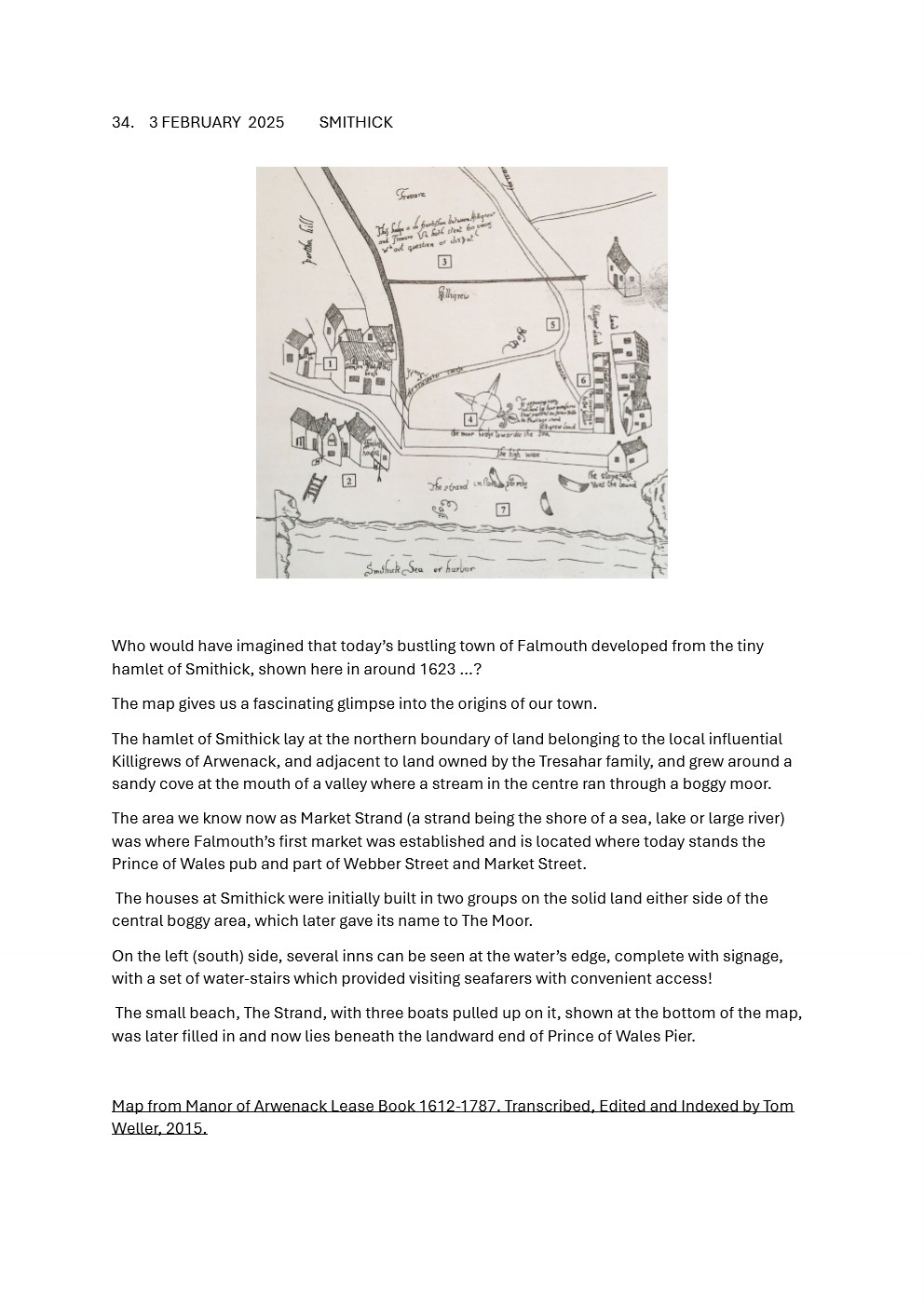
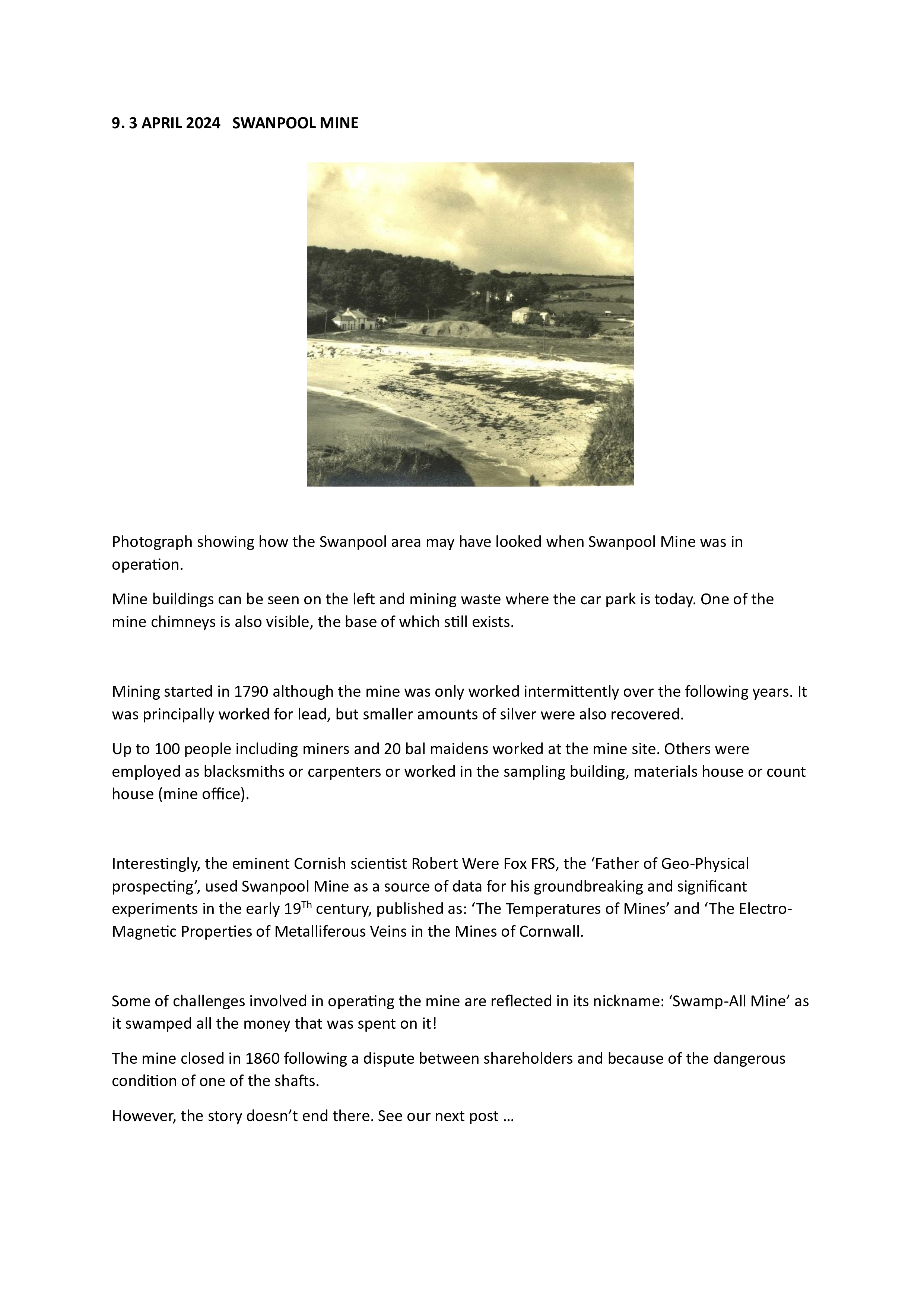
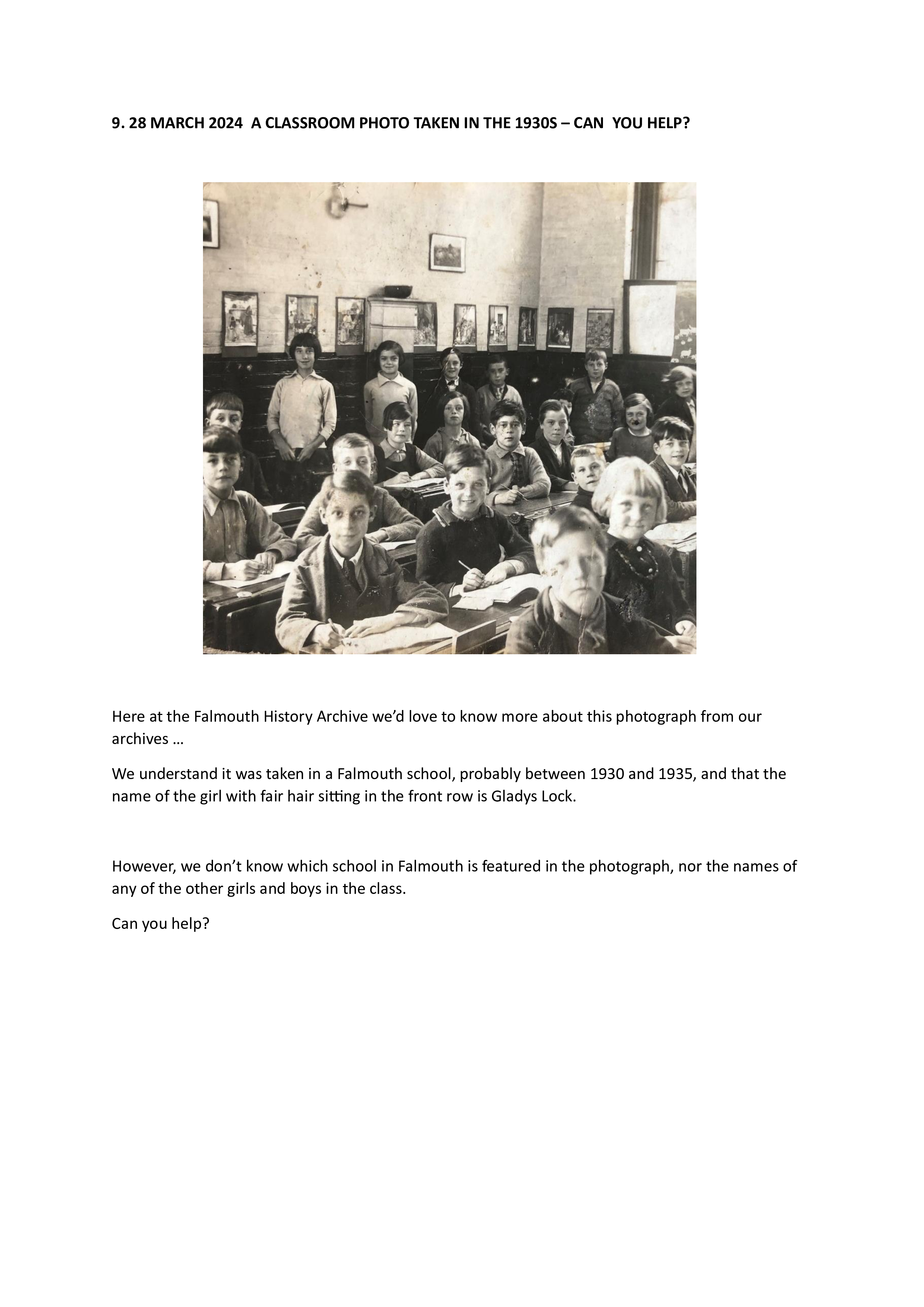
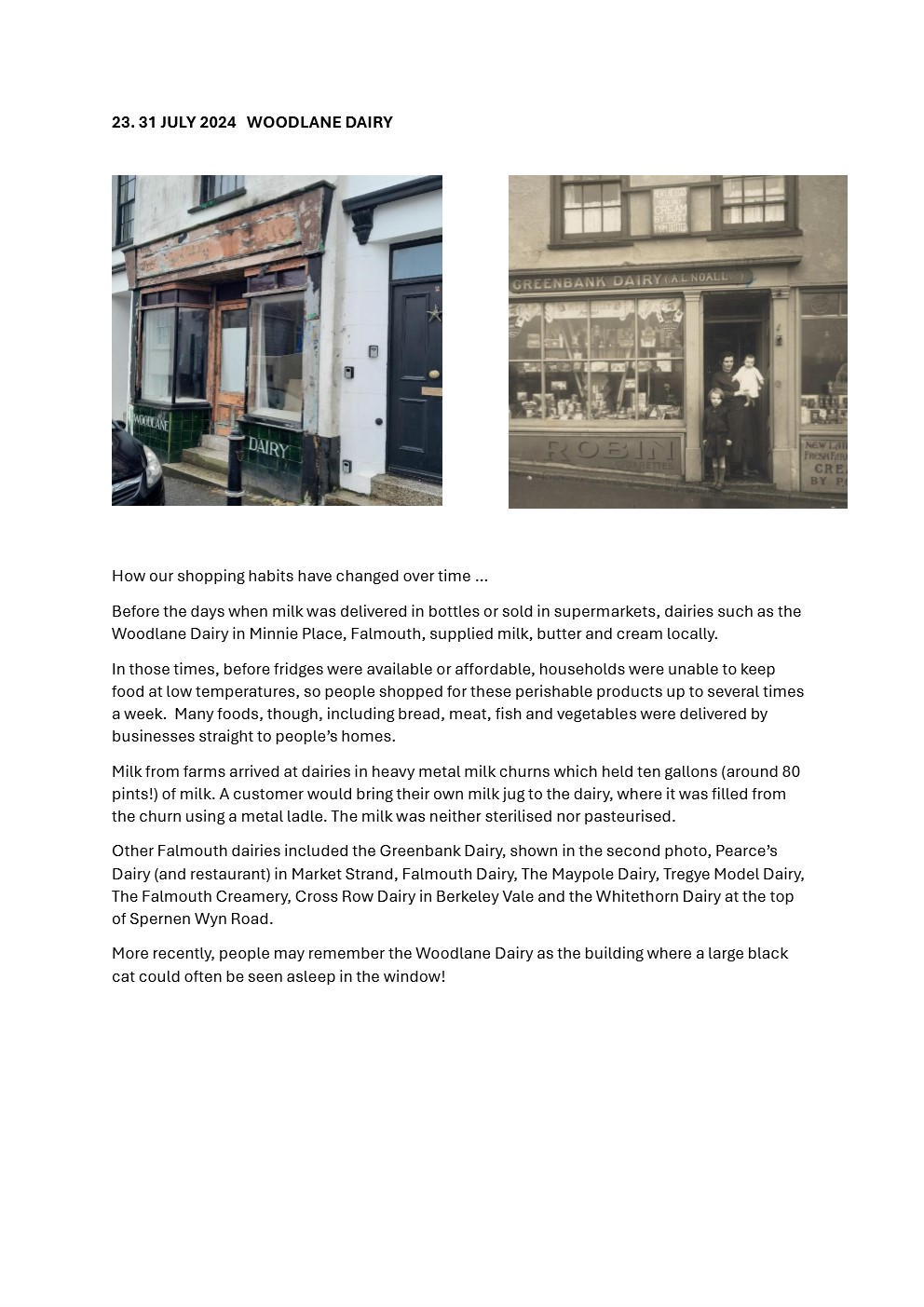
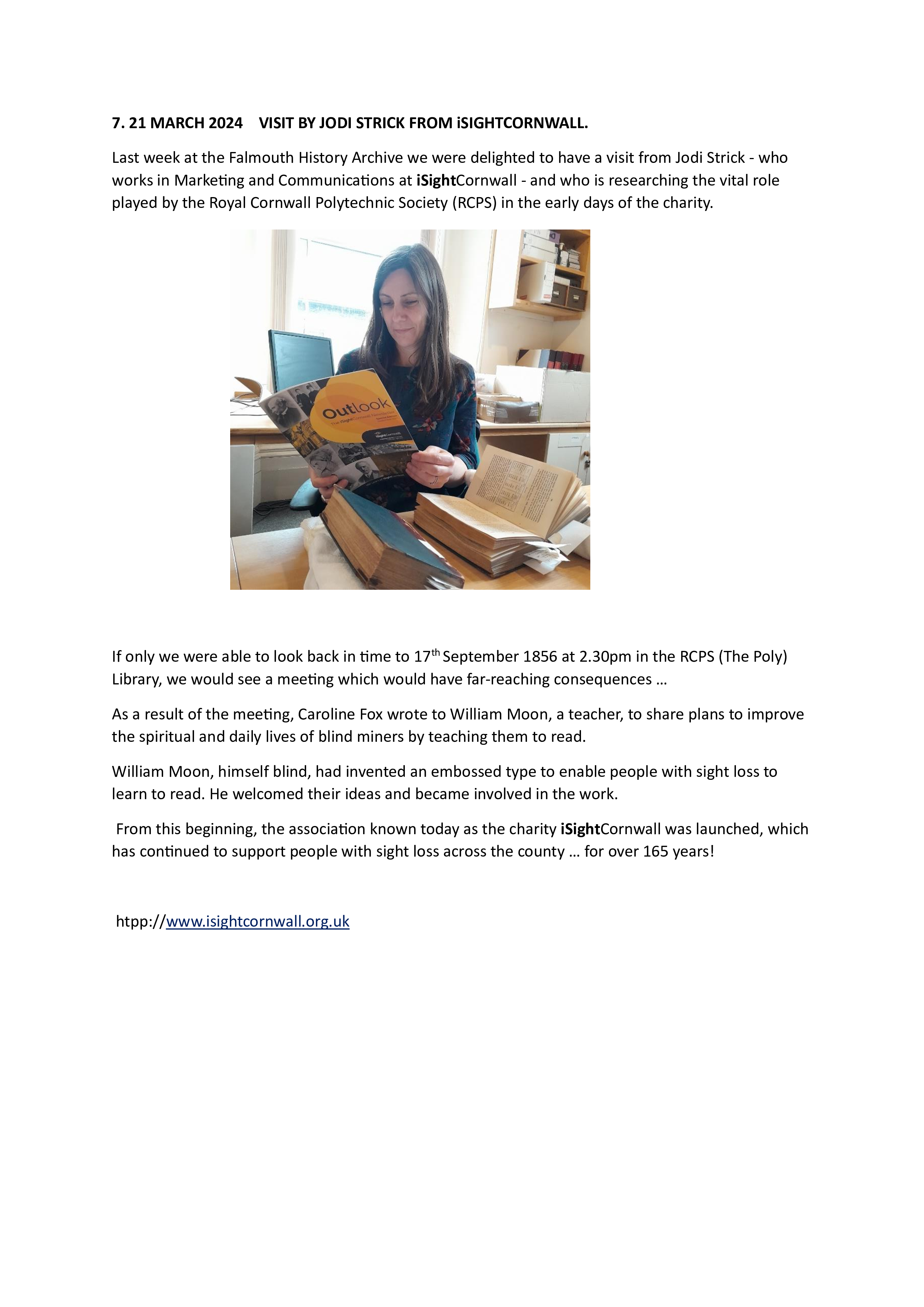
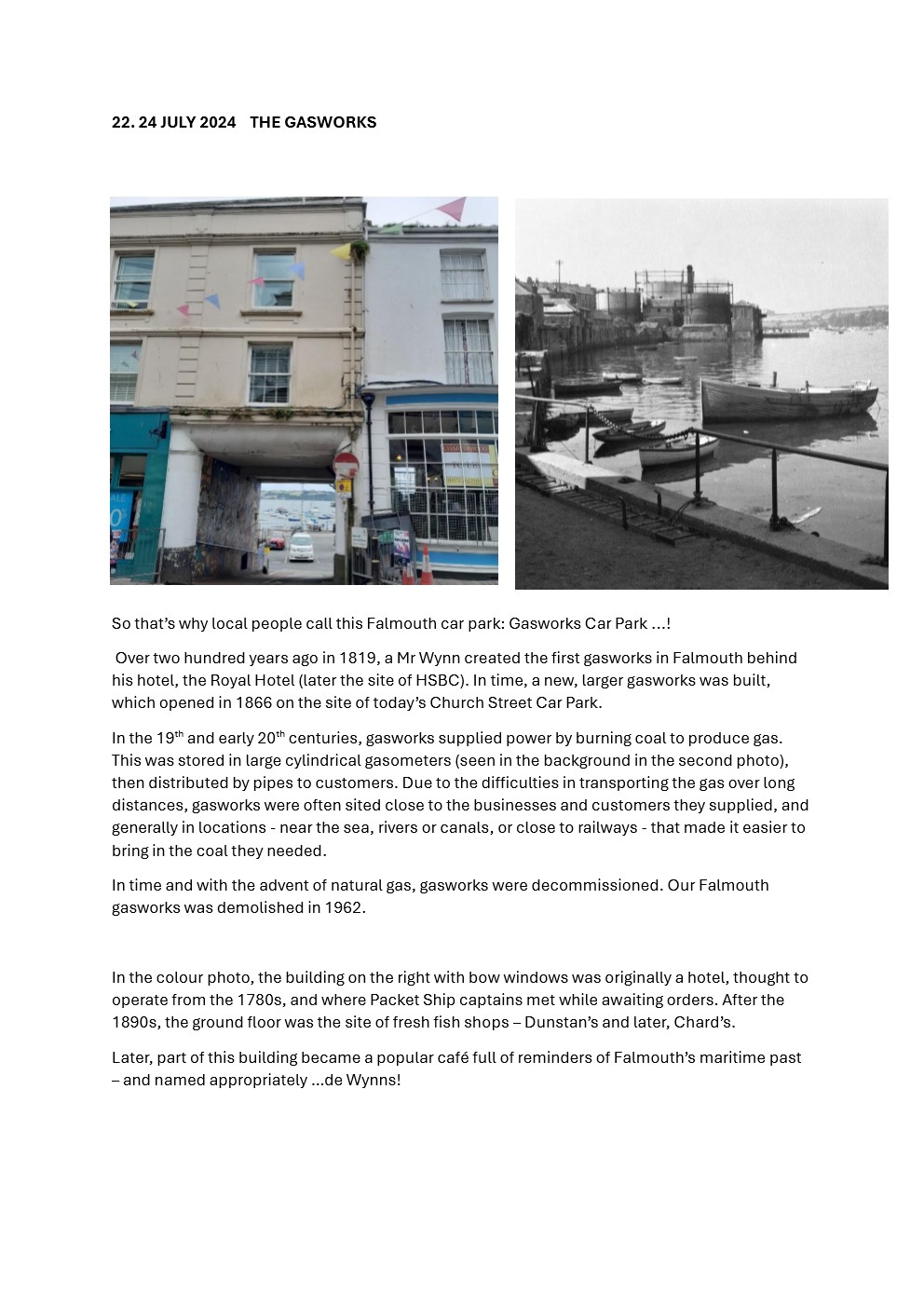
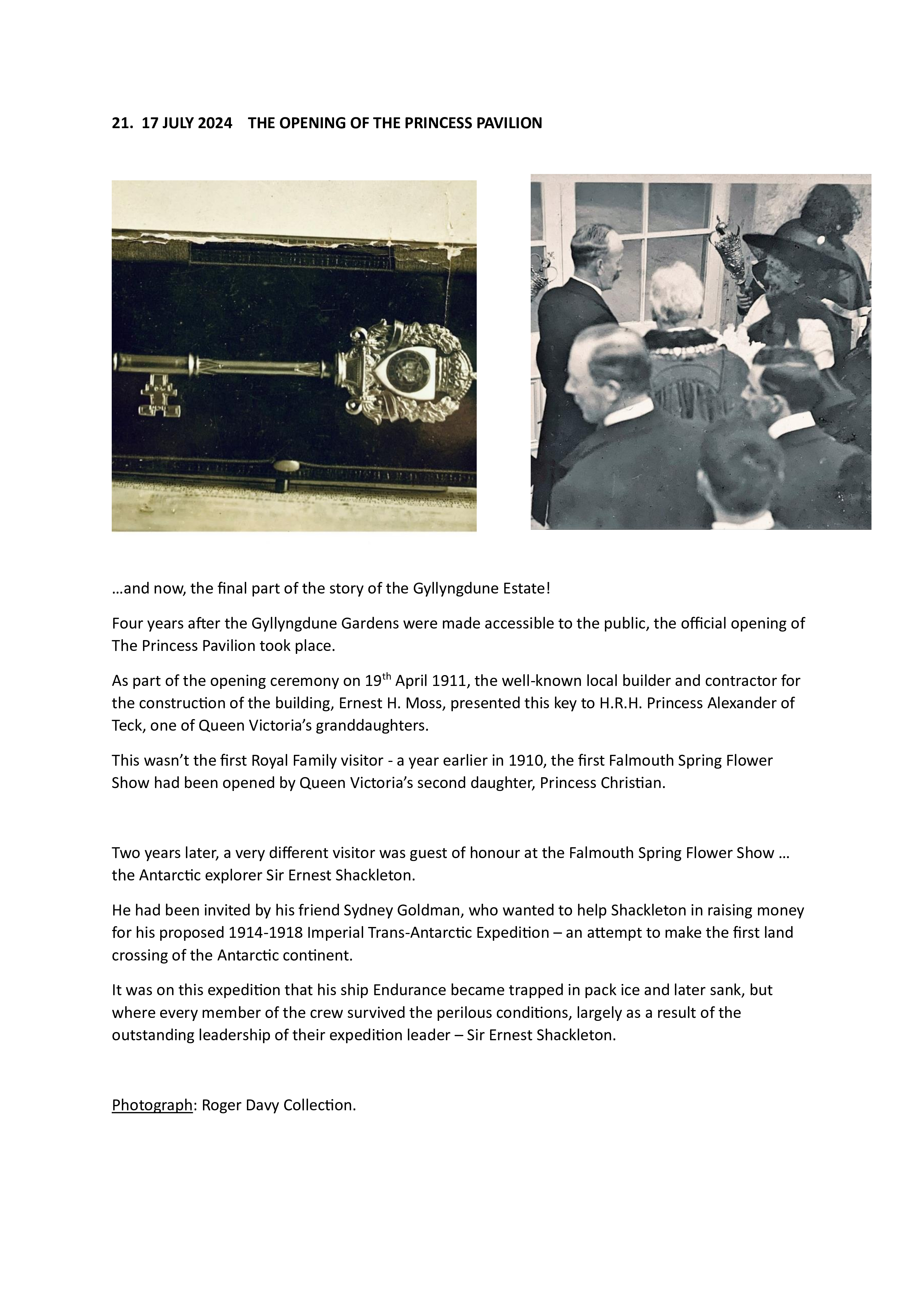
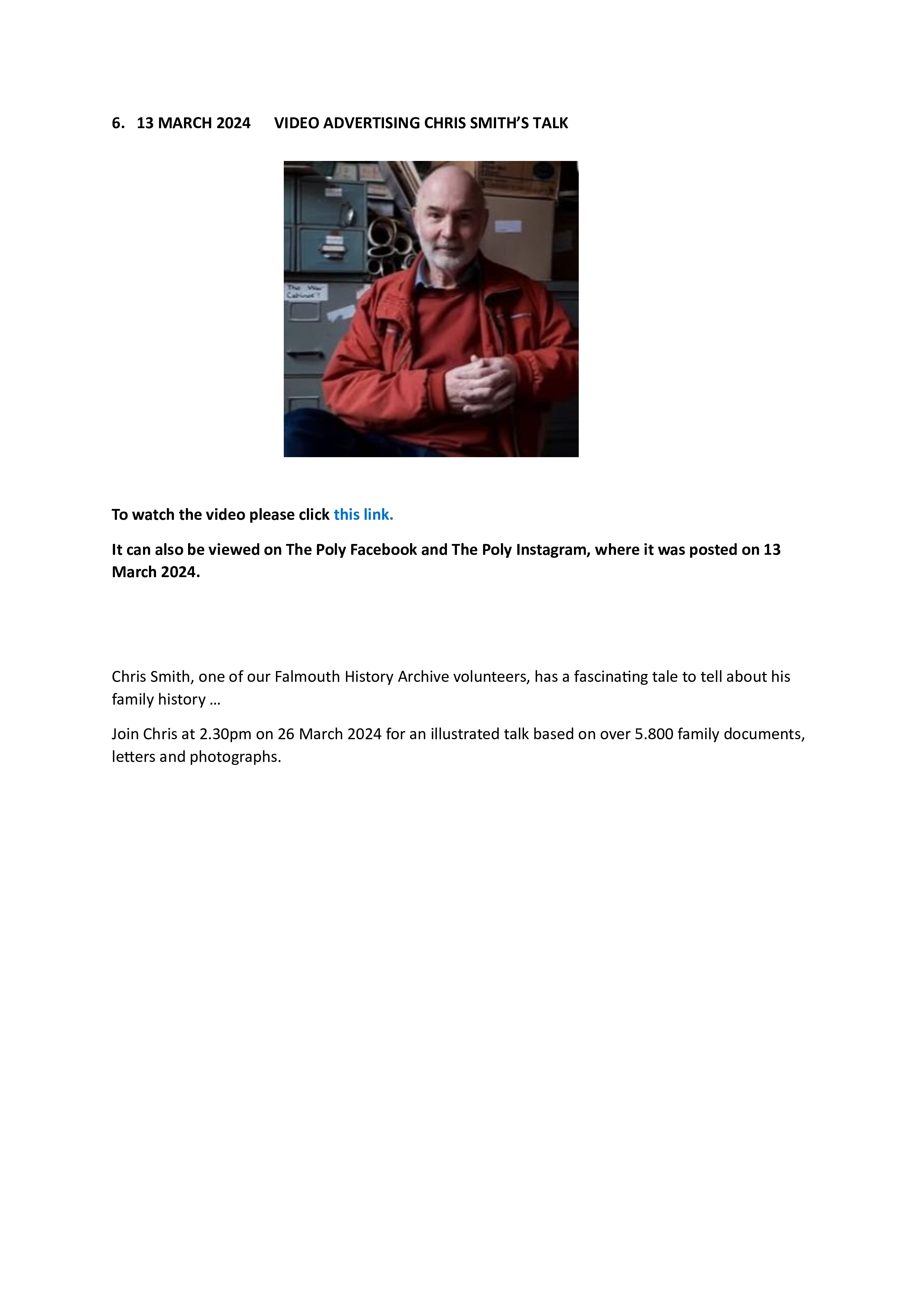
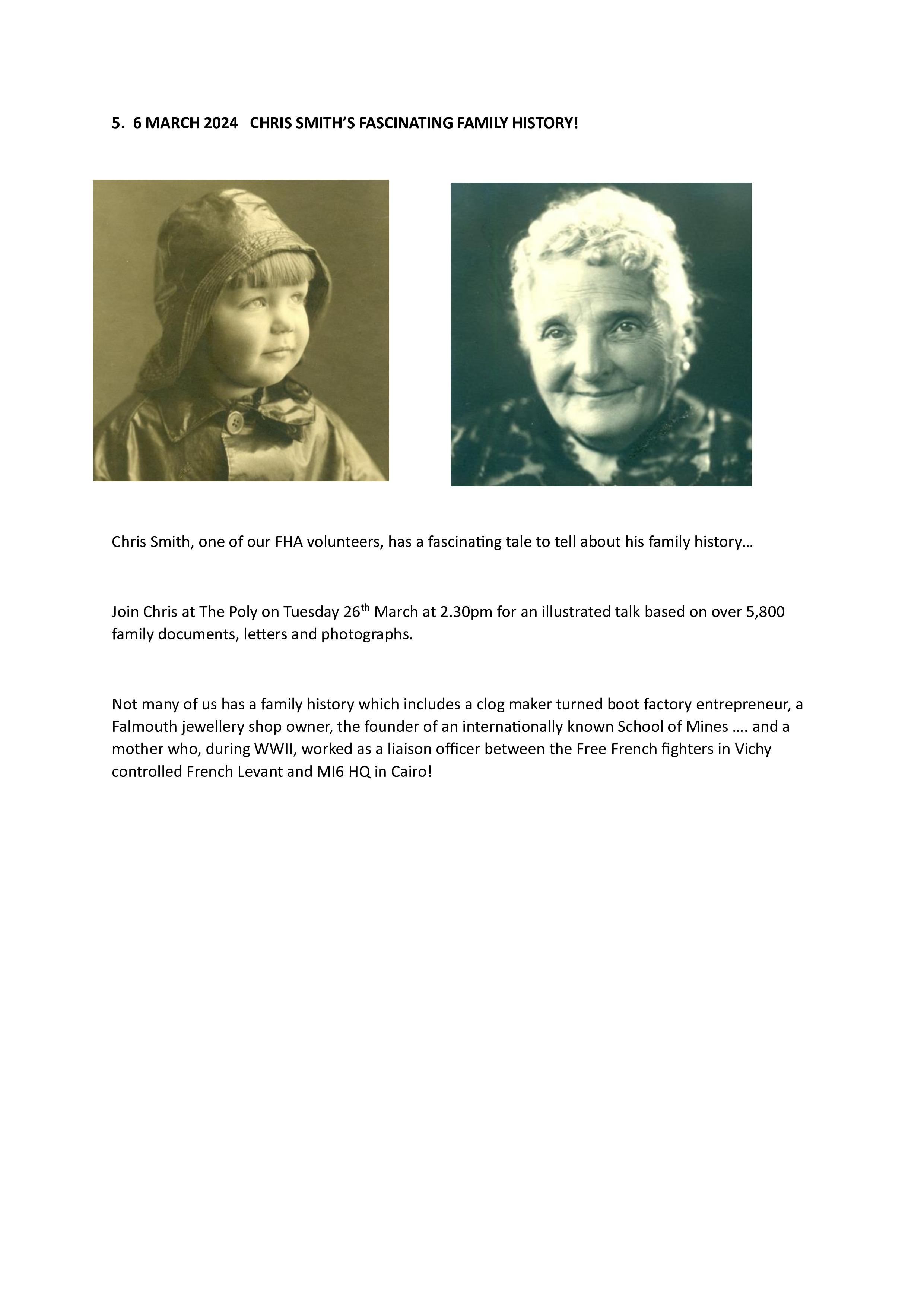
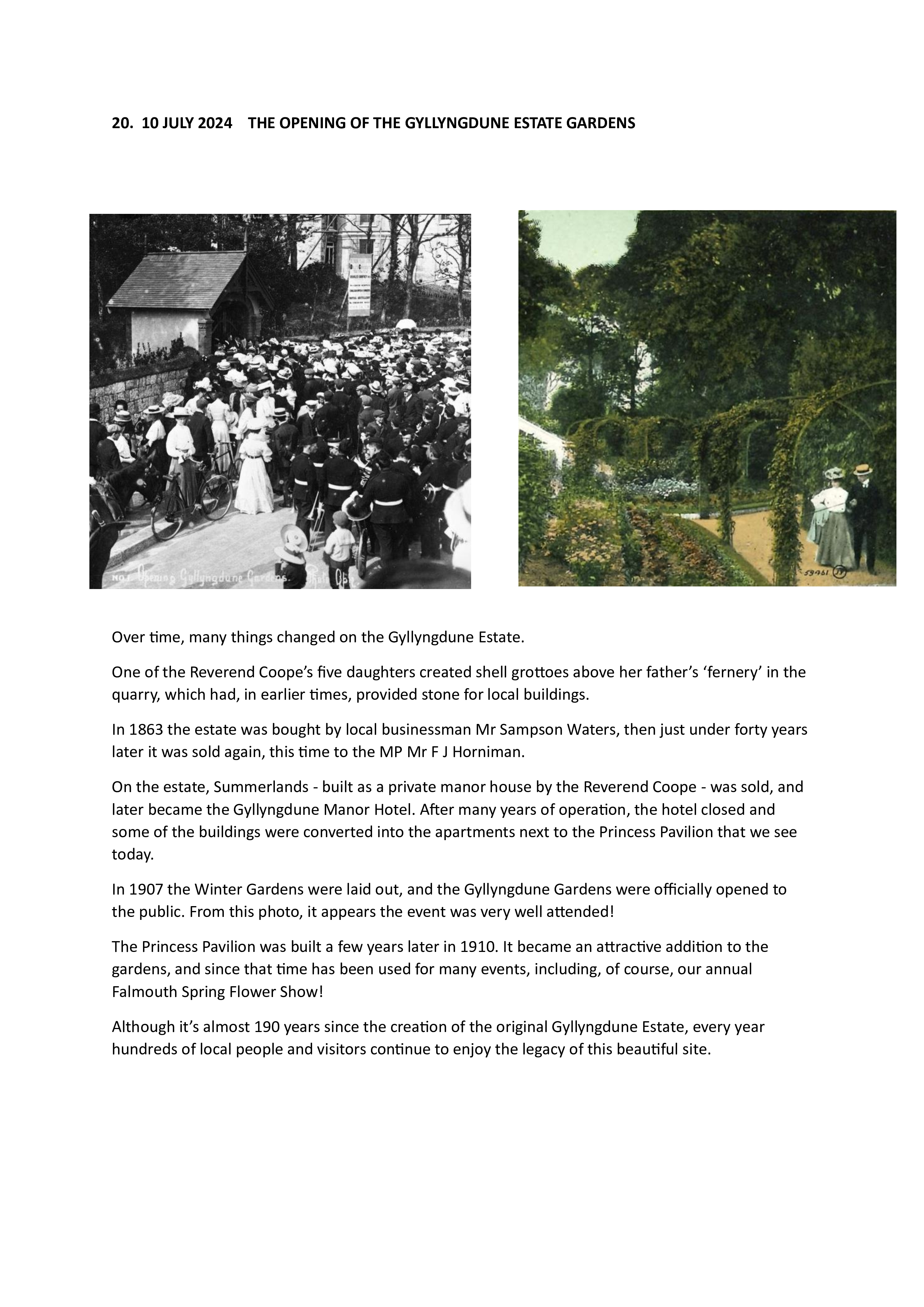
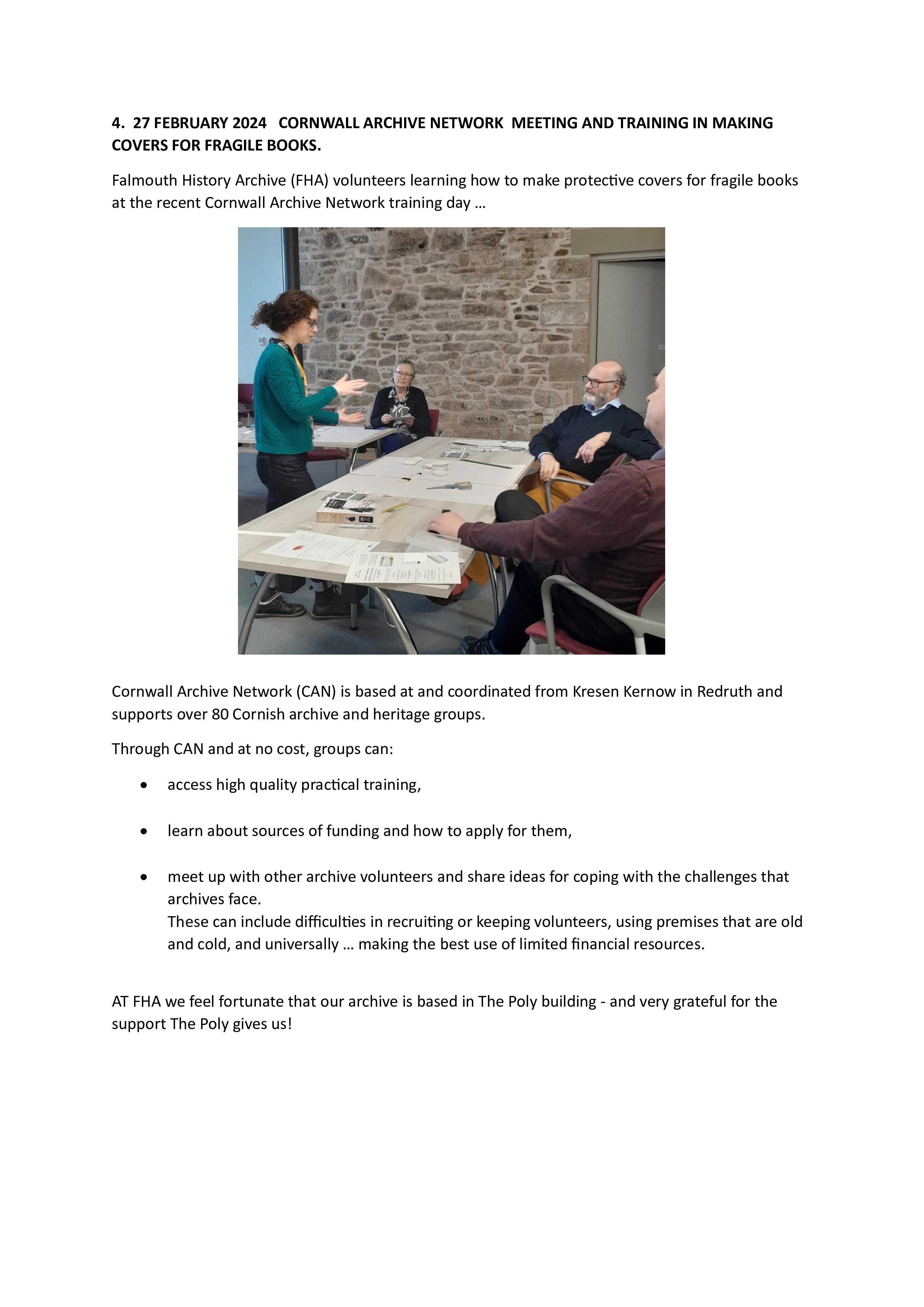
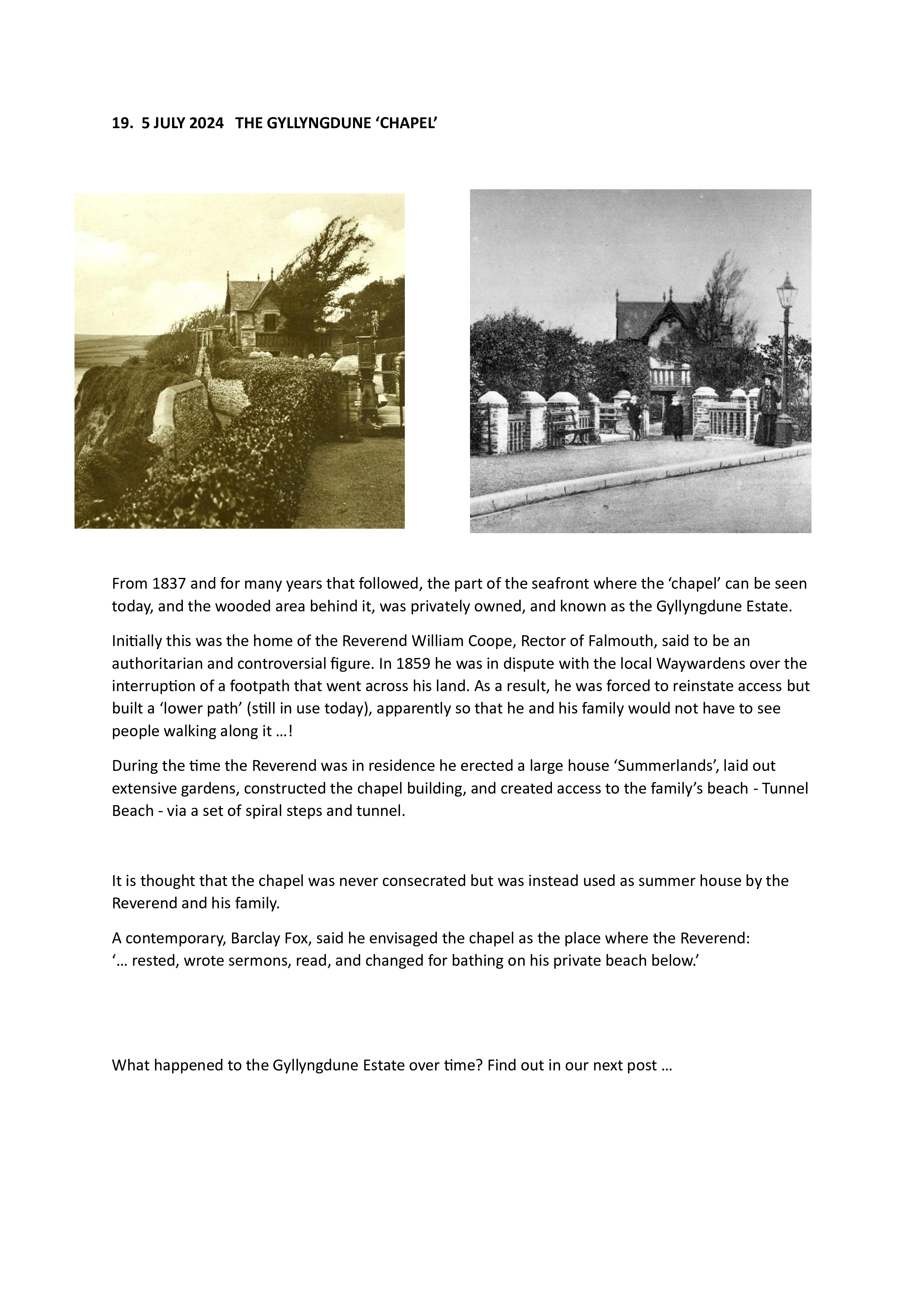
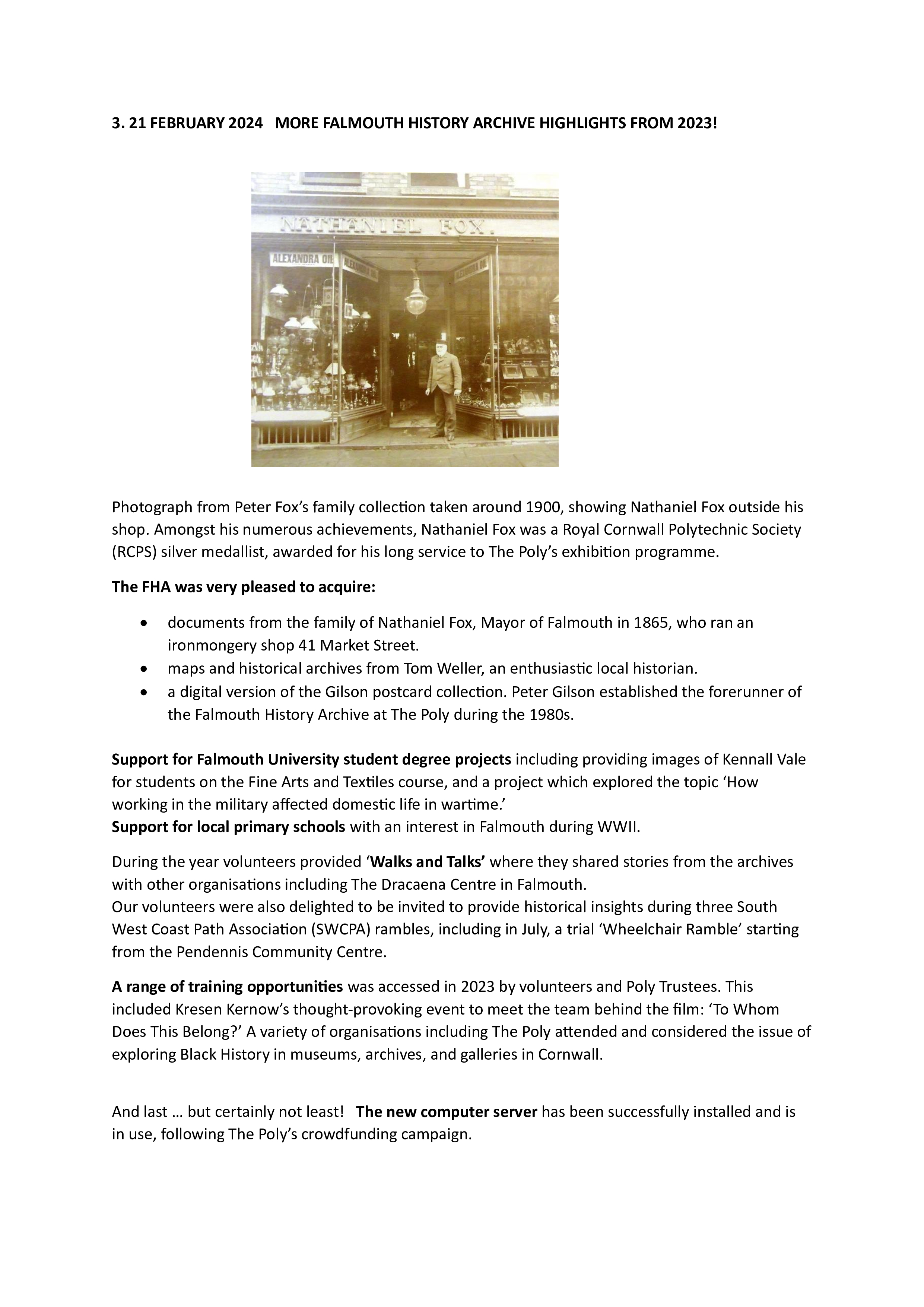
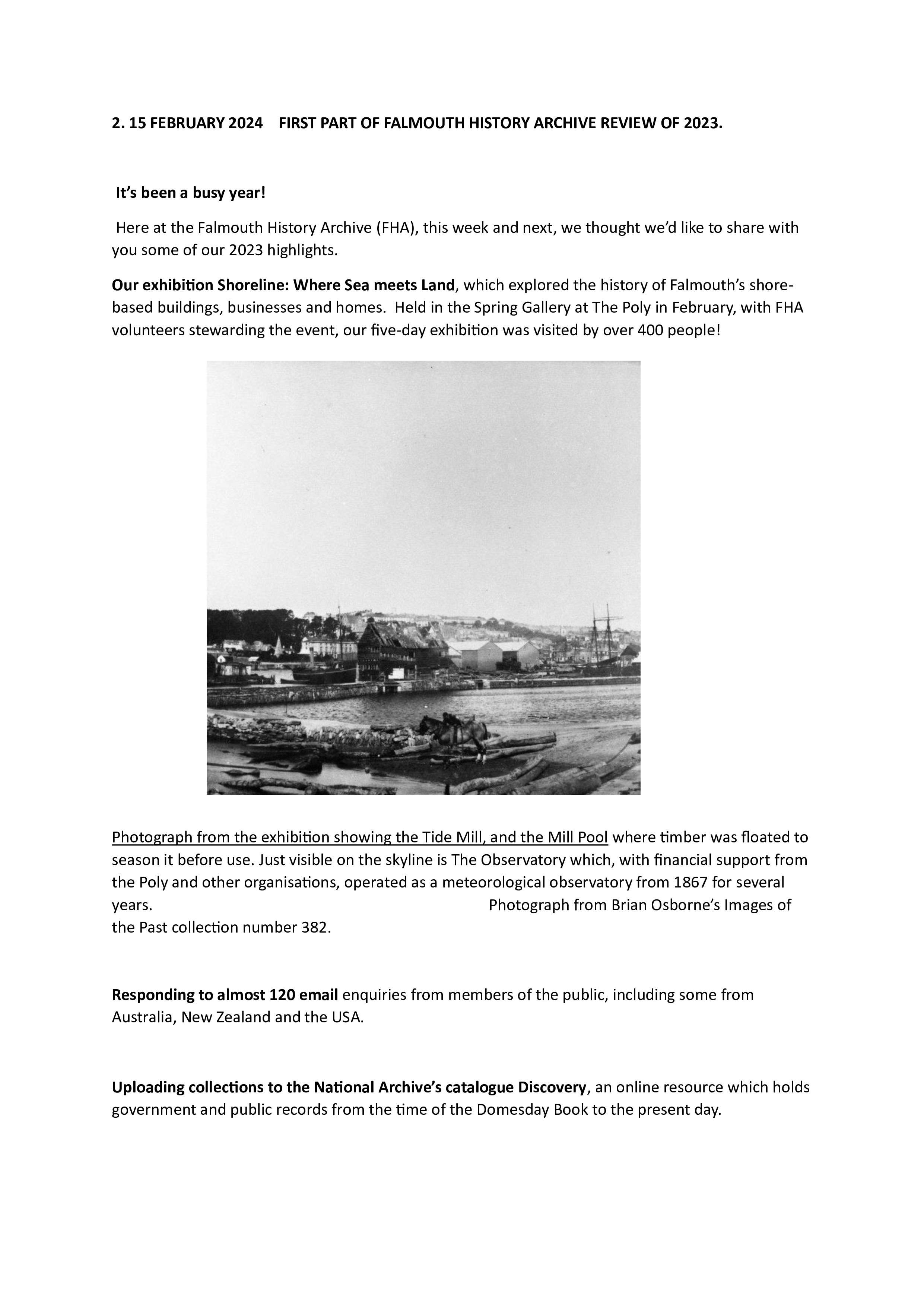
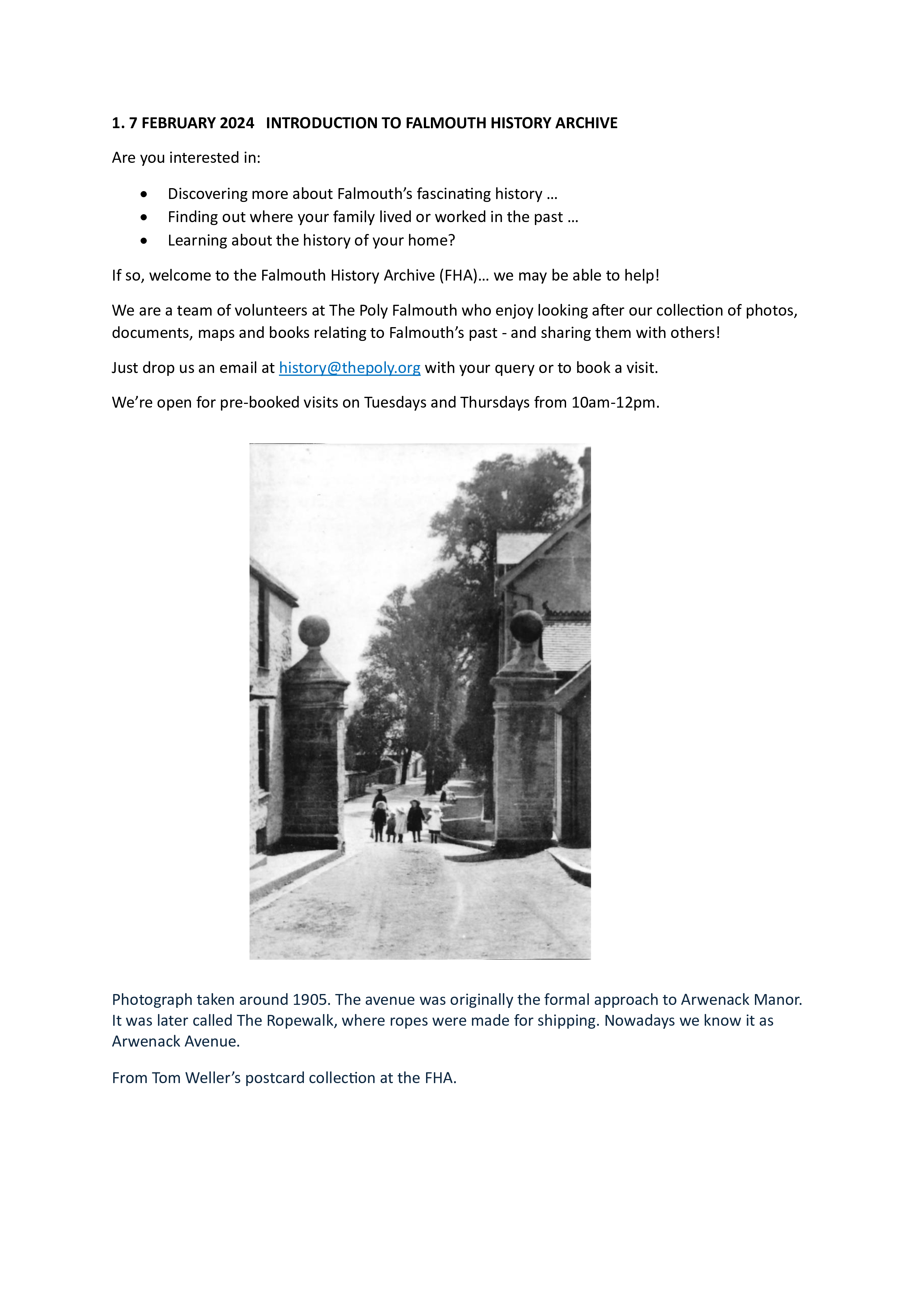
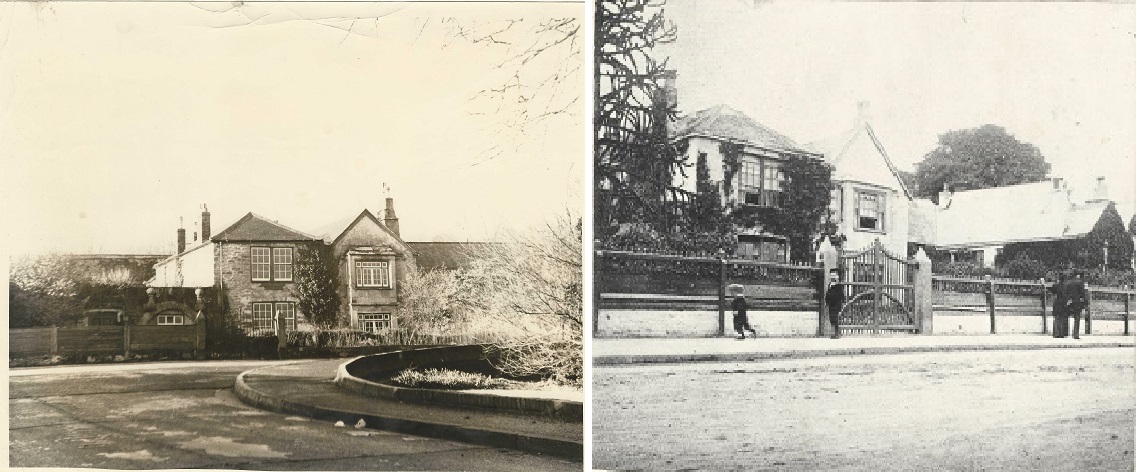
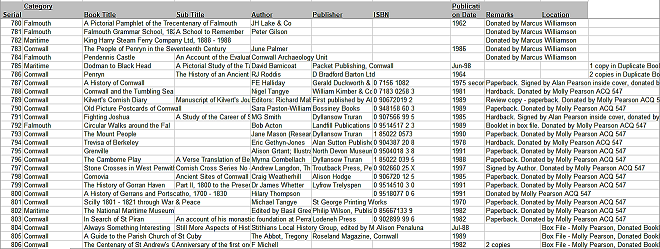
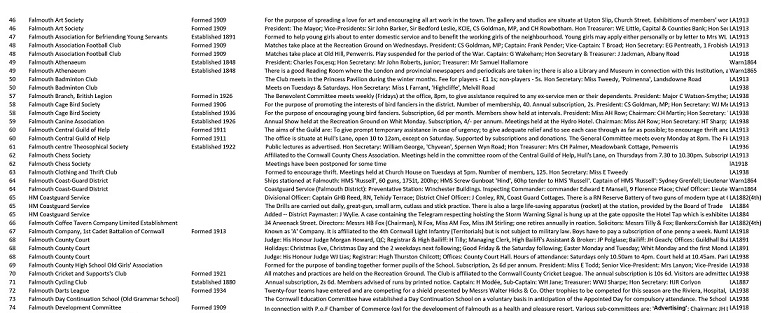
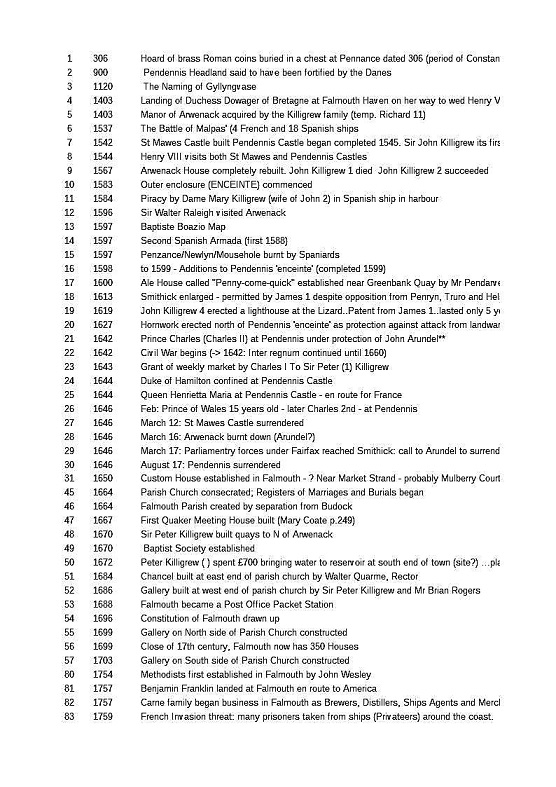
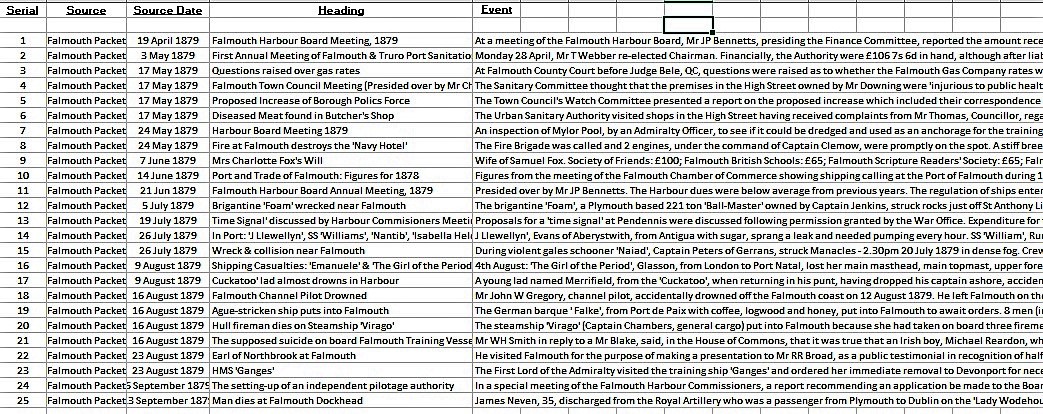
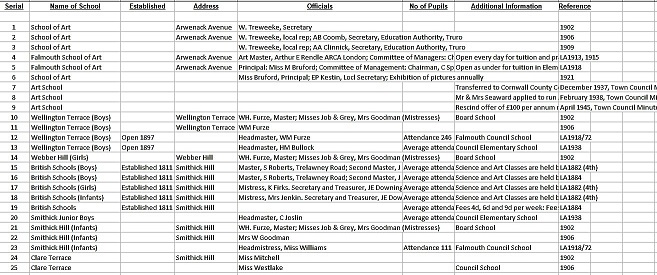
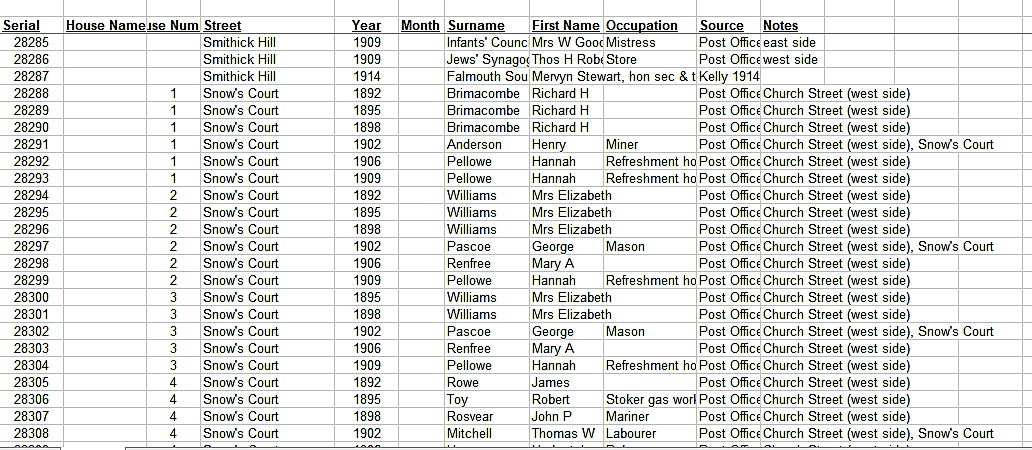
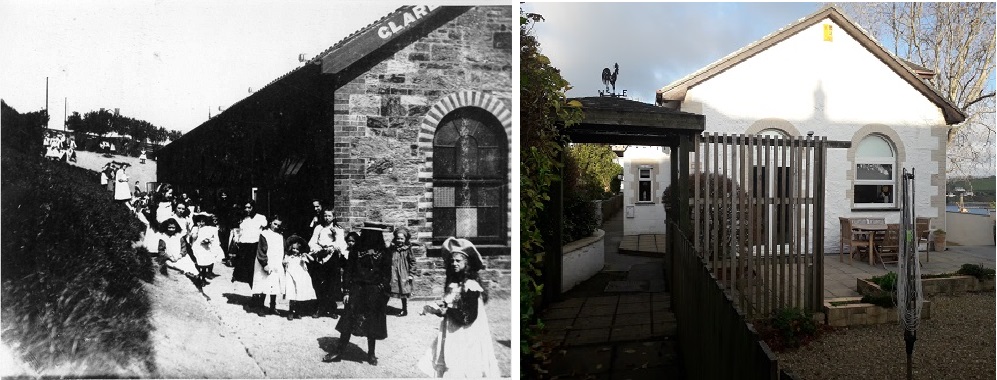
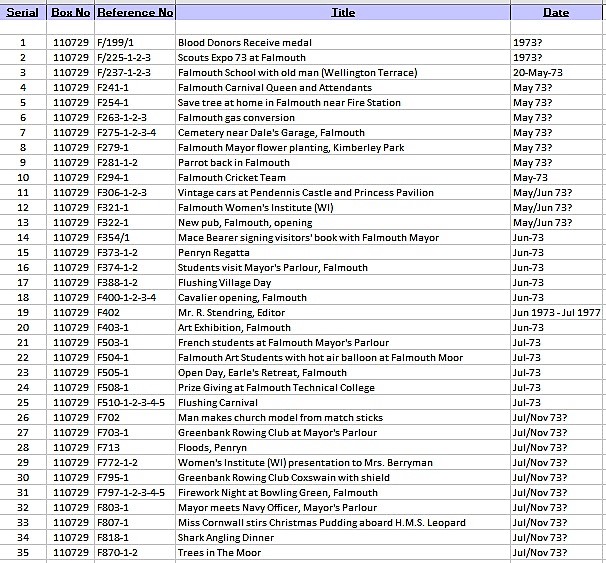
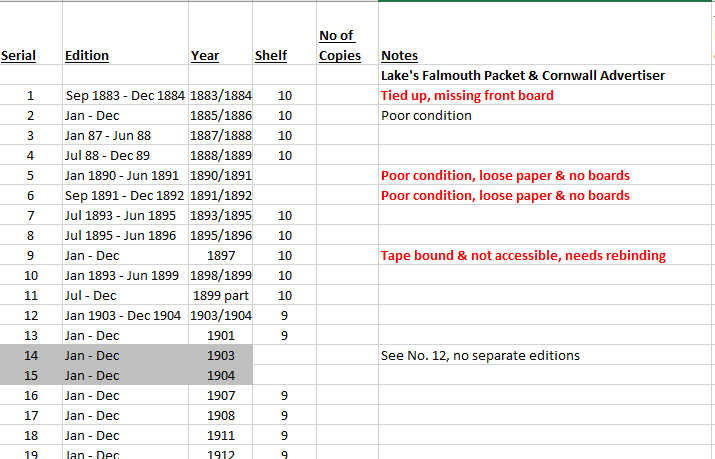
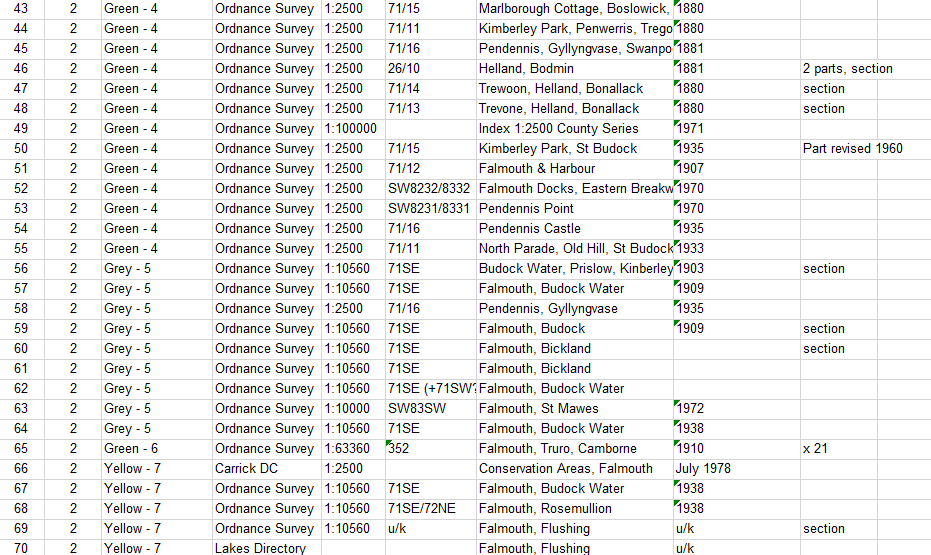
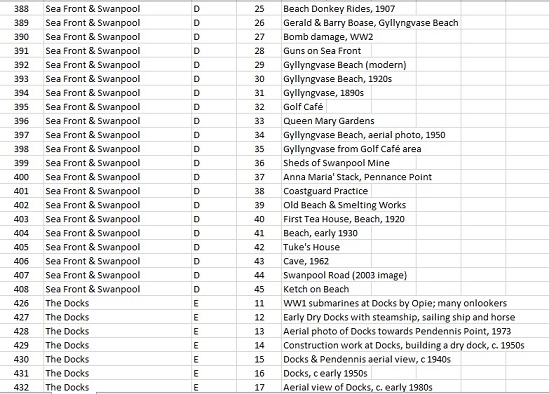
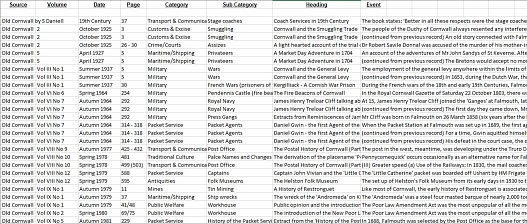

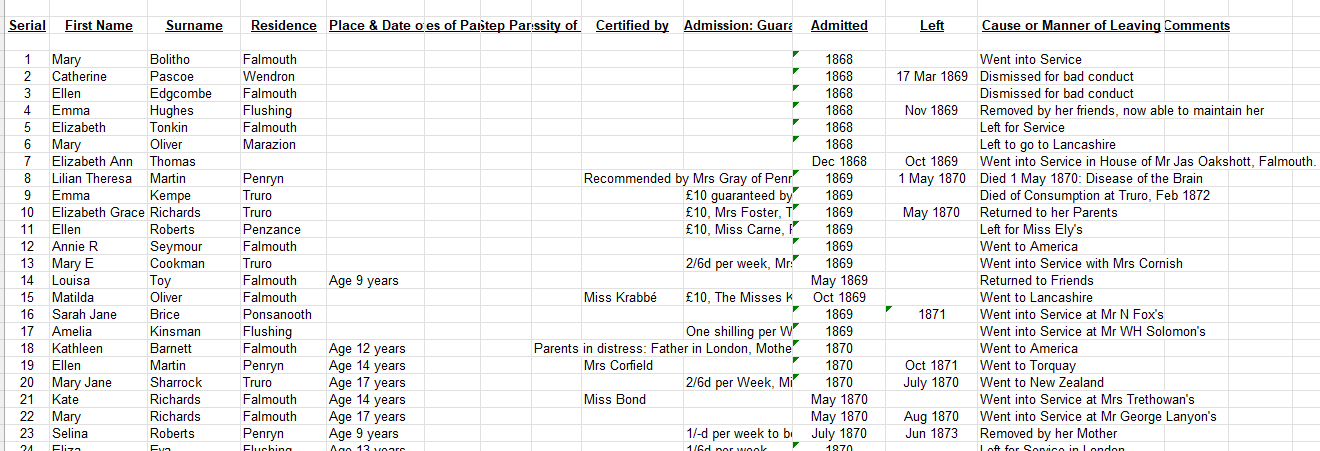

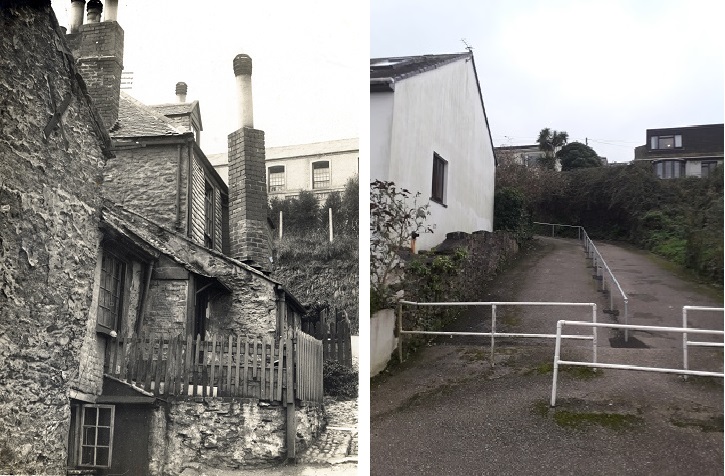
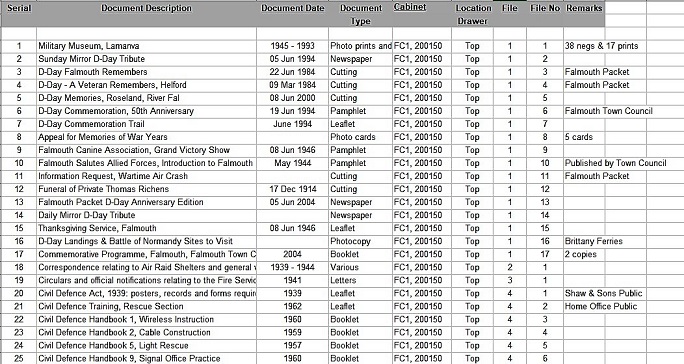
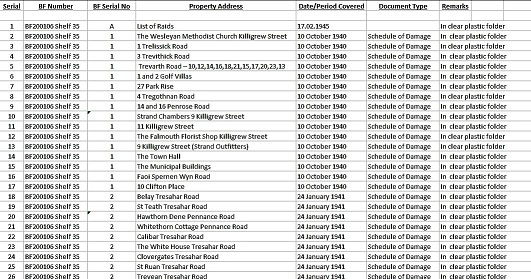
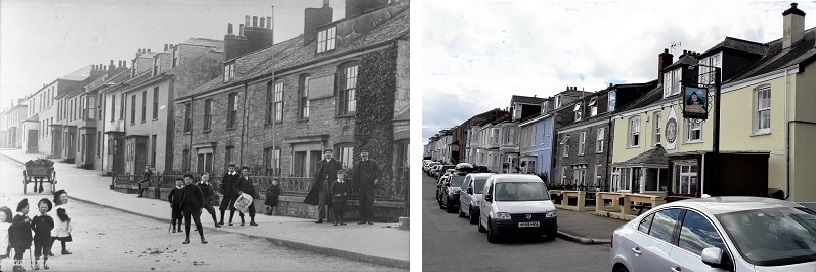
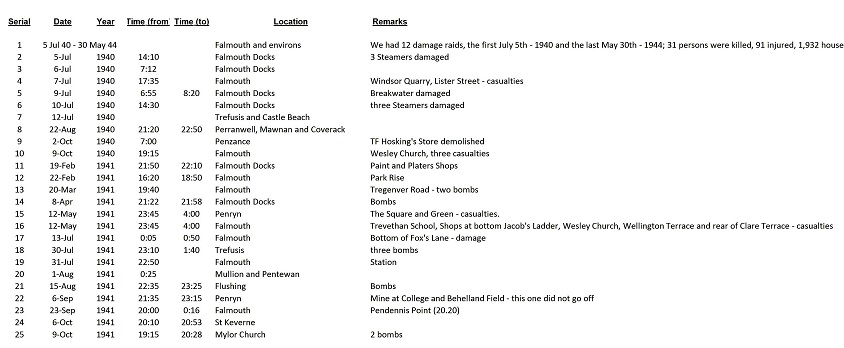
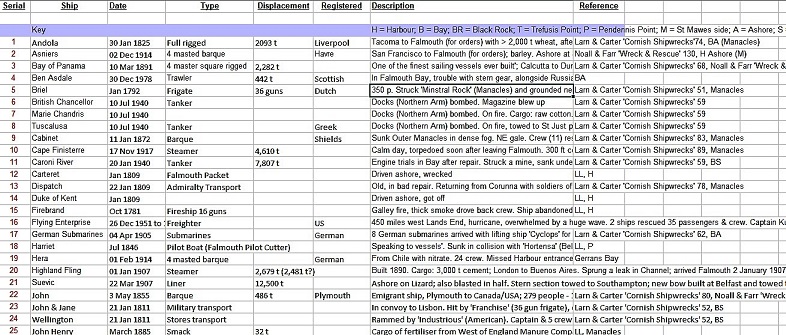
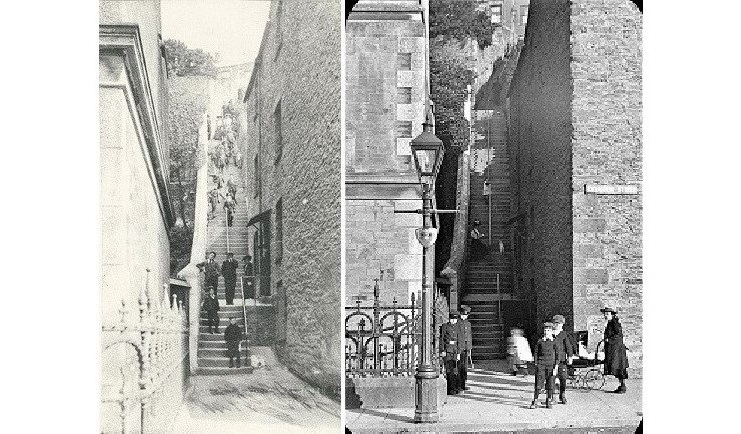
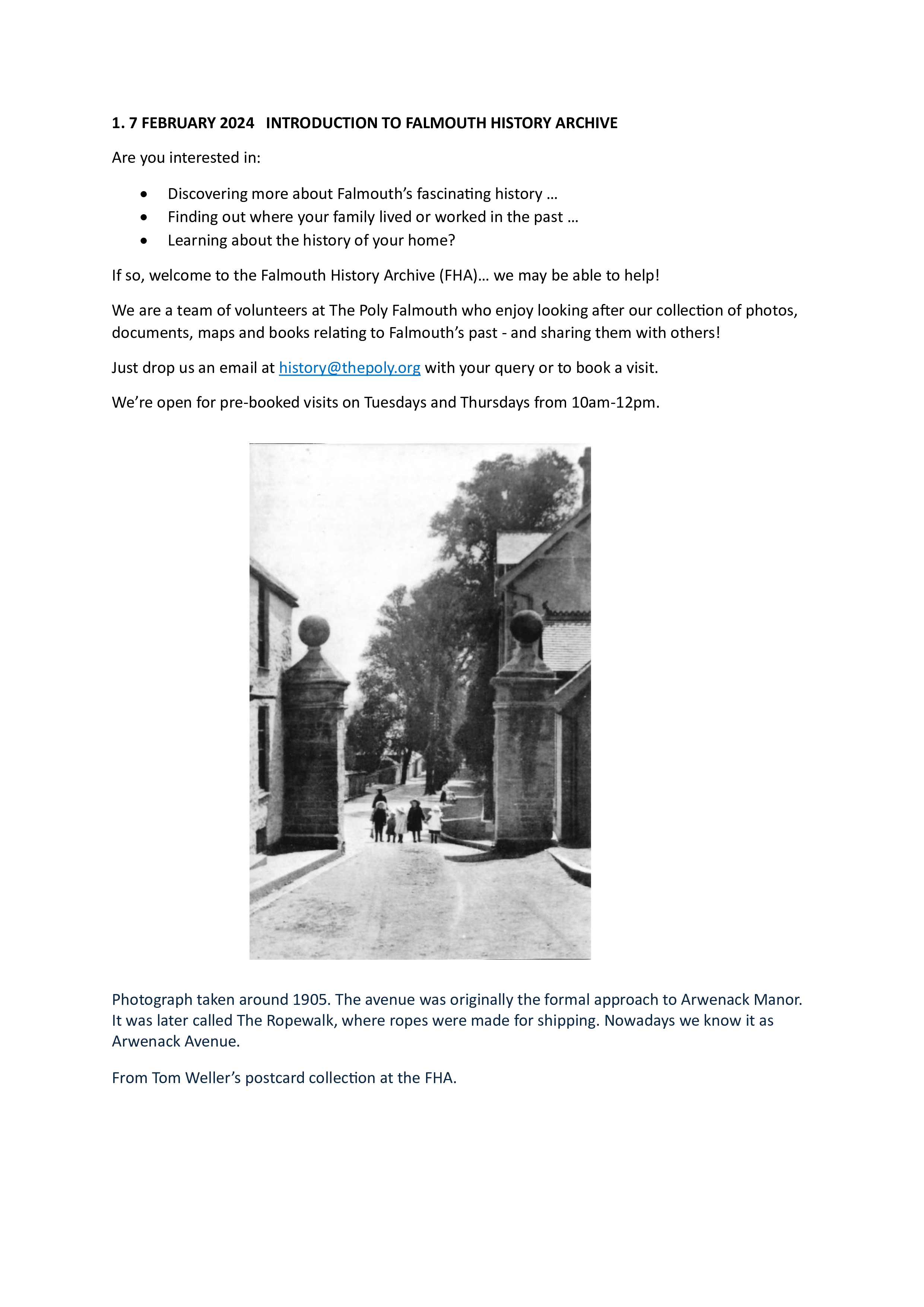
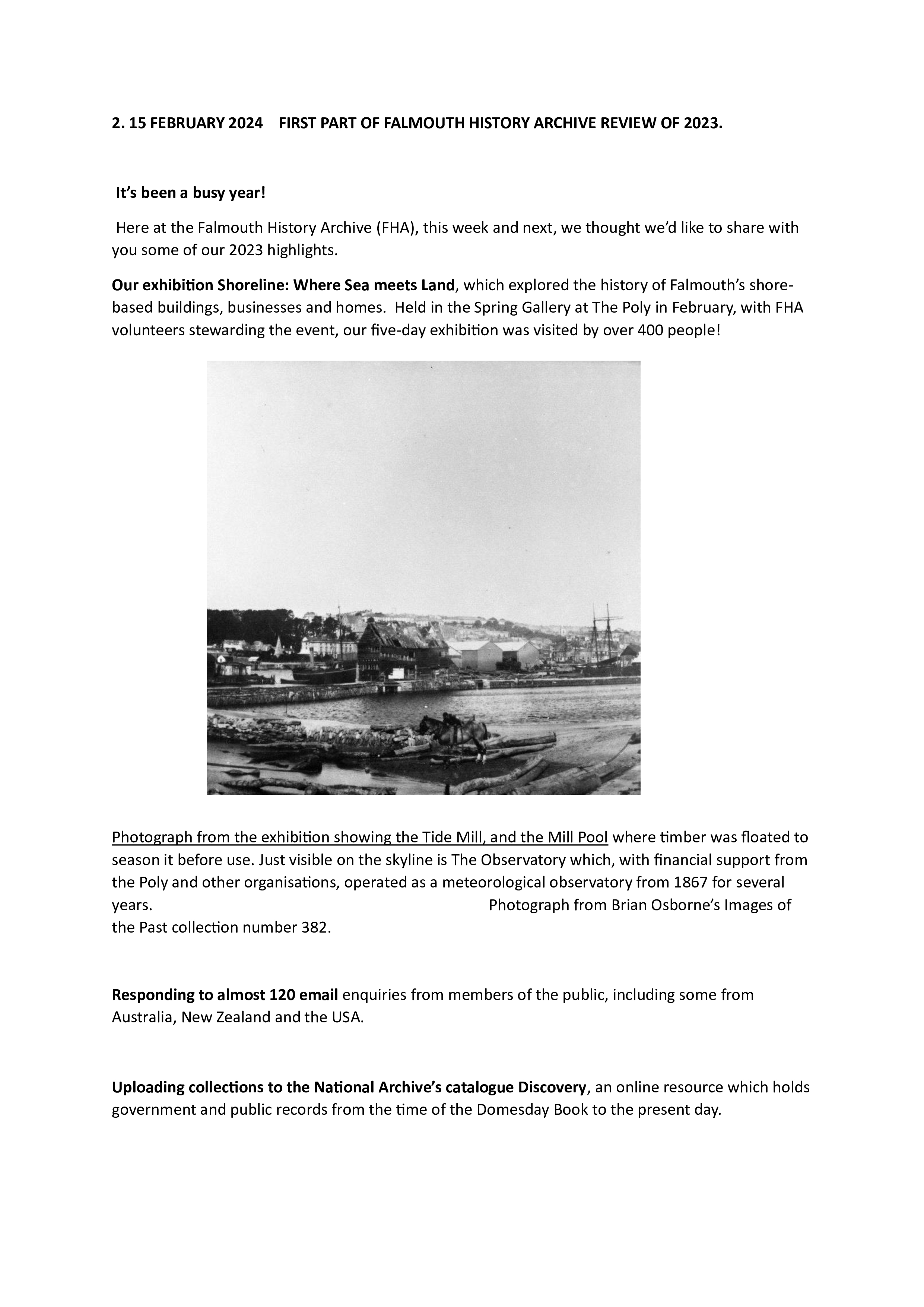
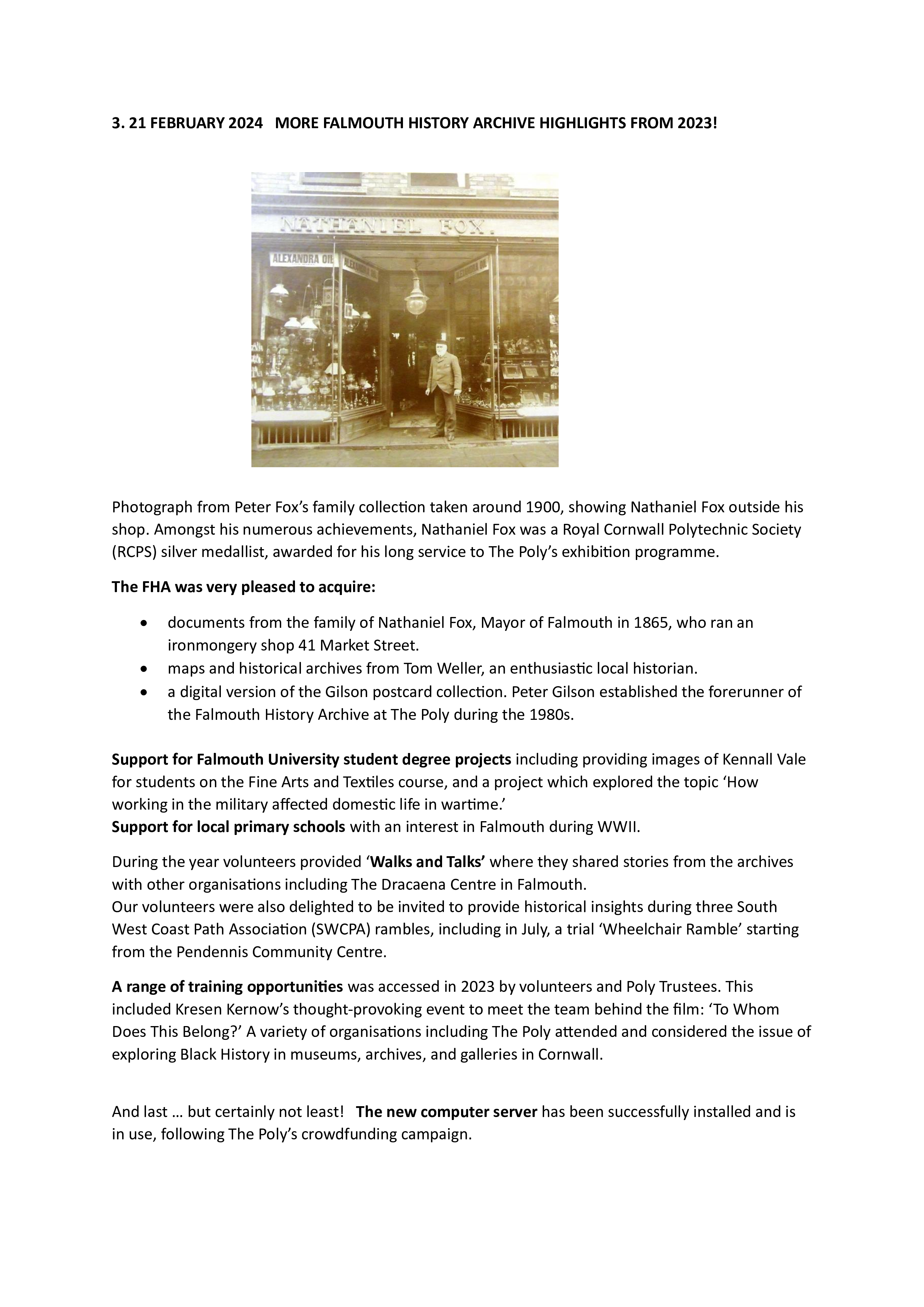
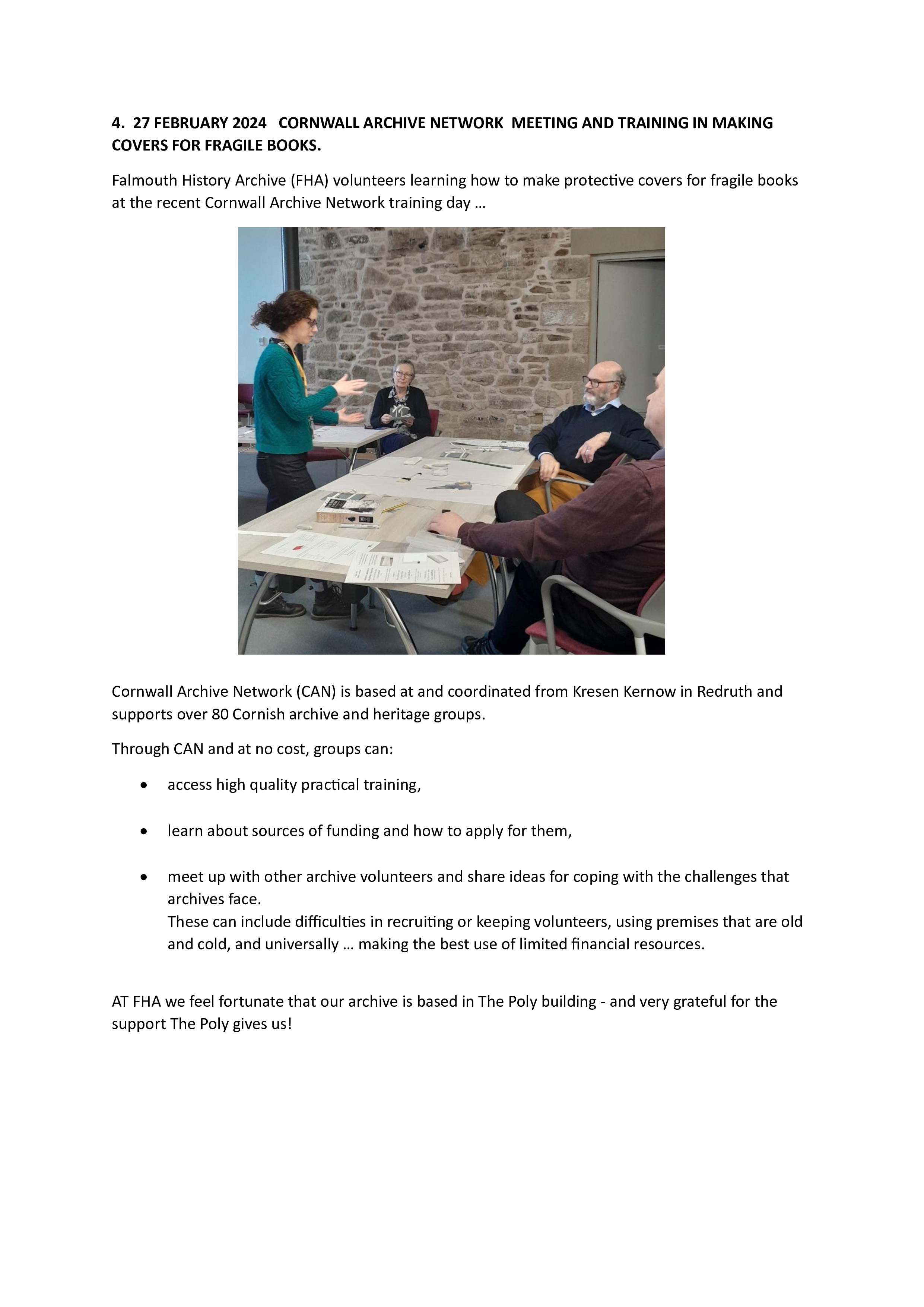
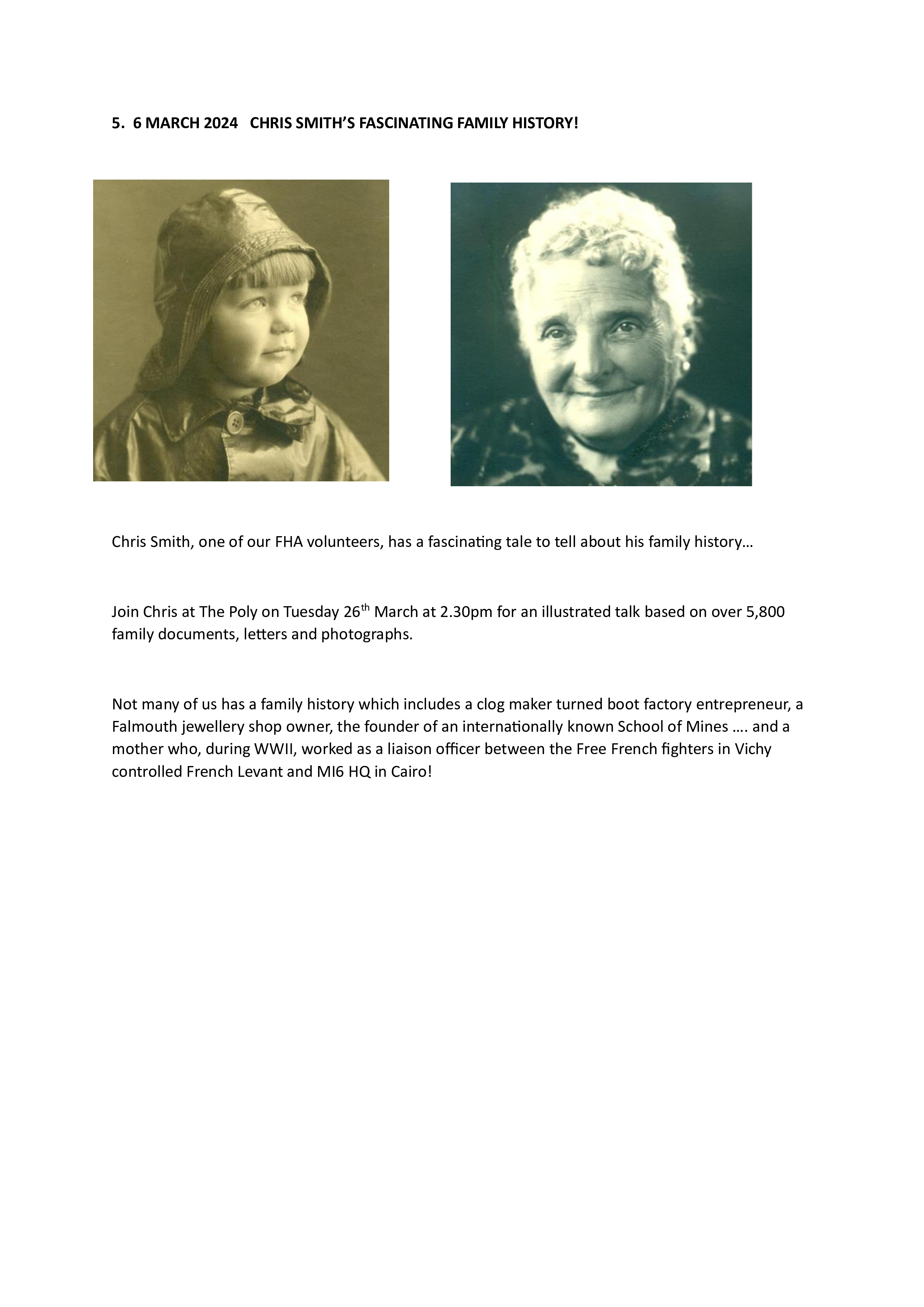
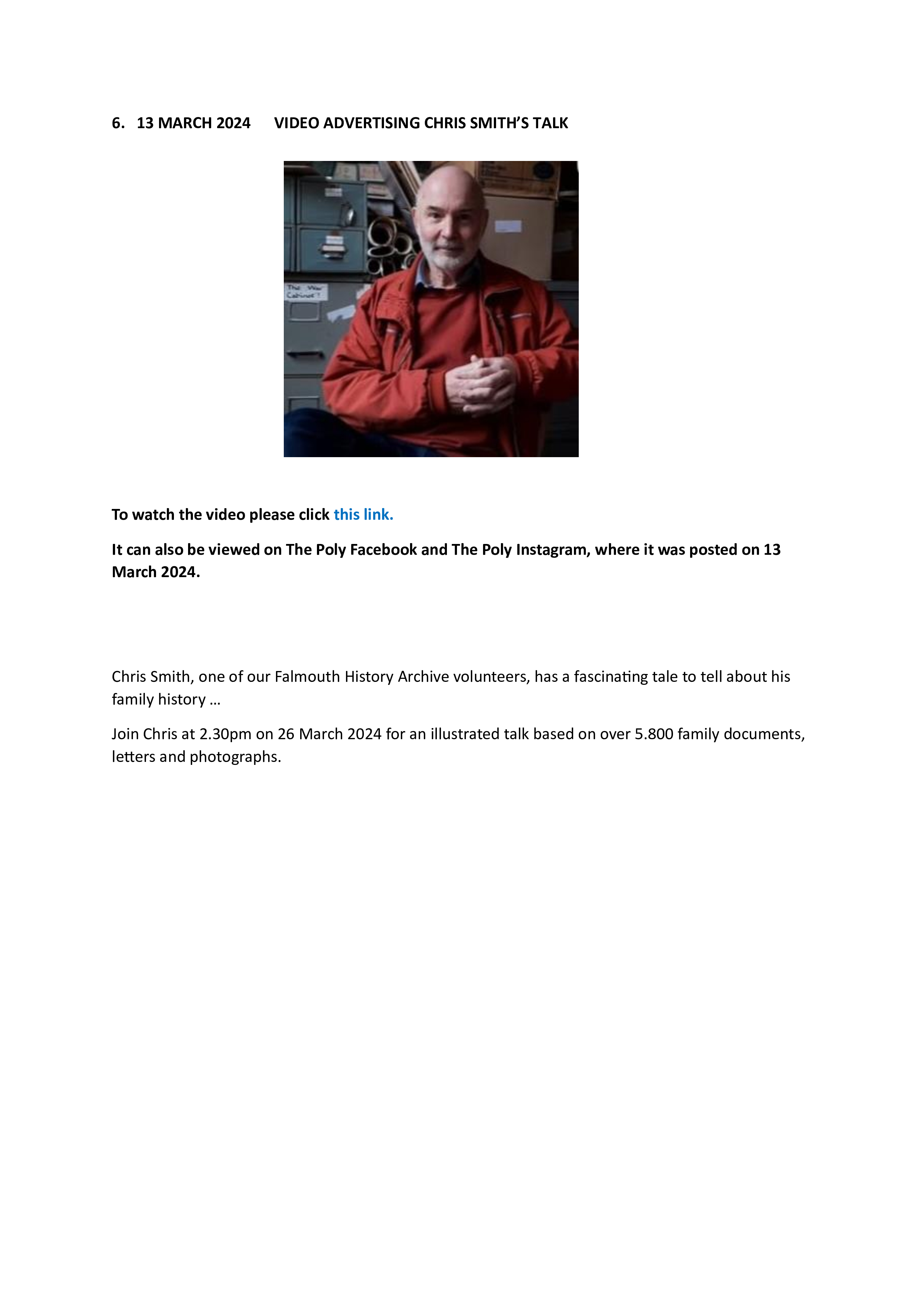
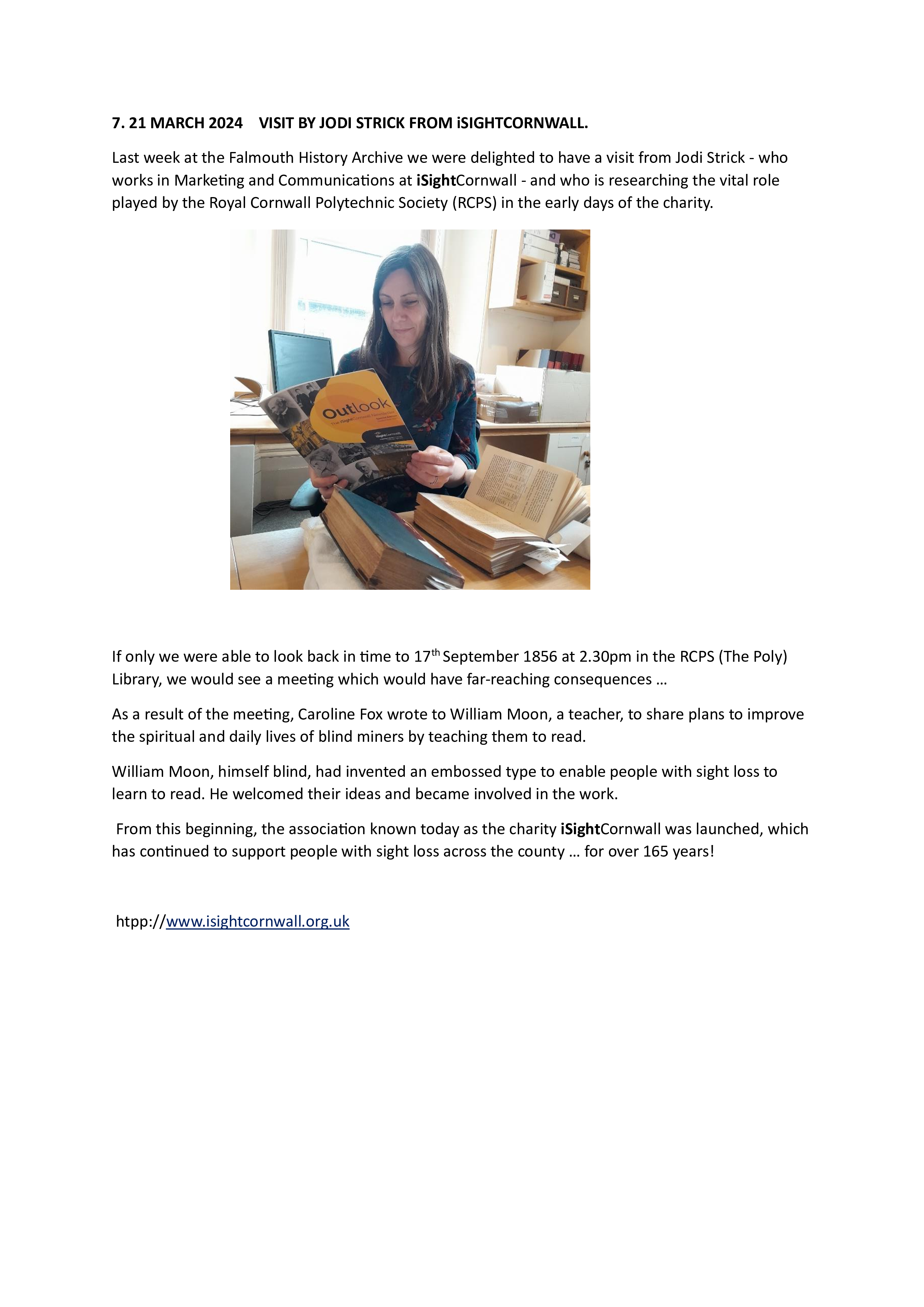
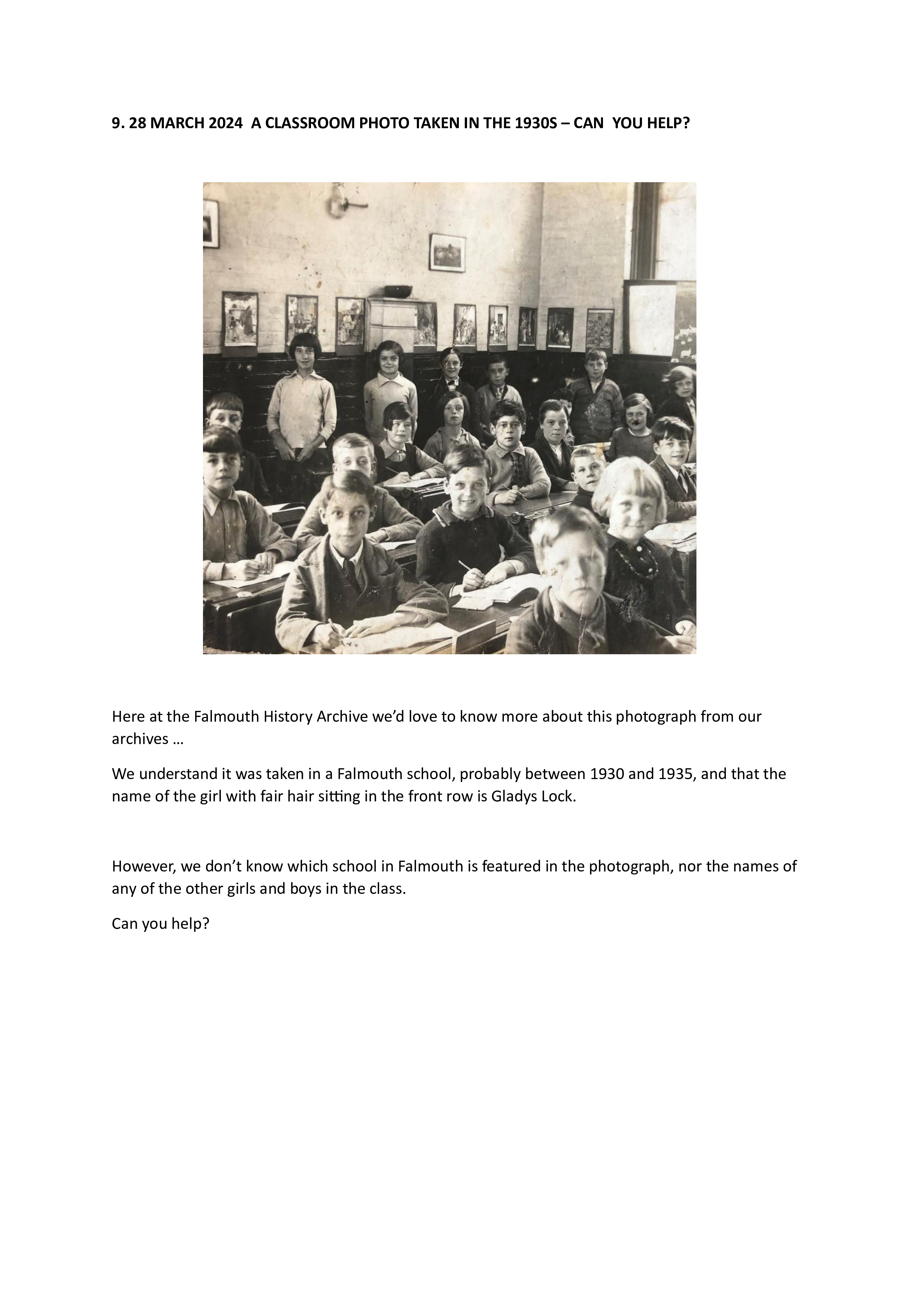
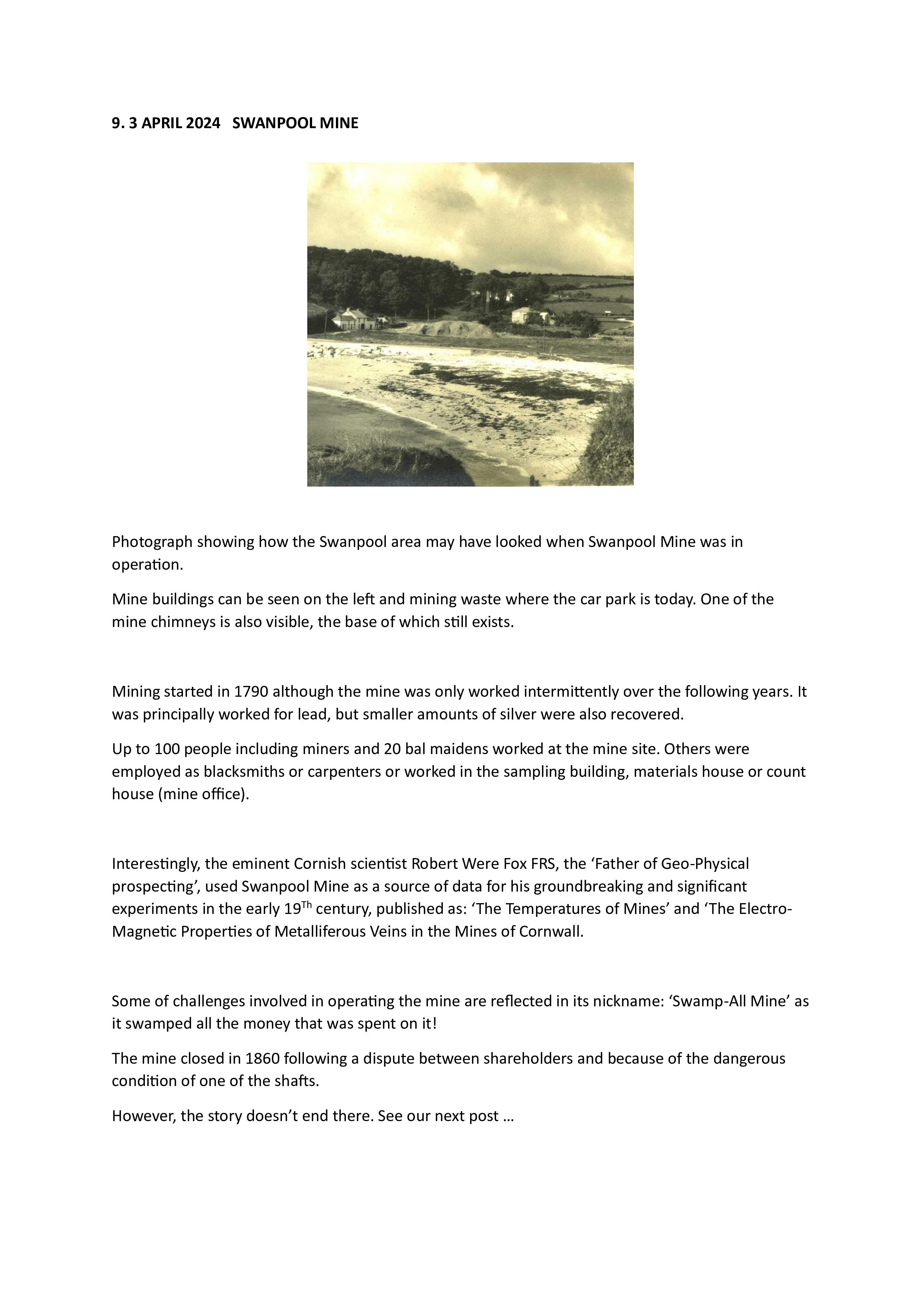
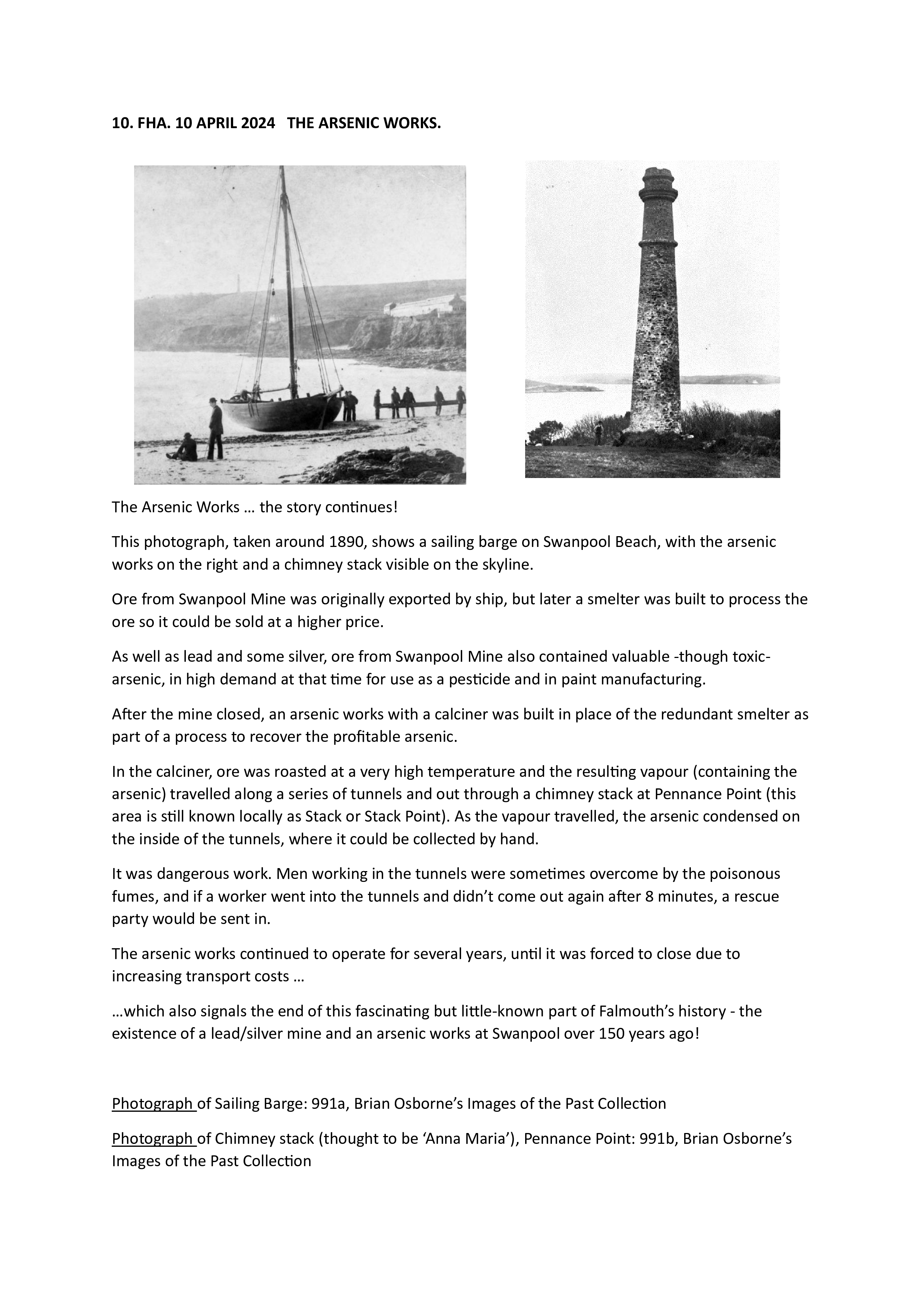
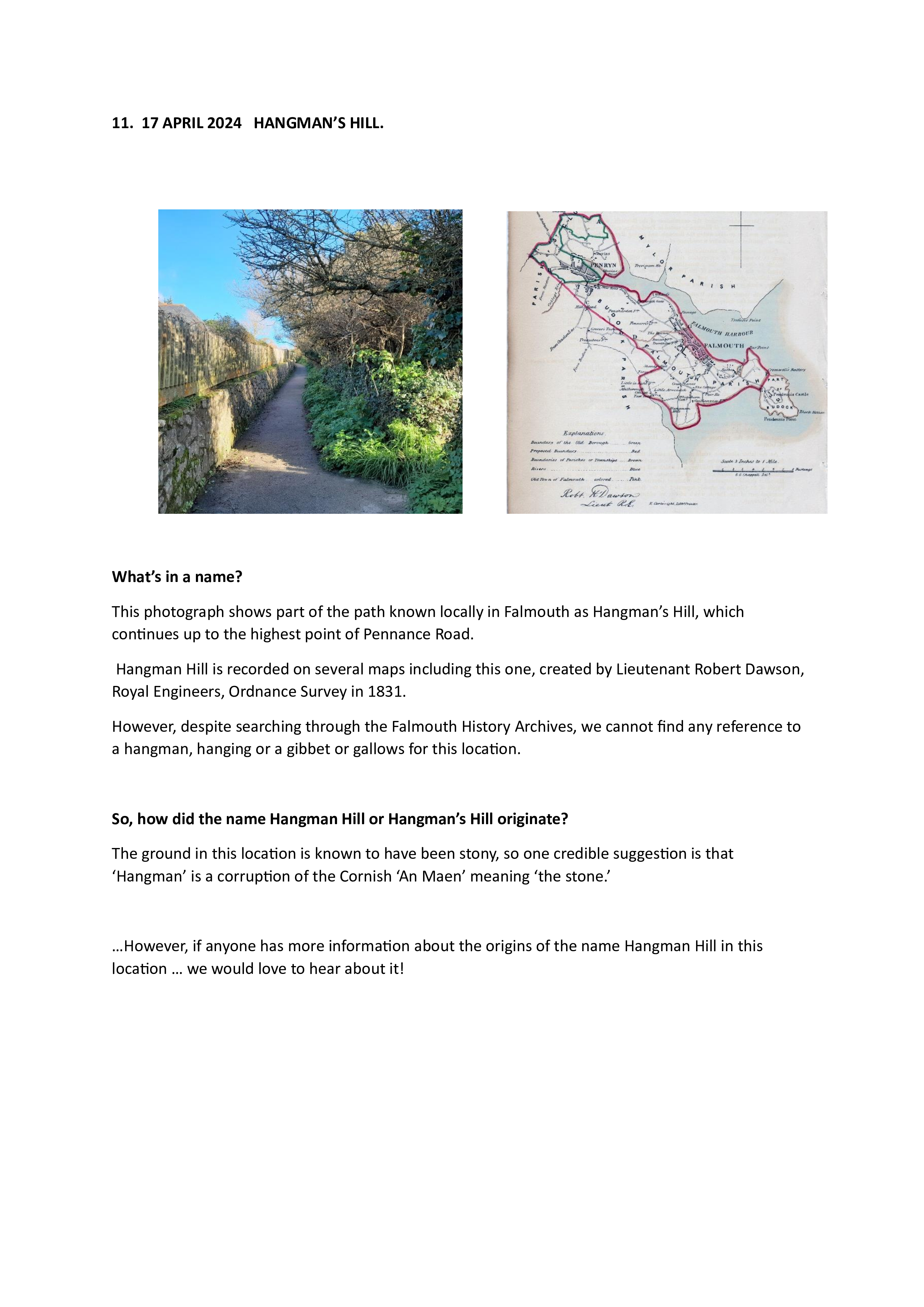
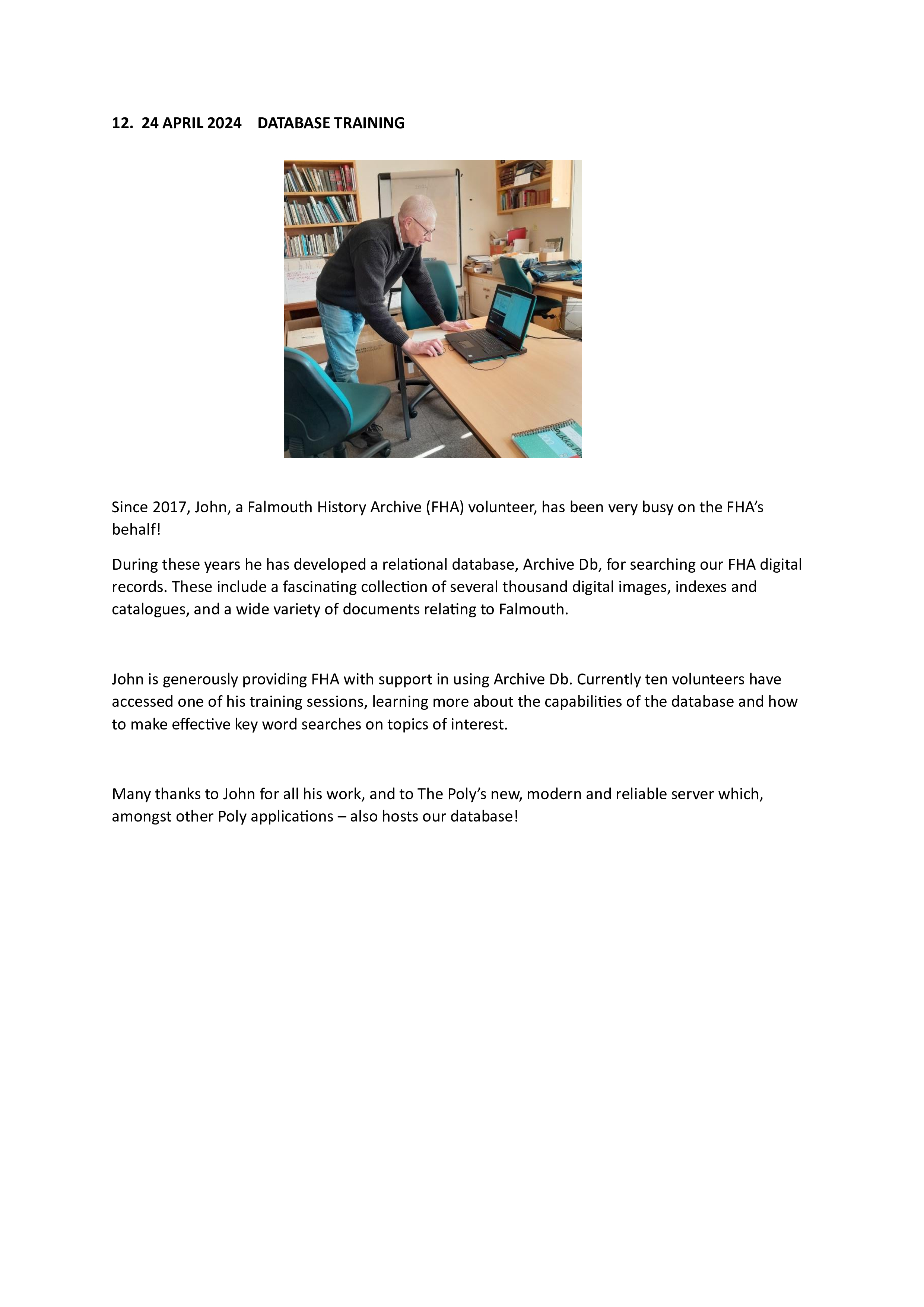
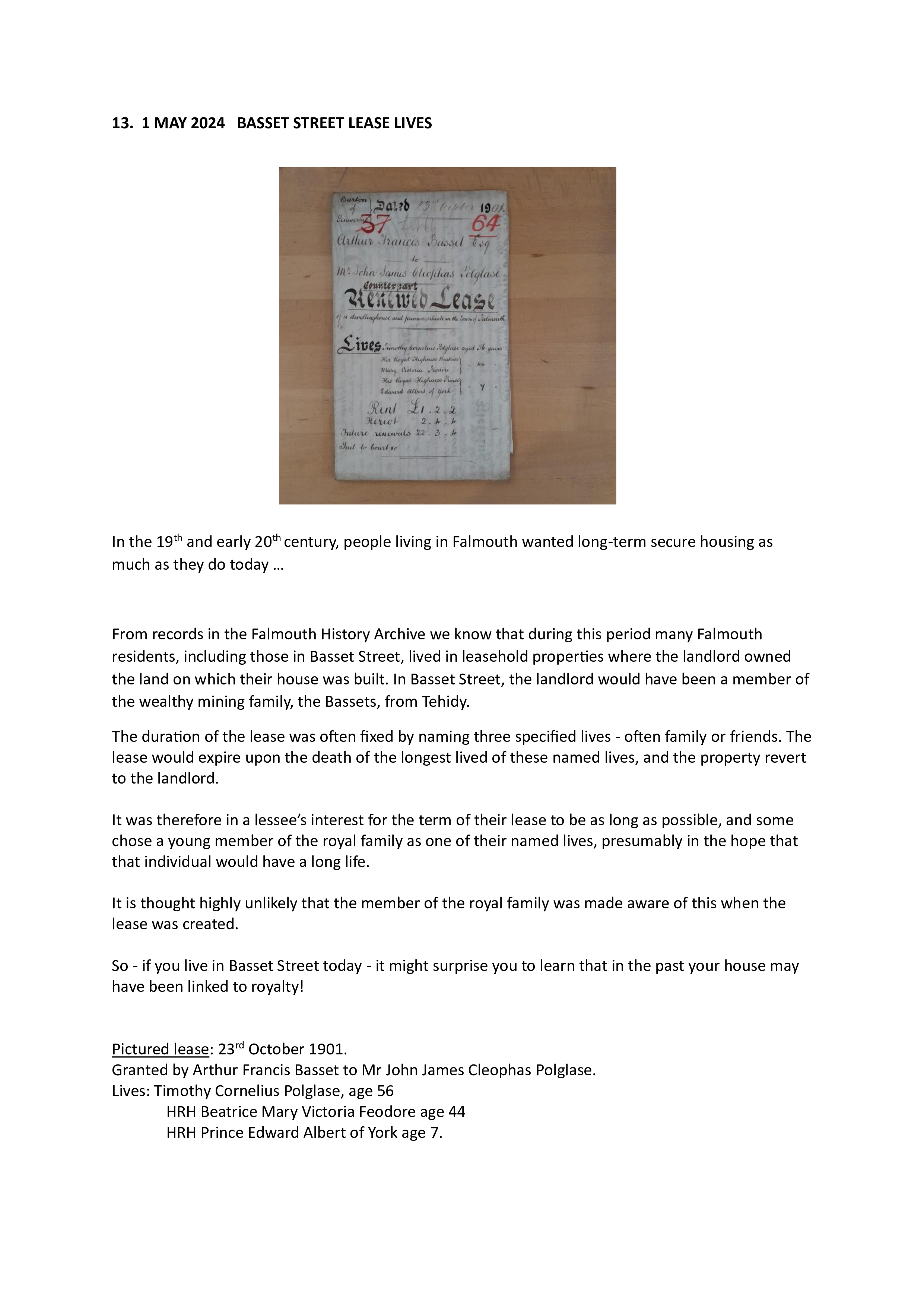
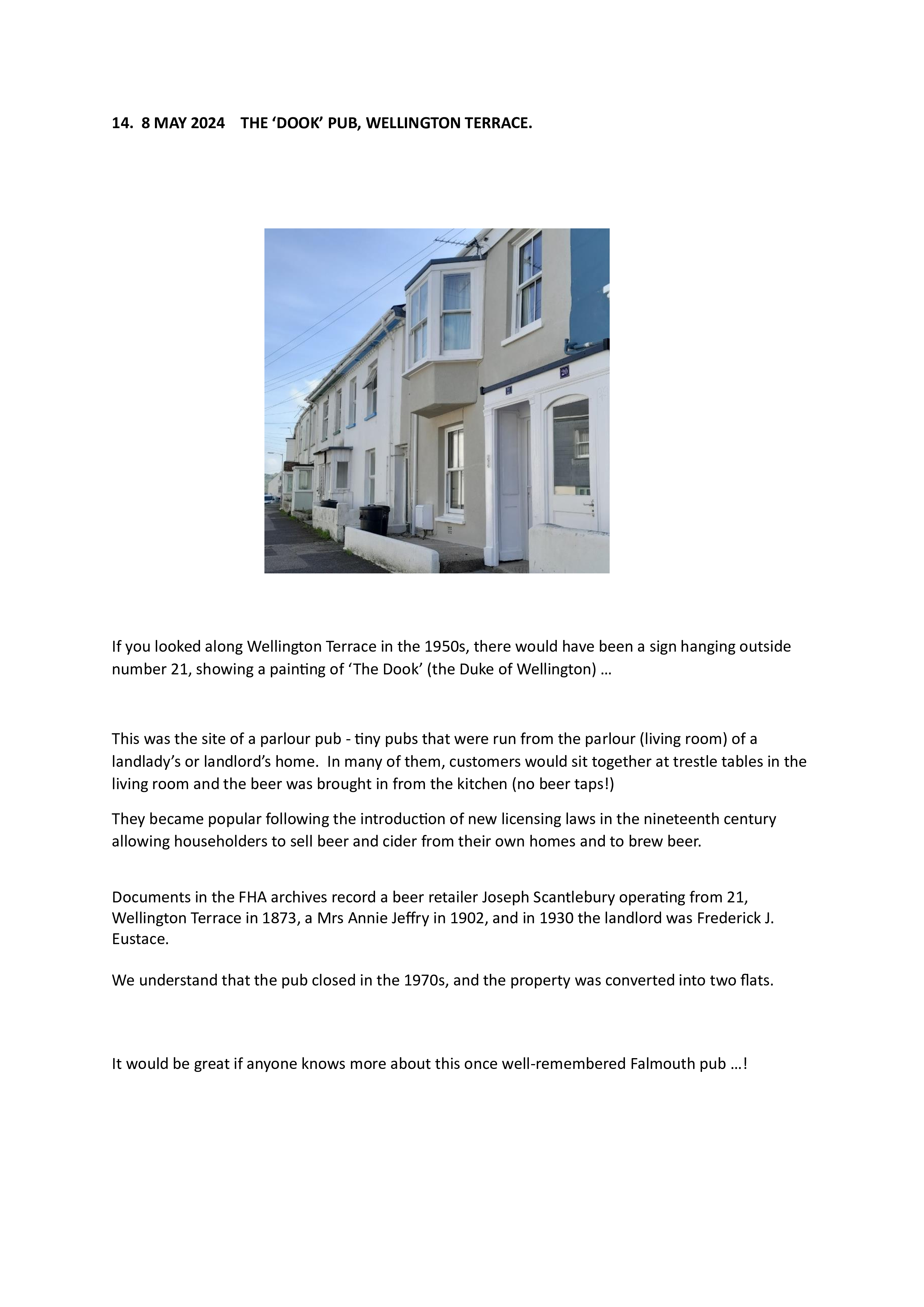
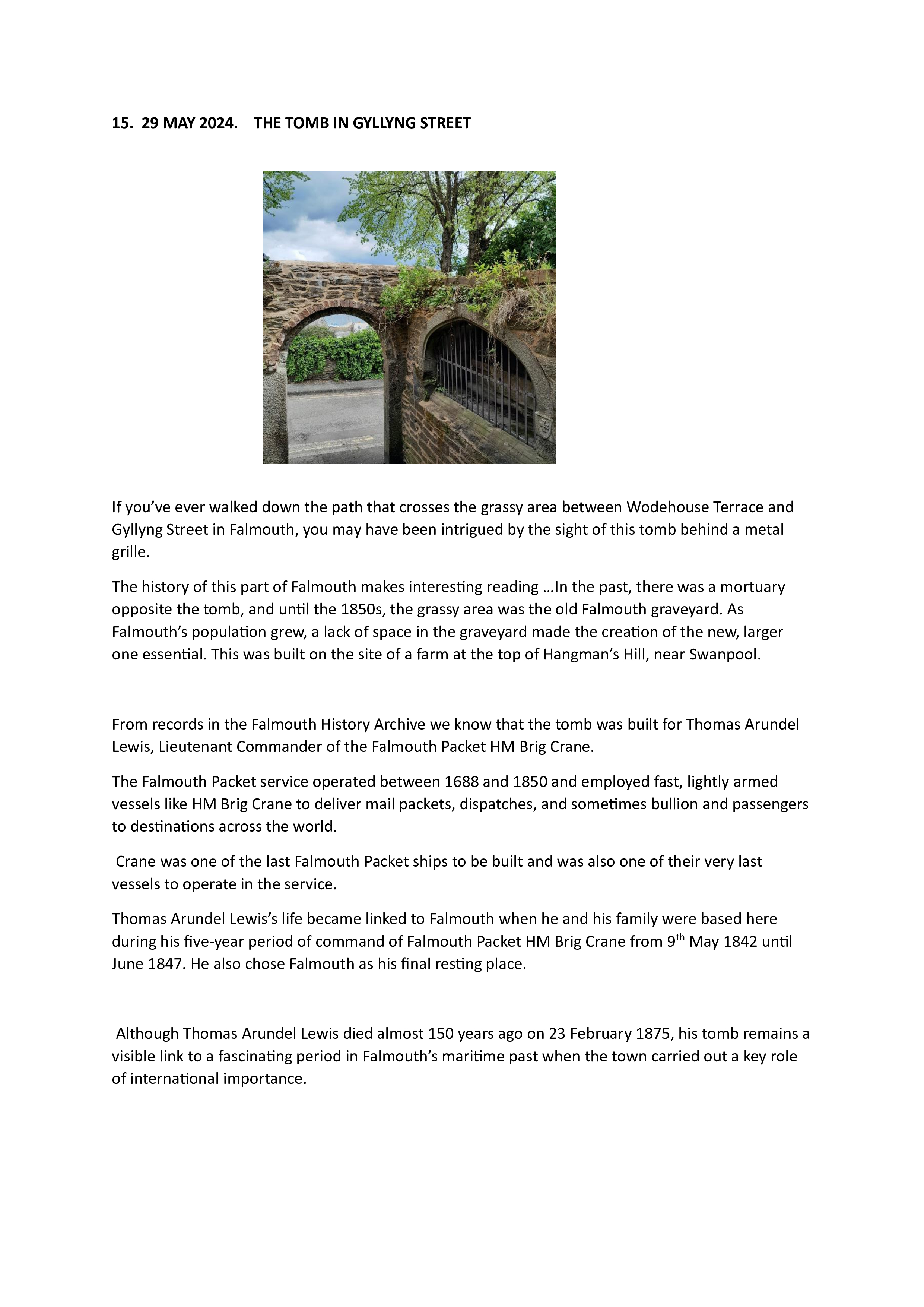
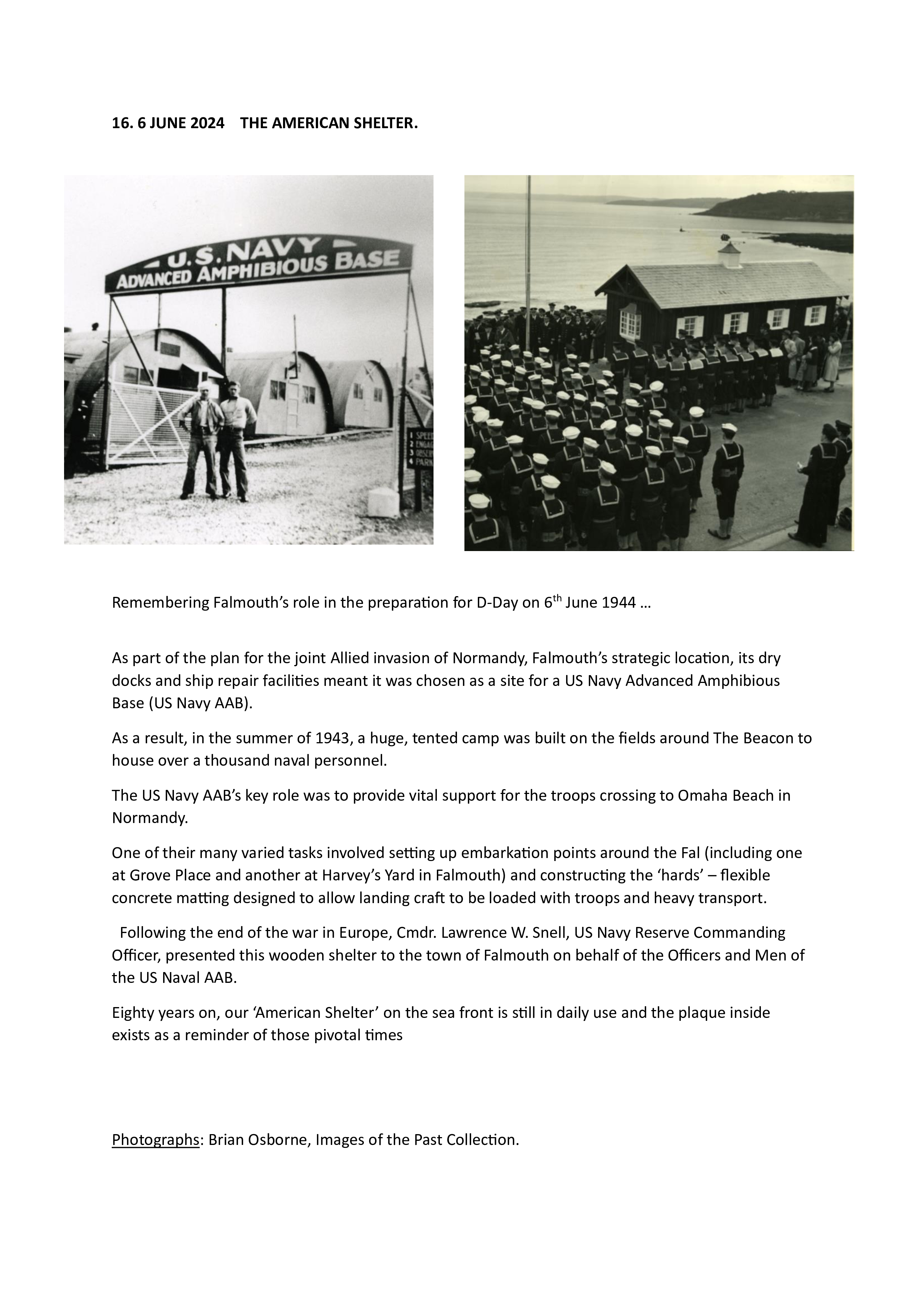
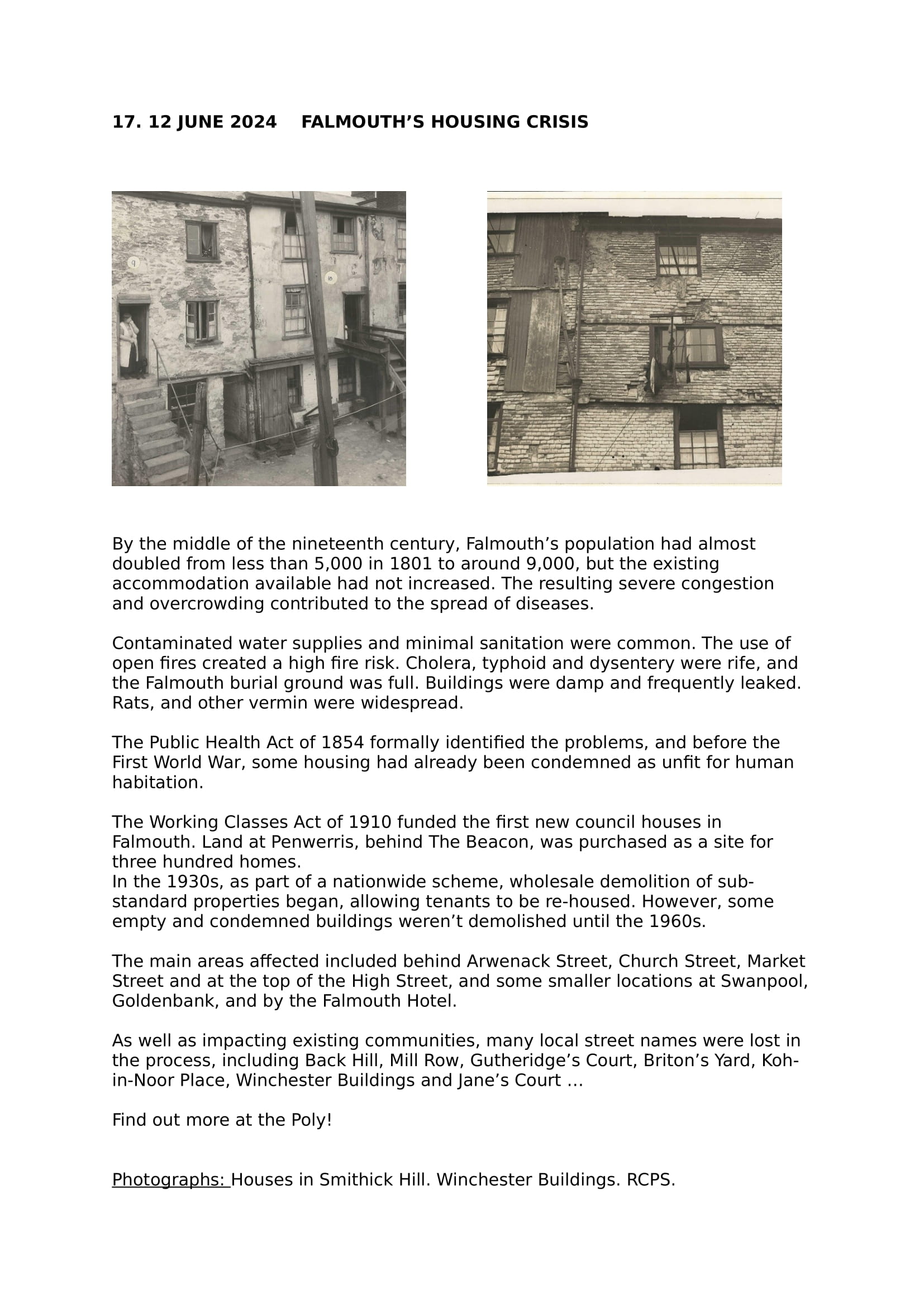
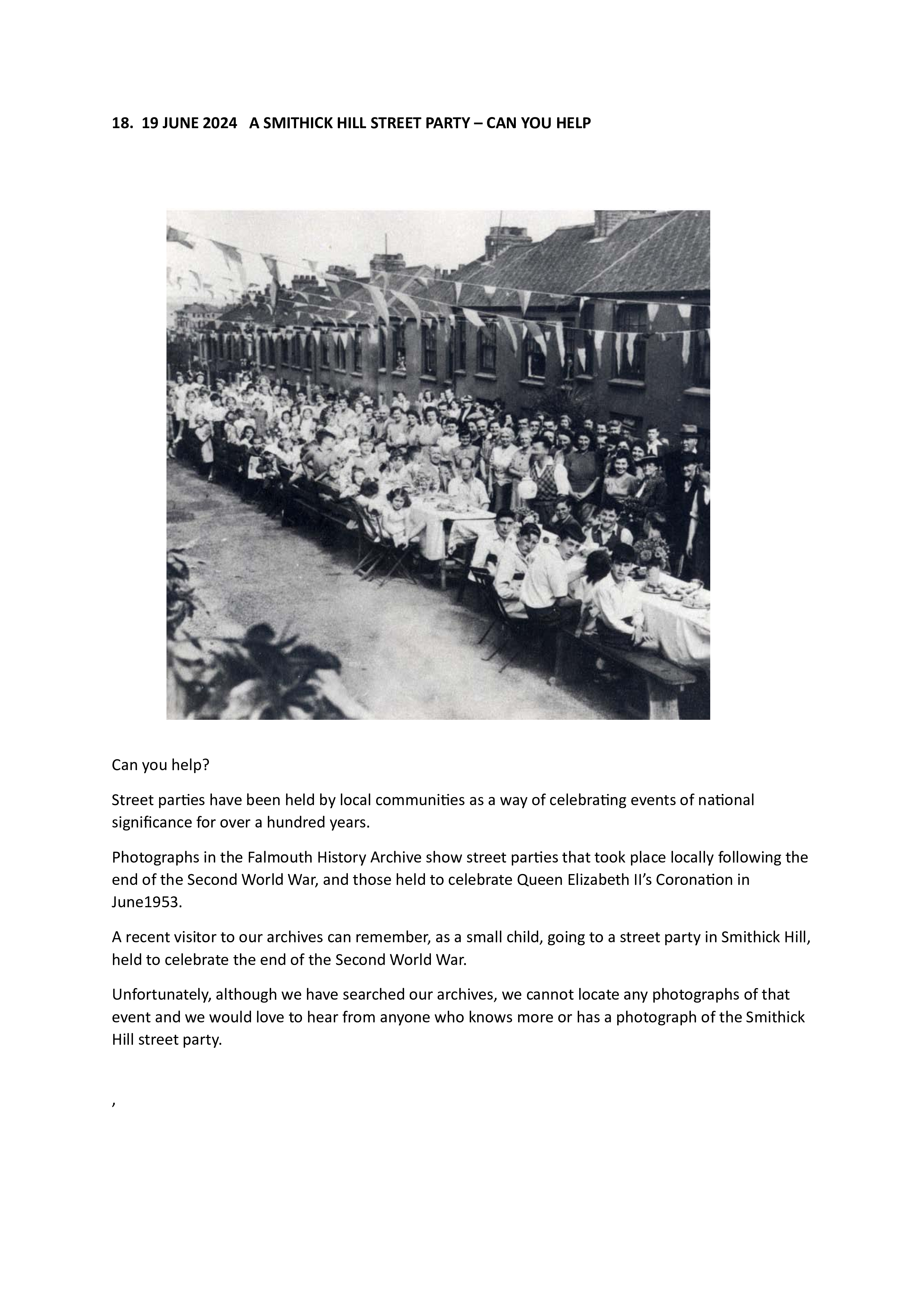
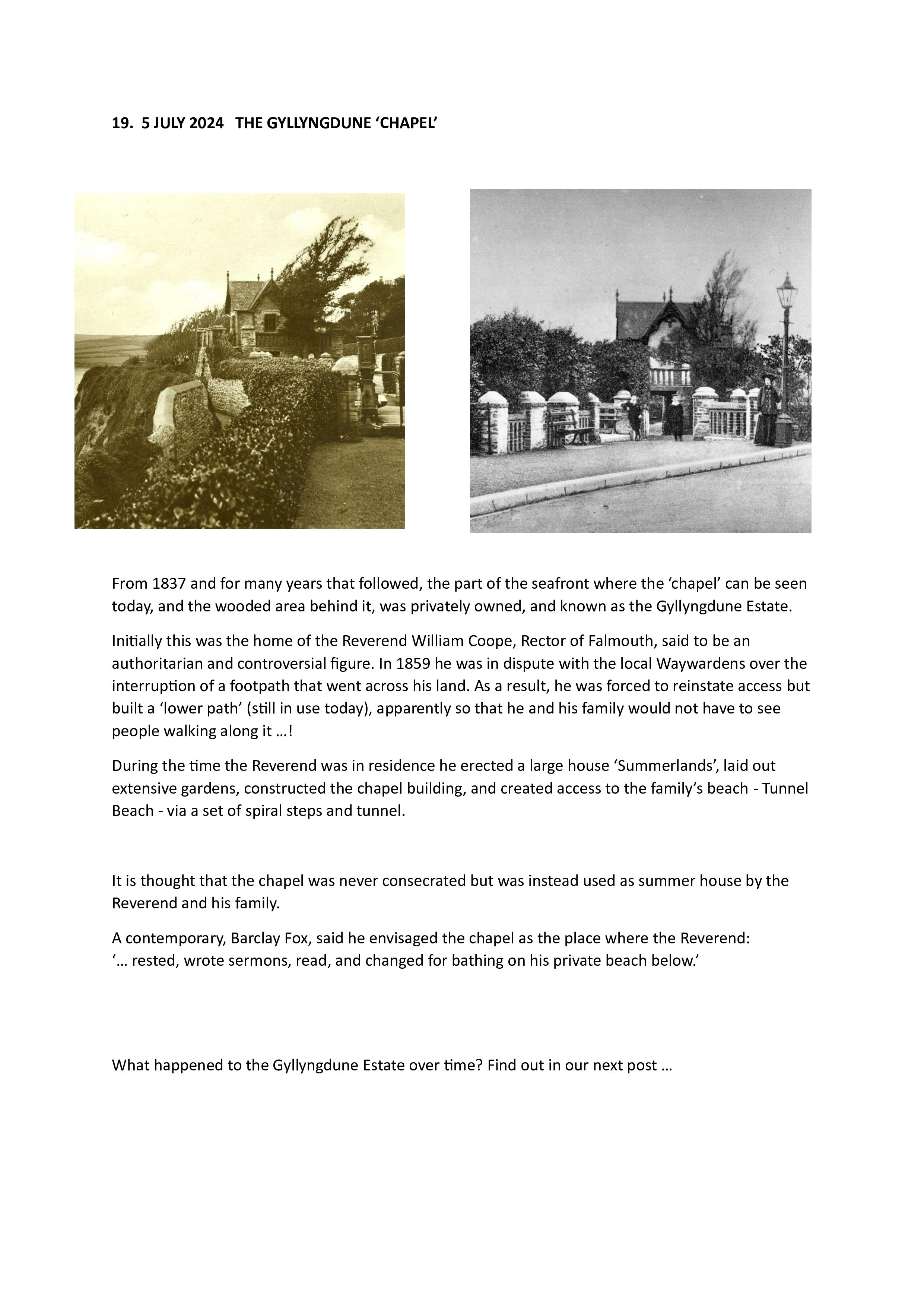
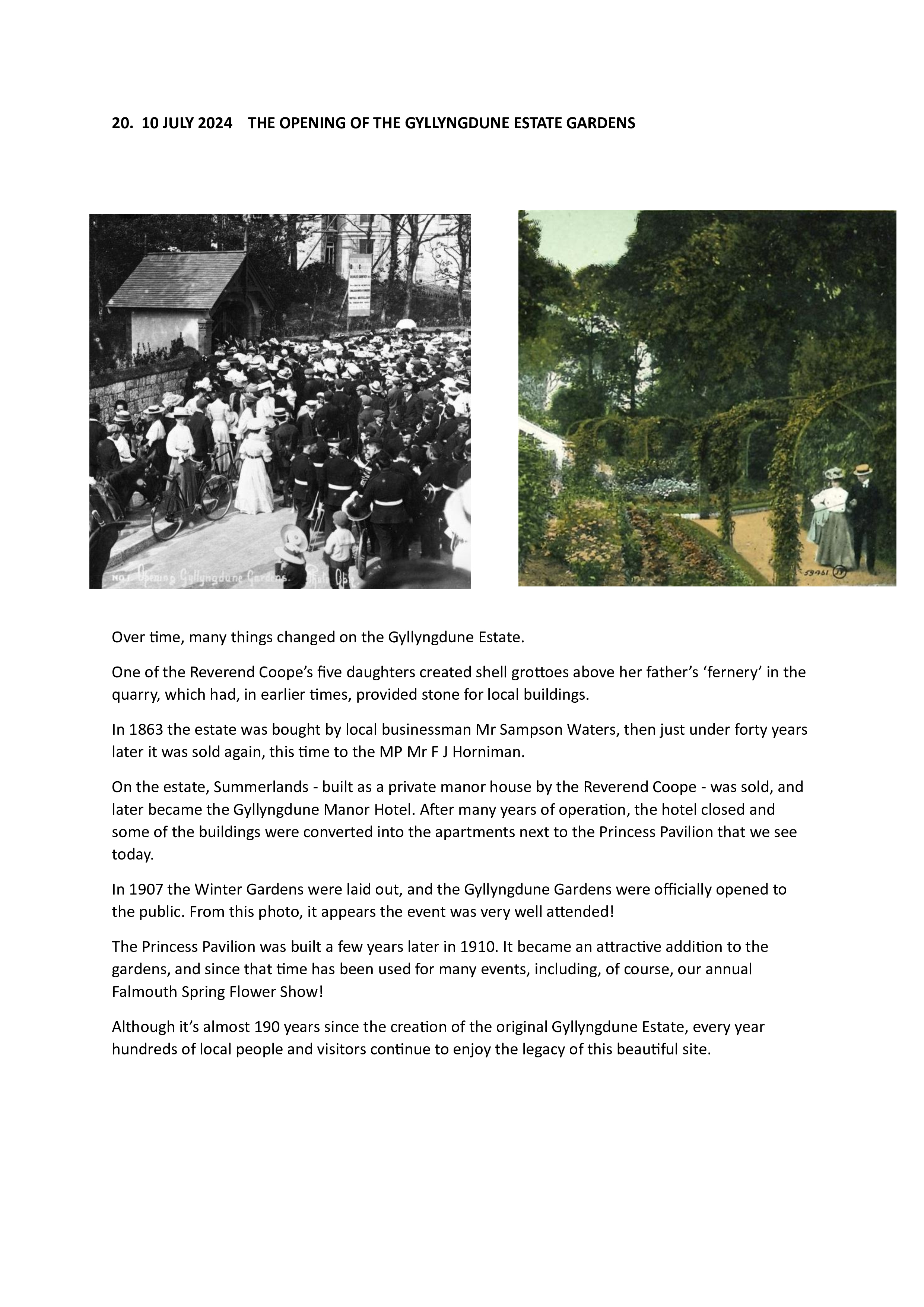
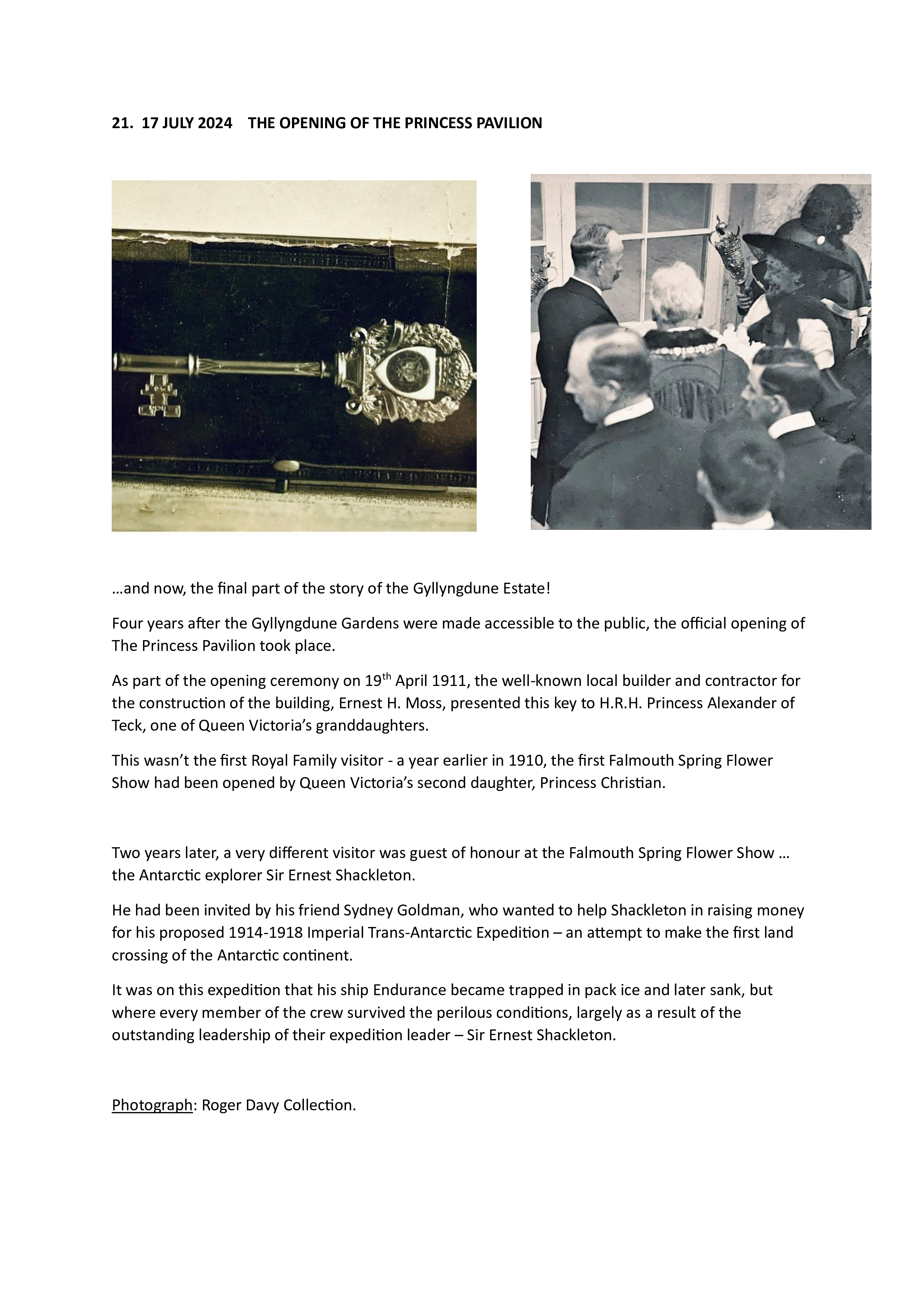
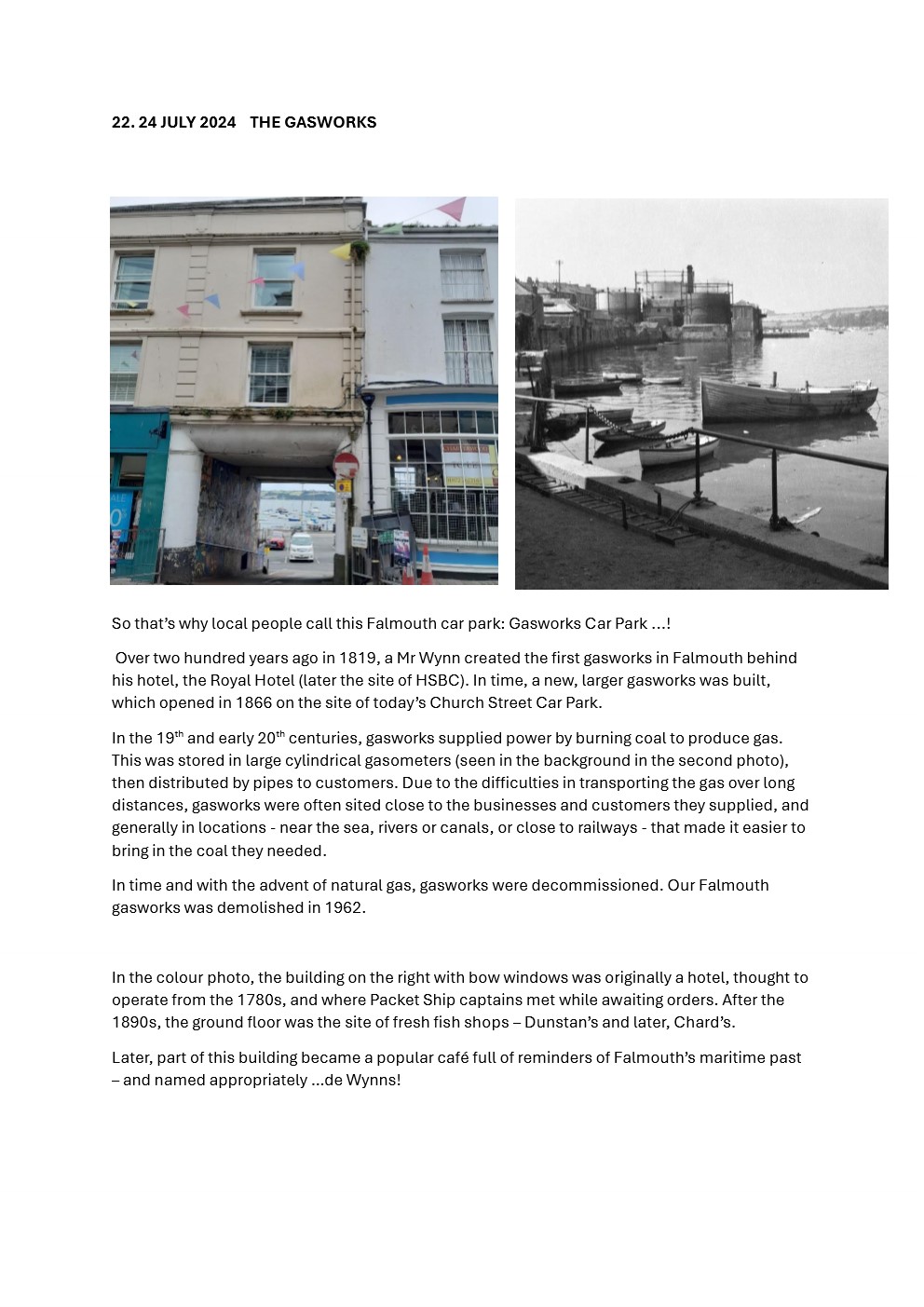
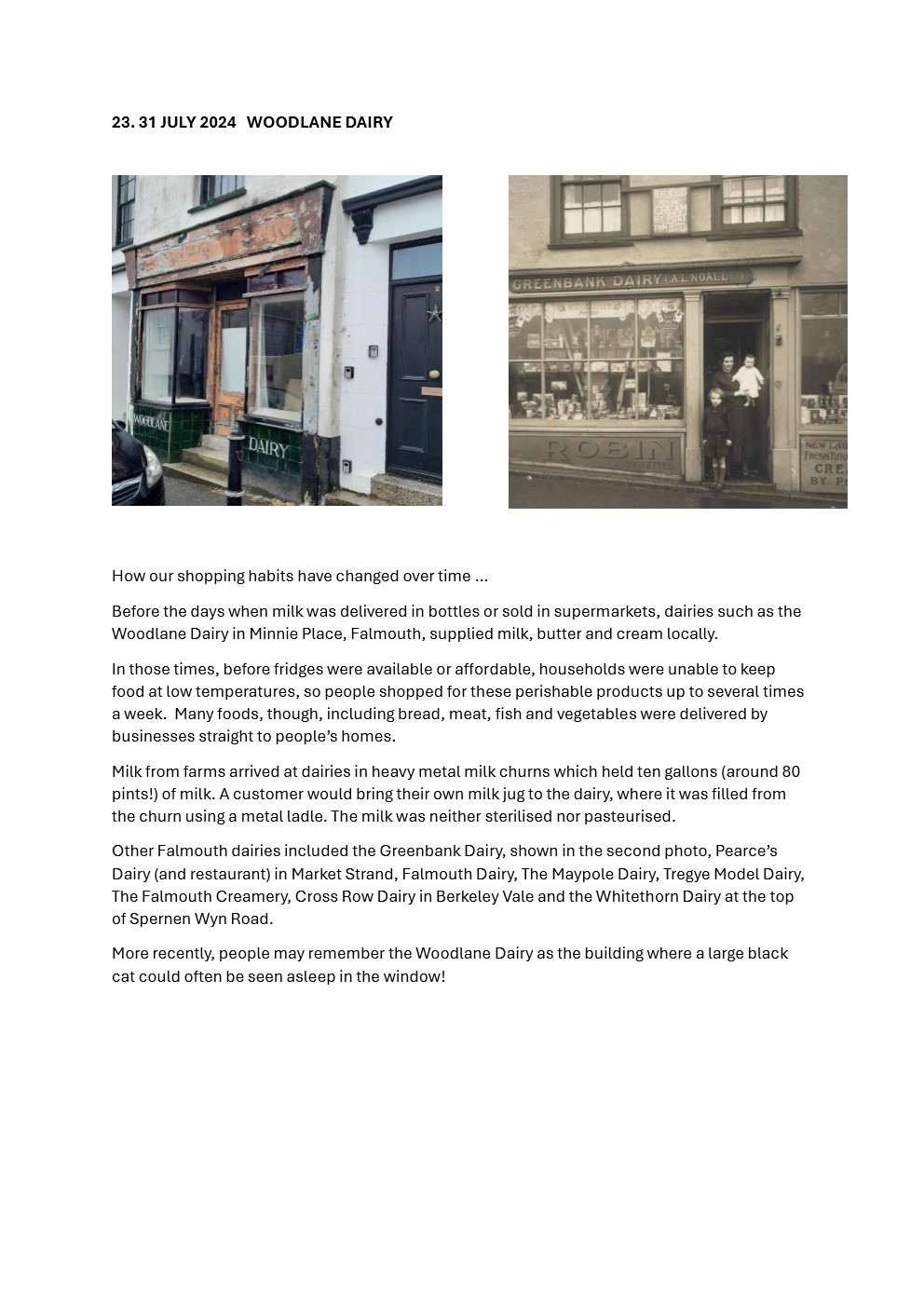
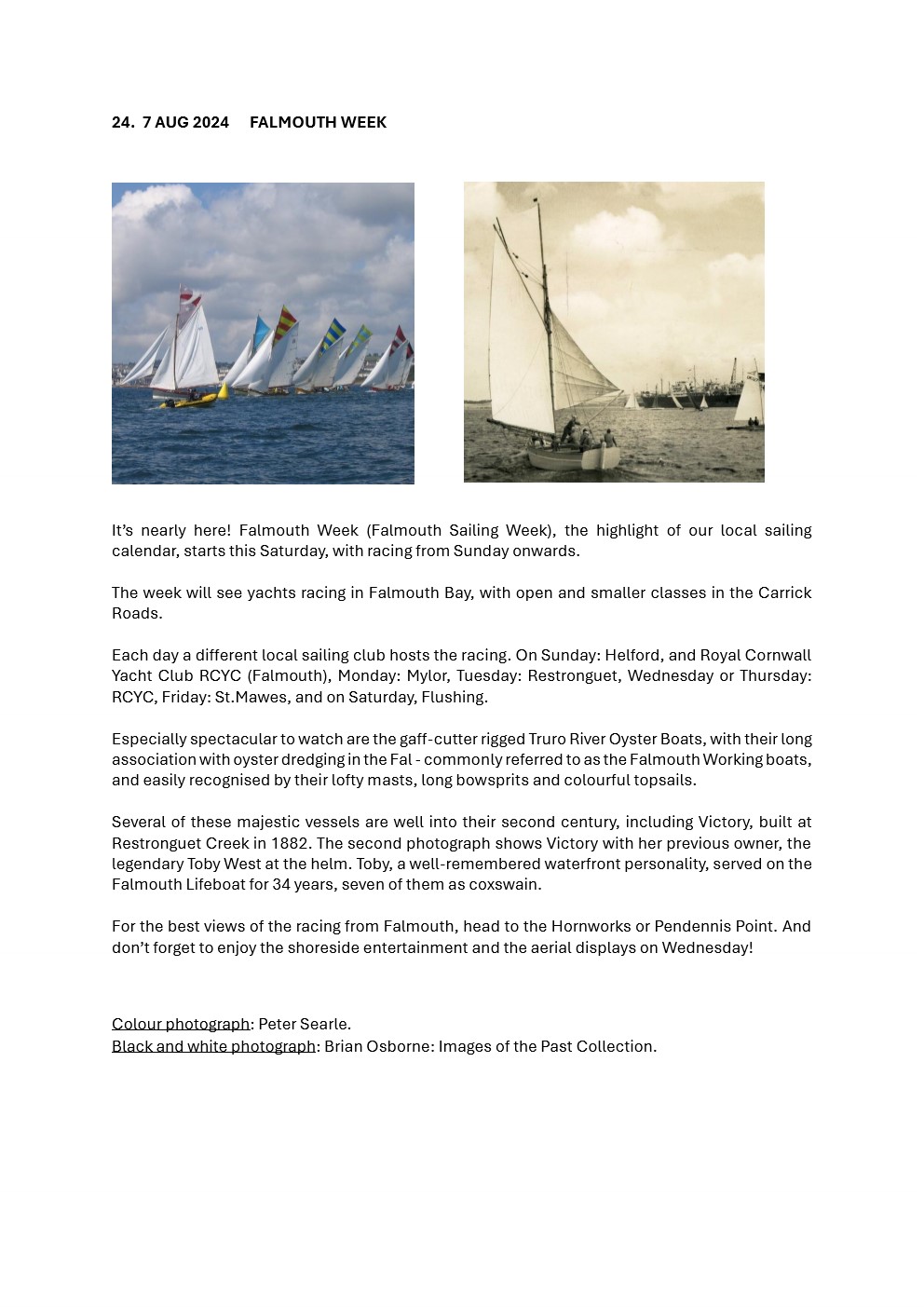
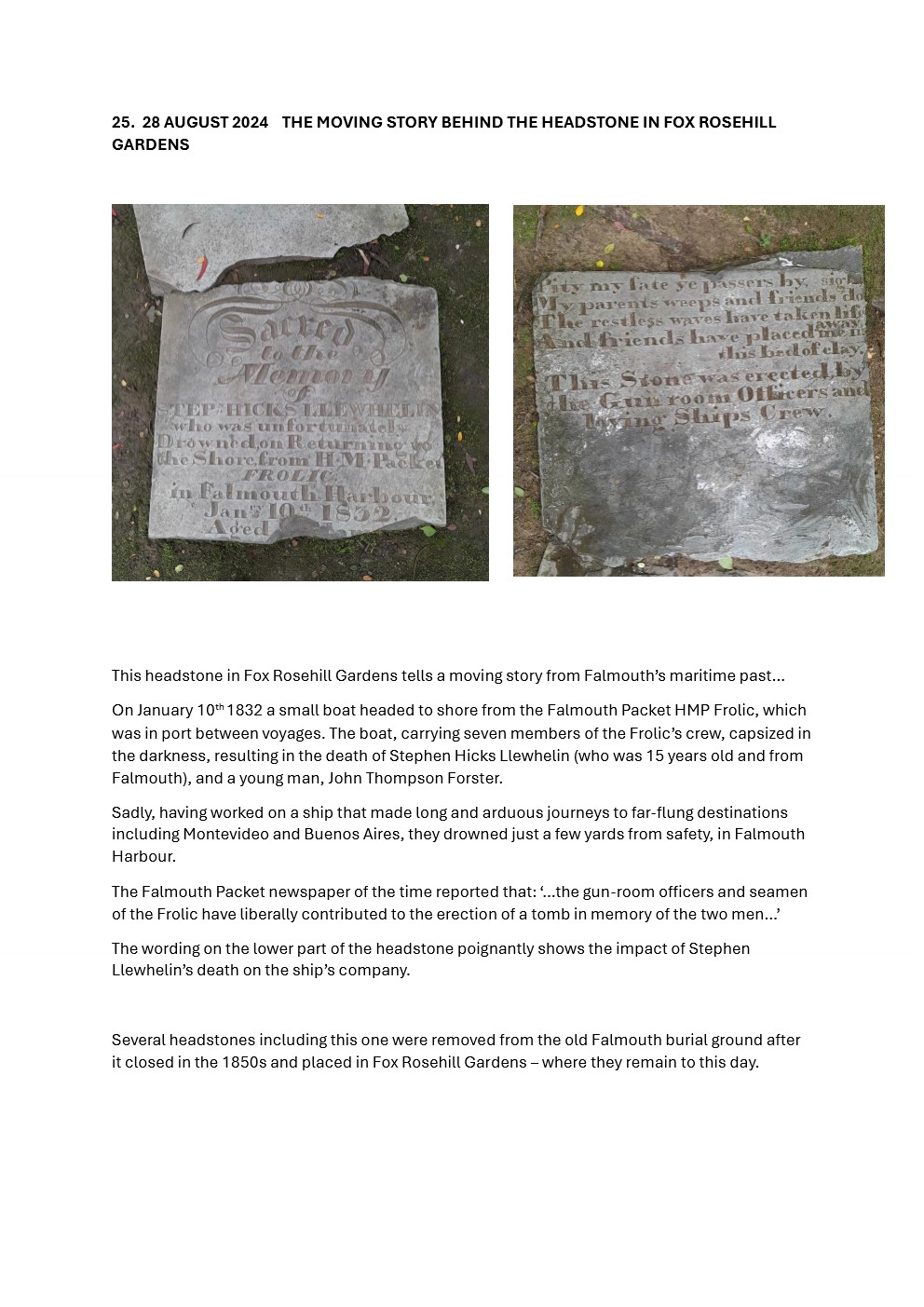
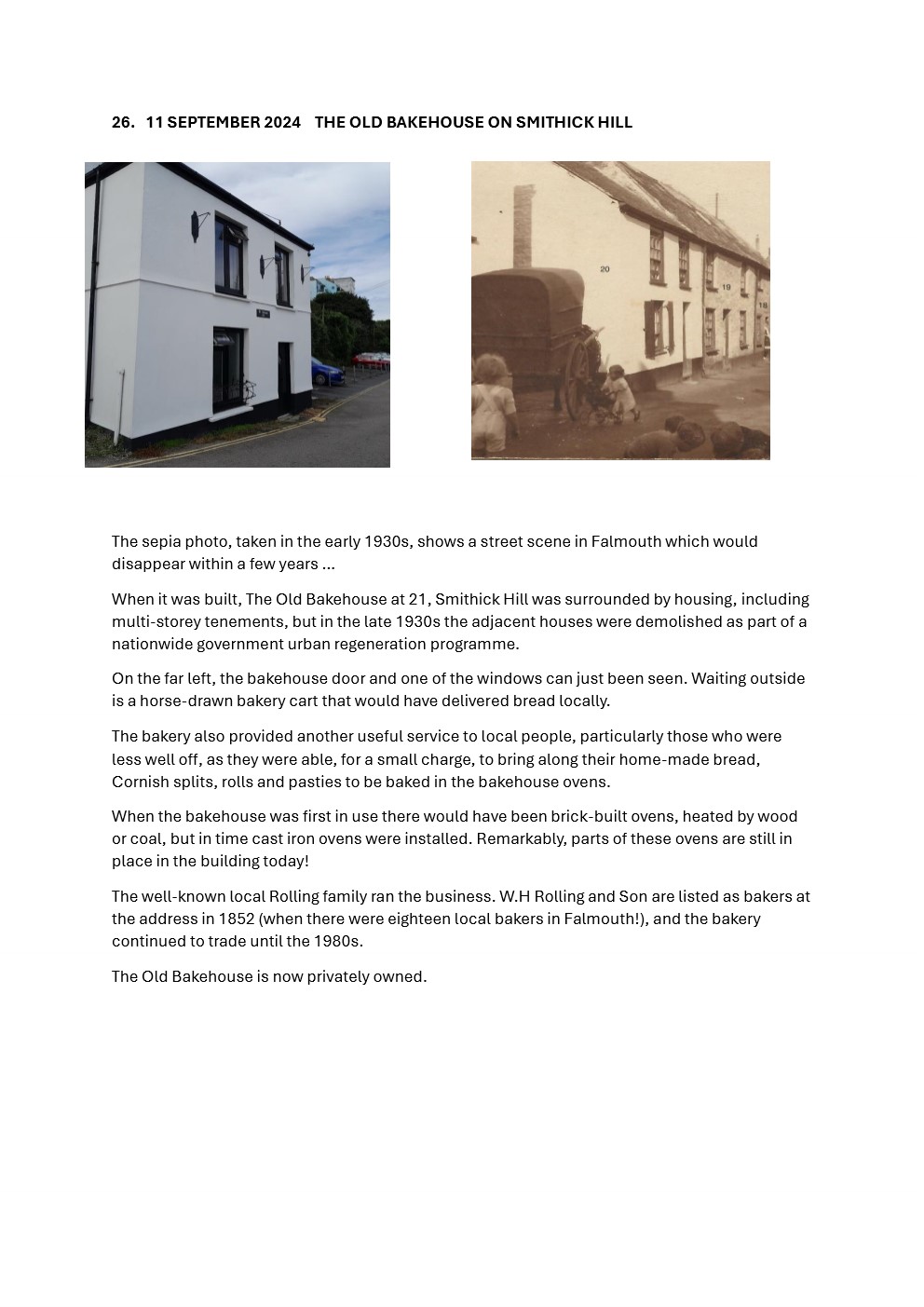
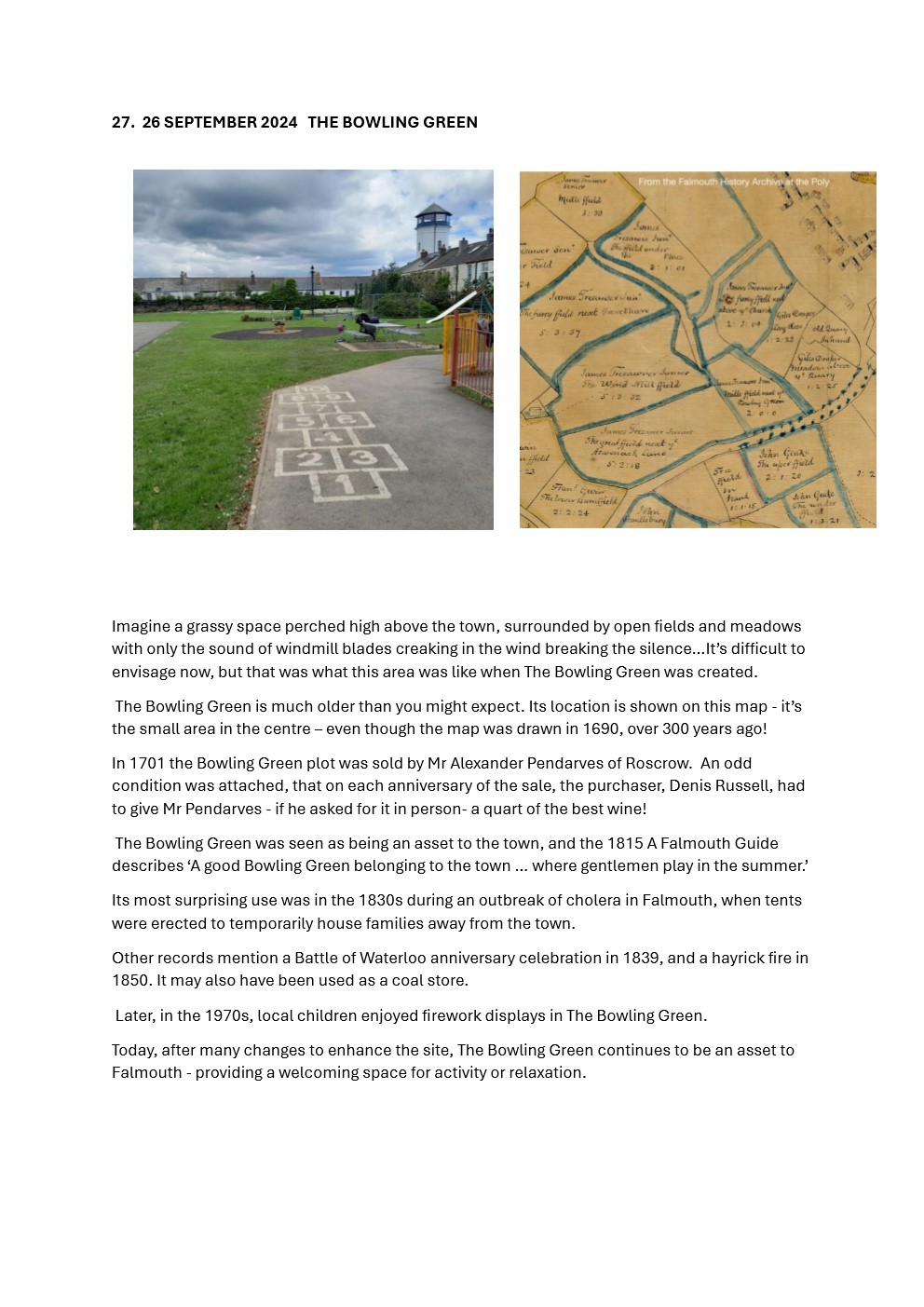
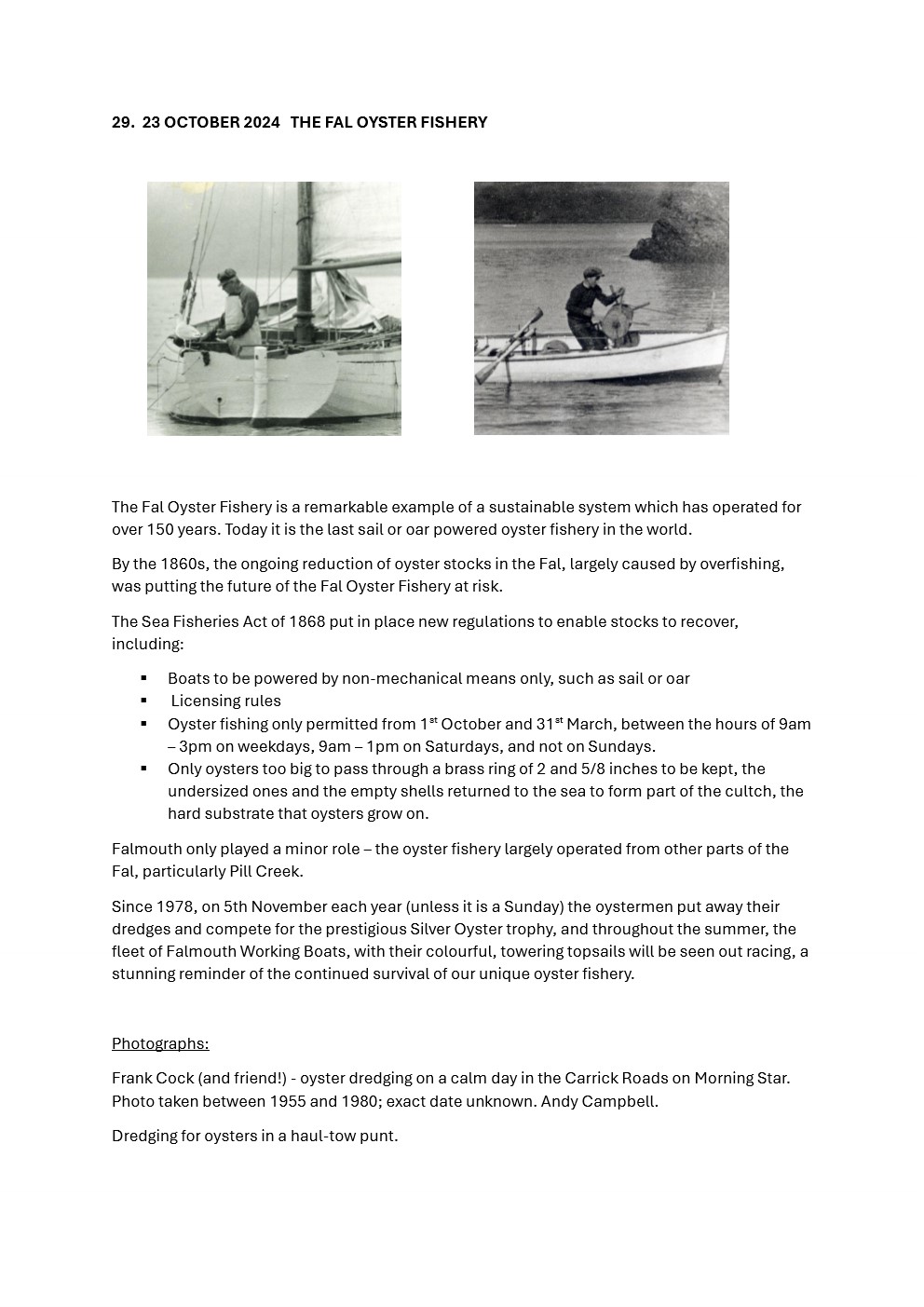
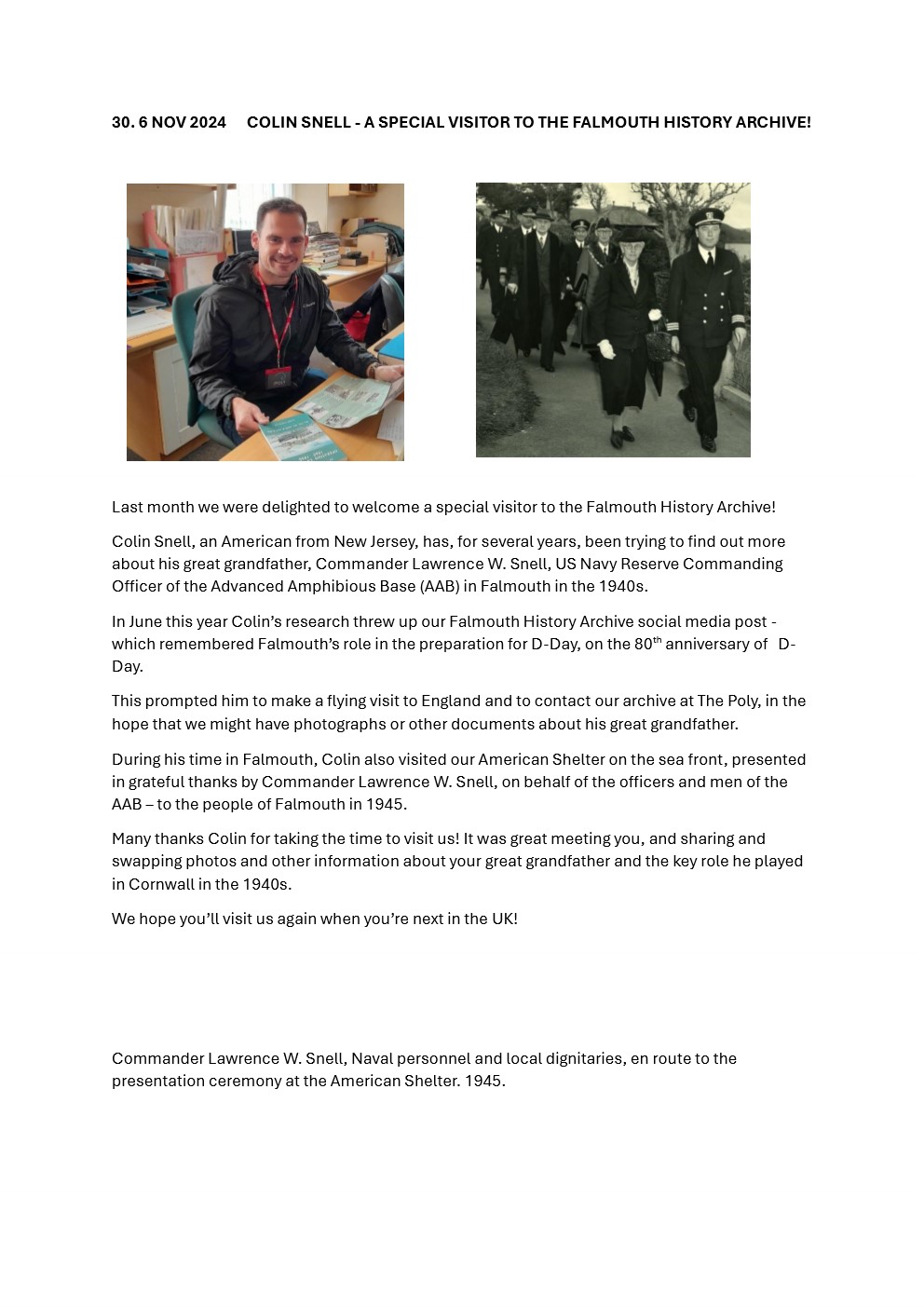
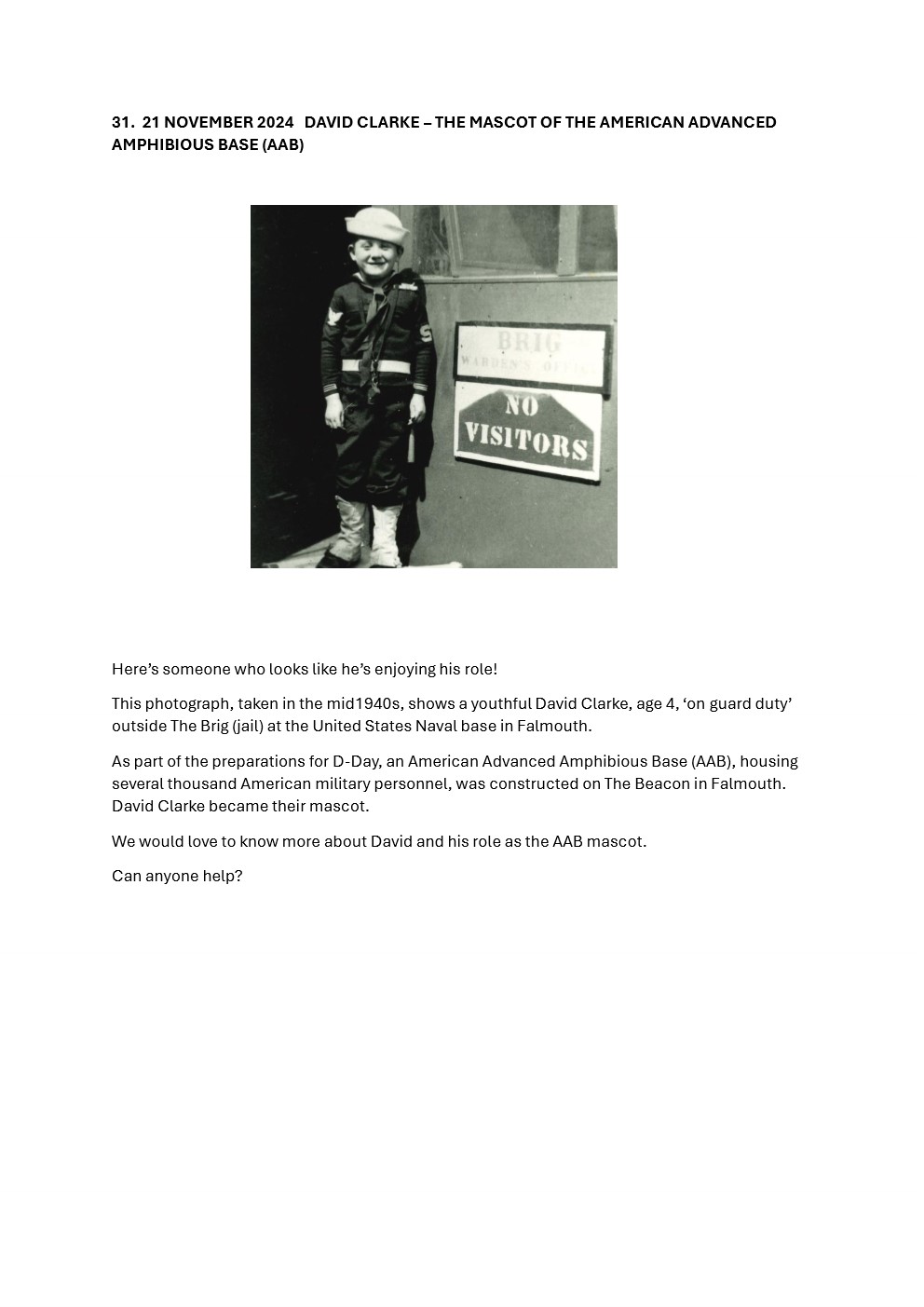
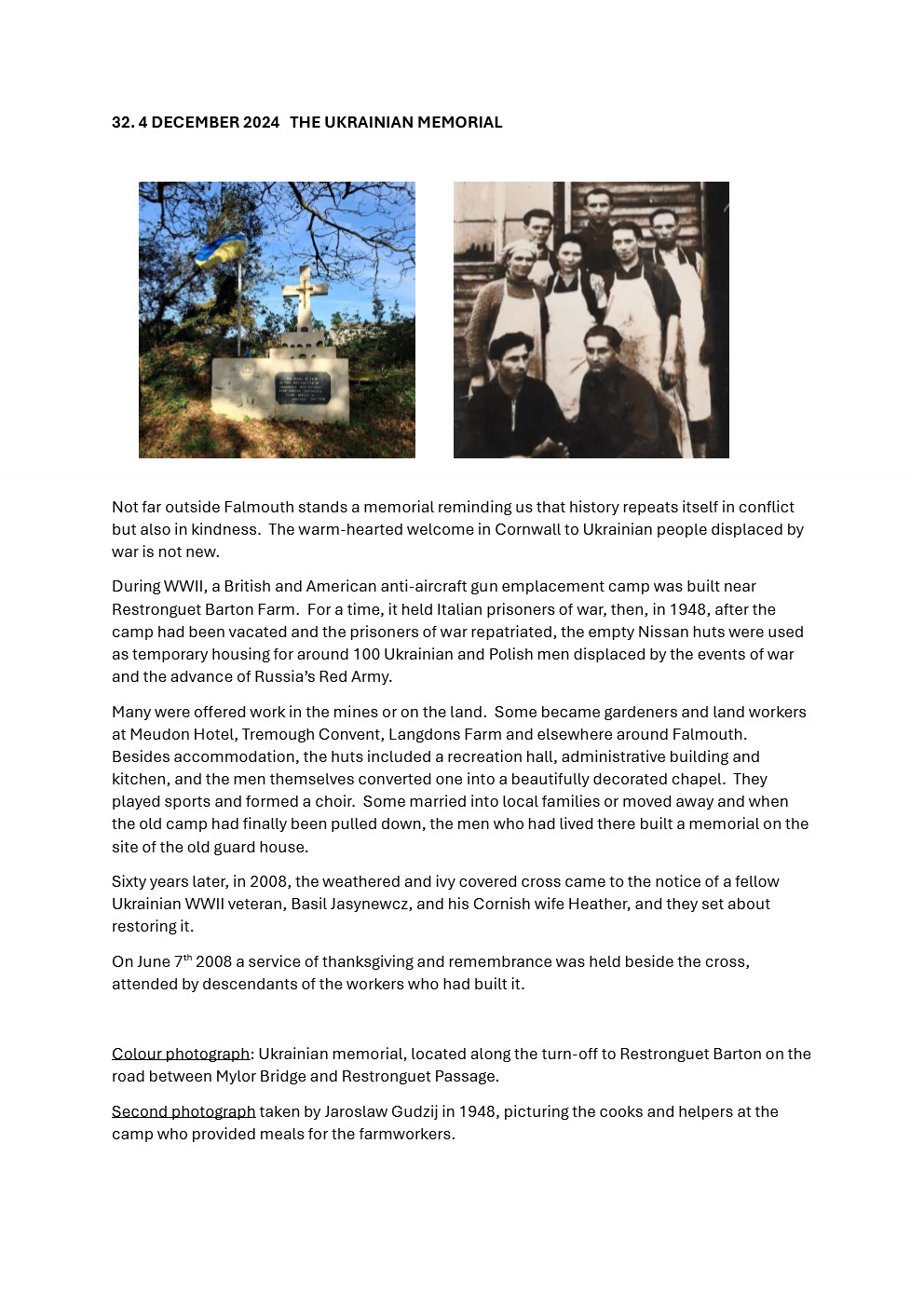
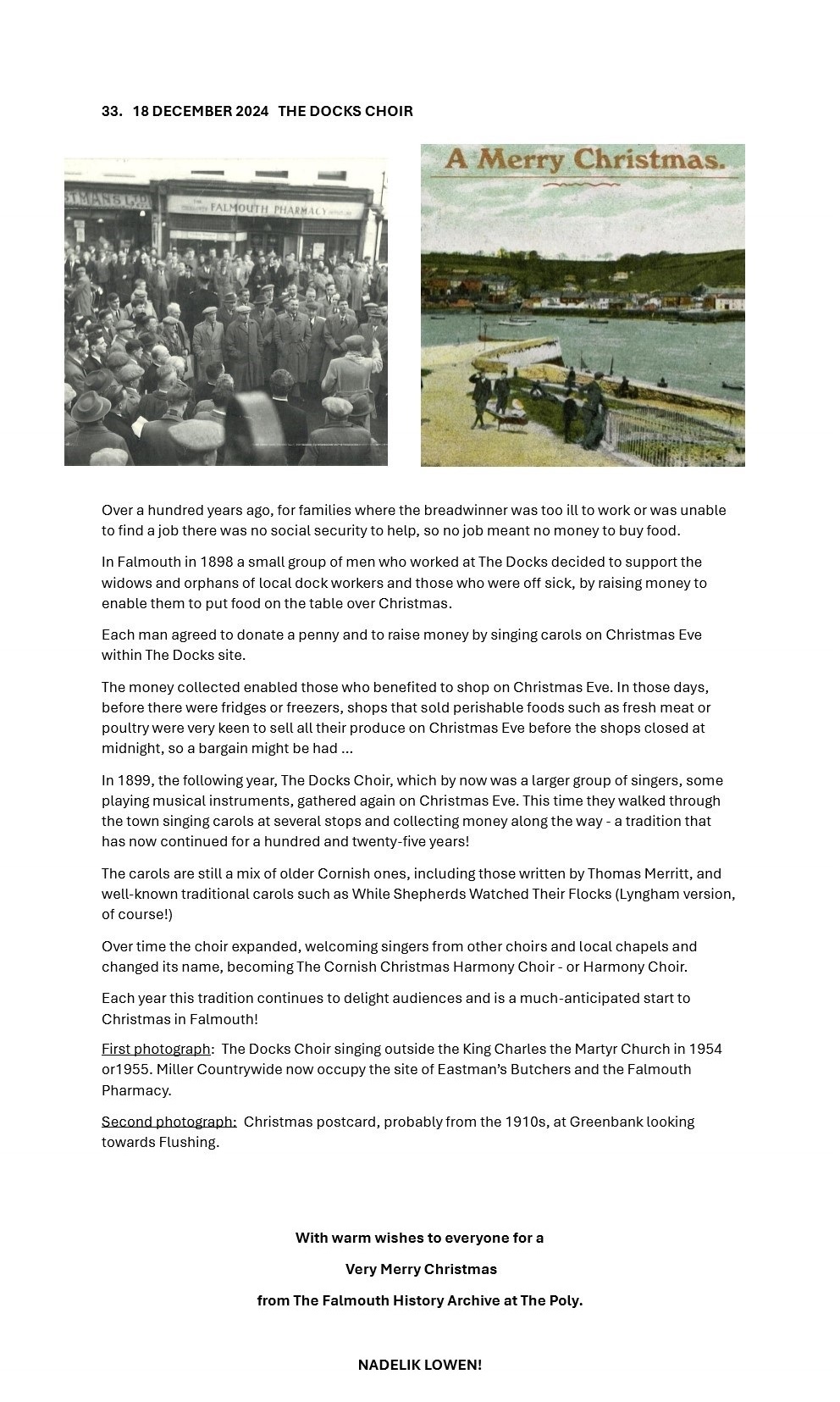

 Calendar
Calendar